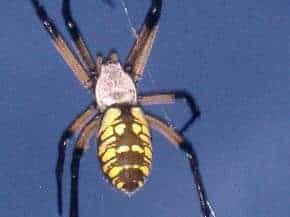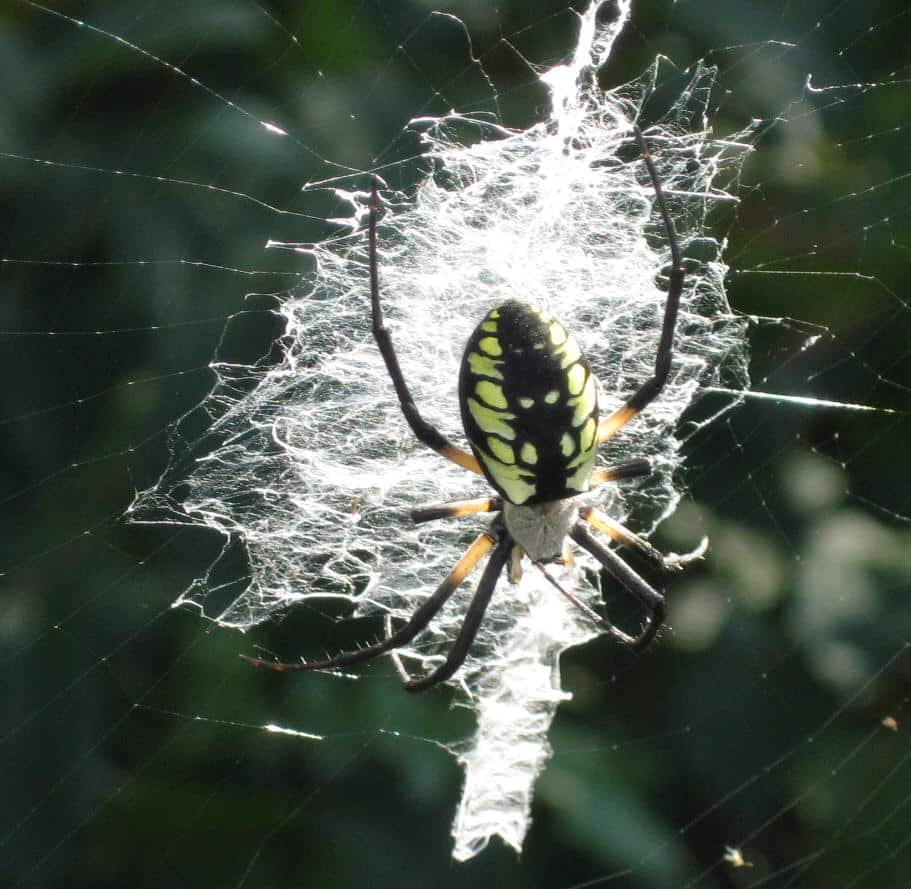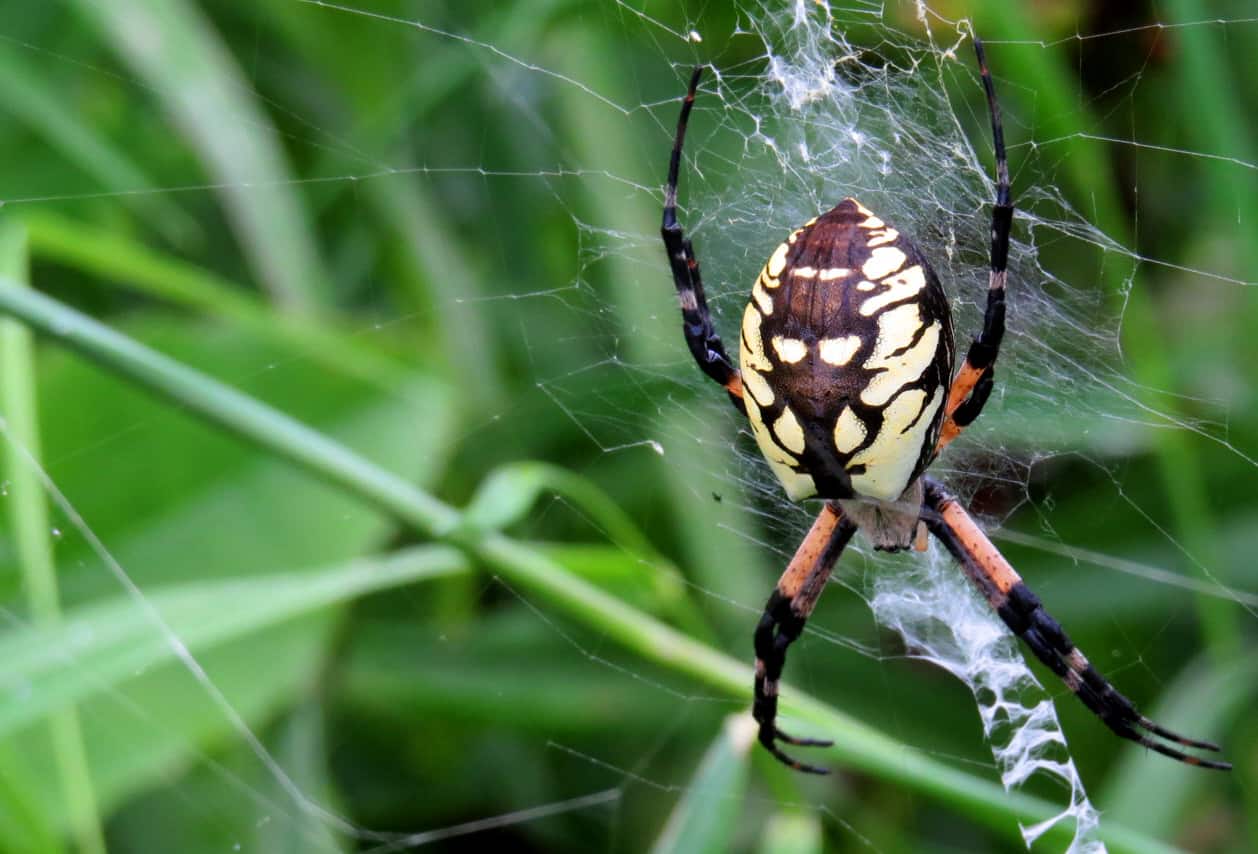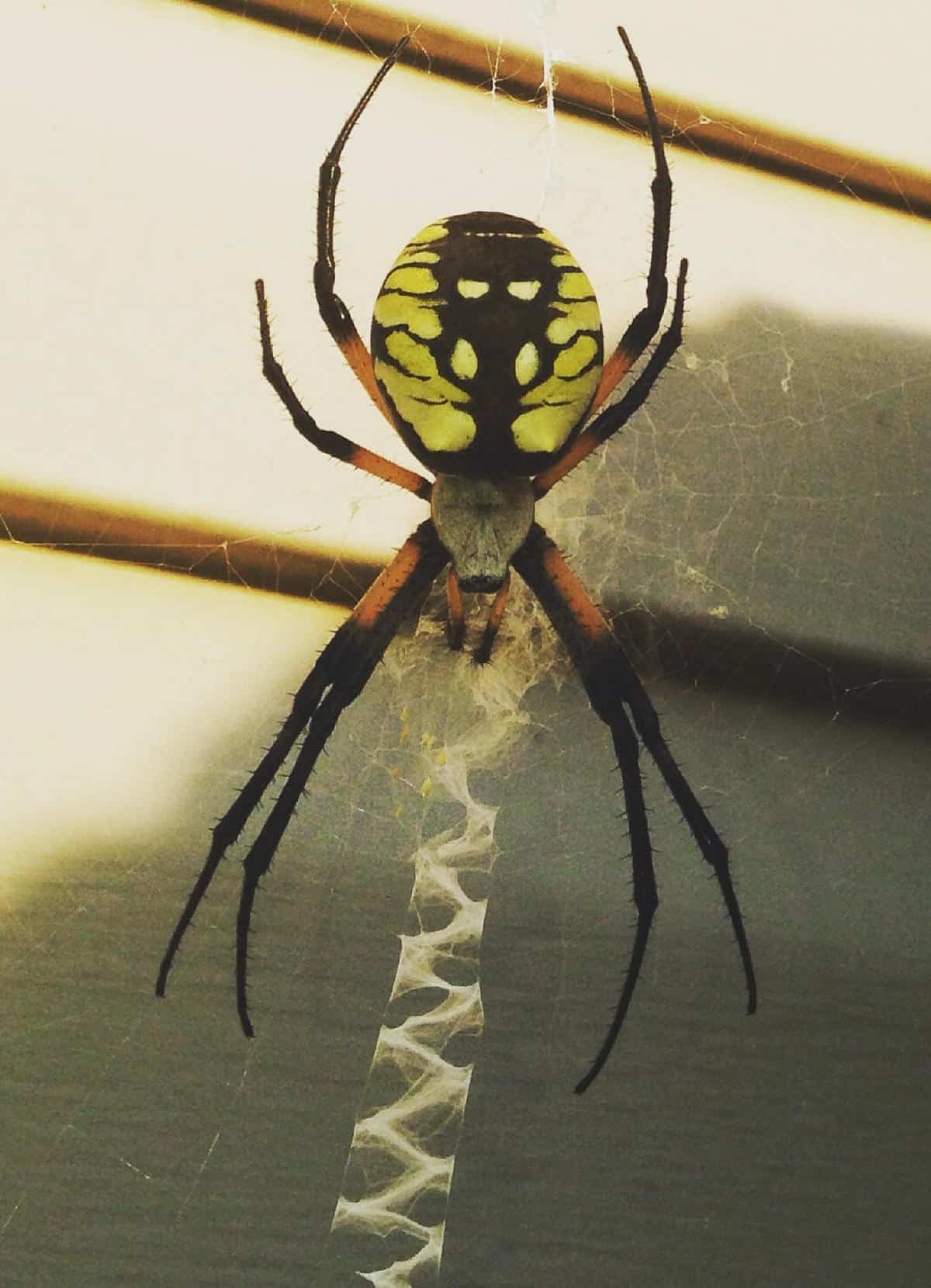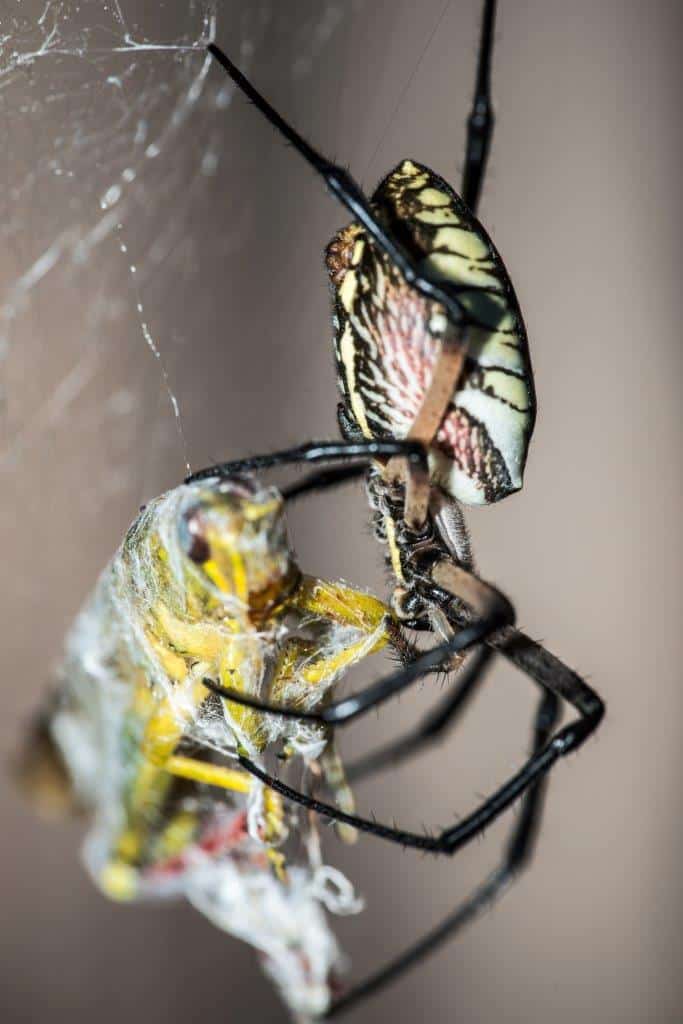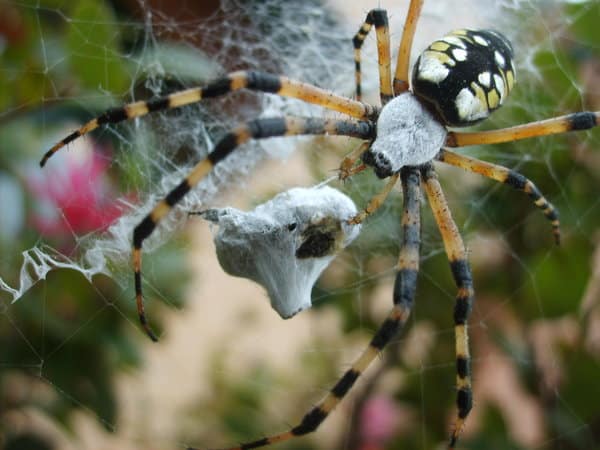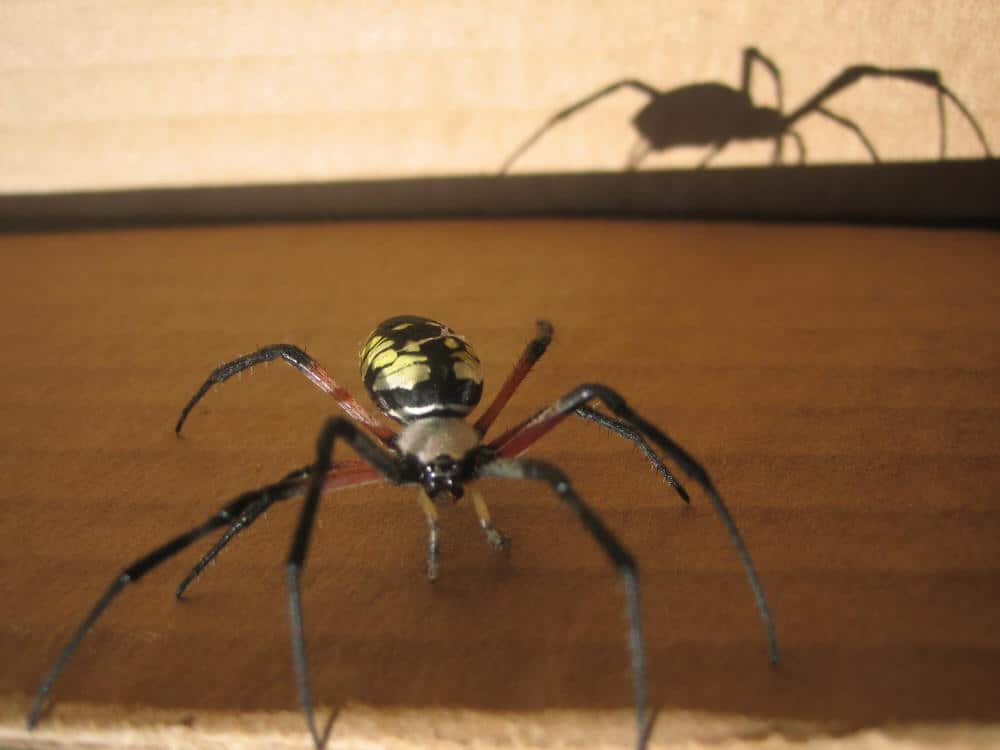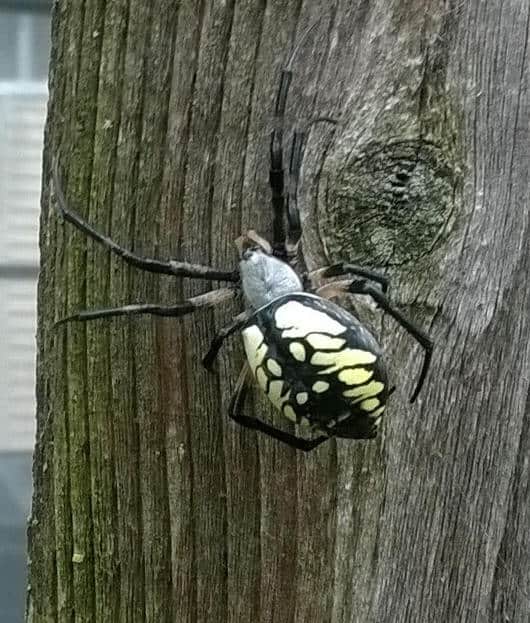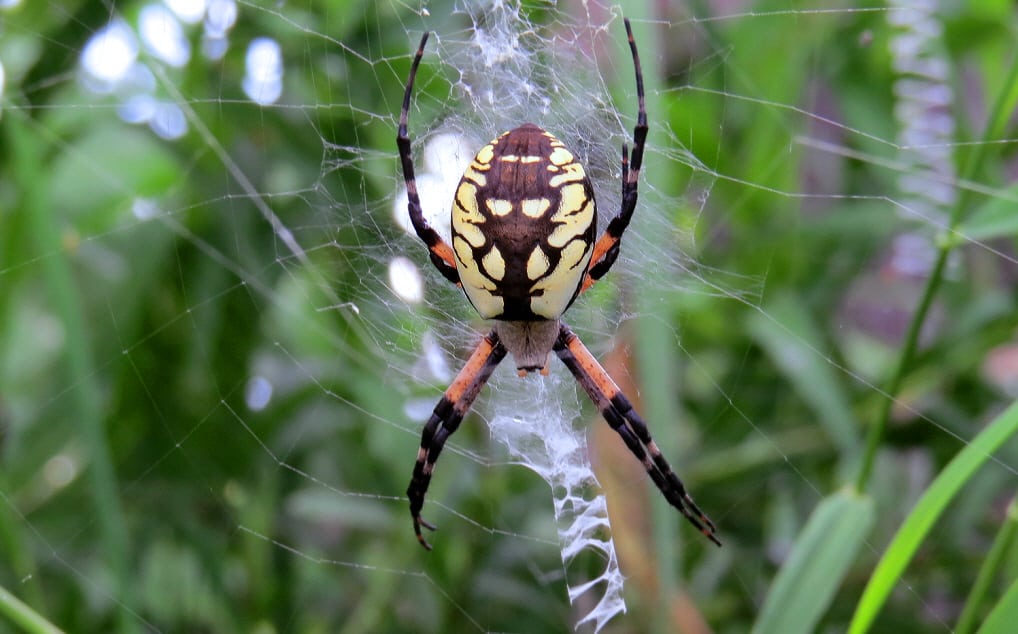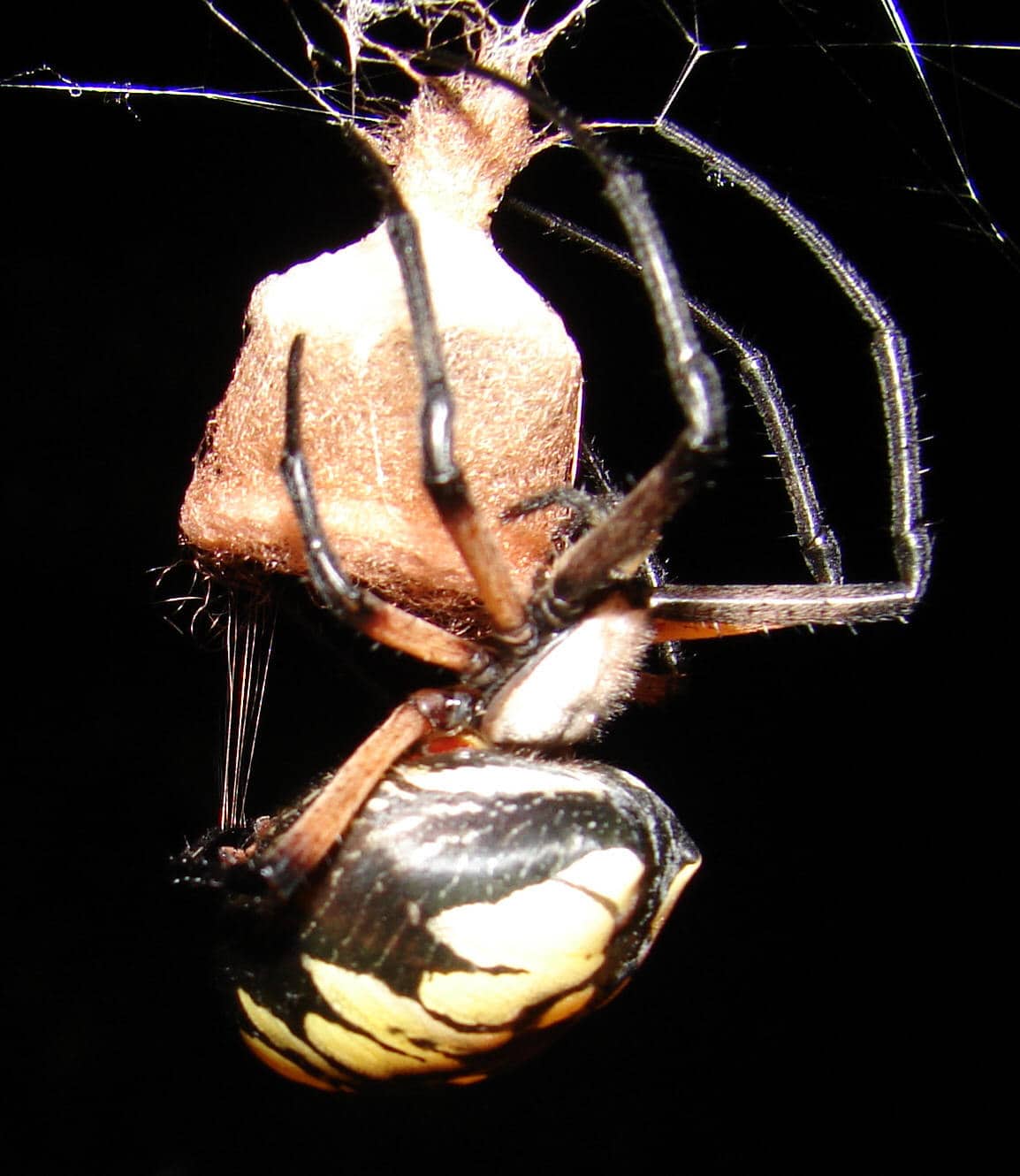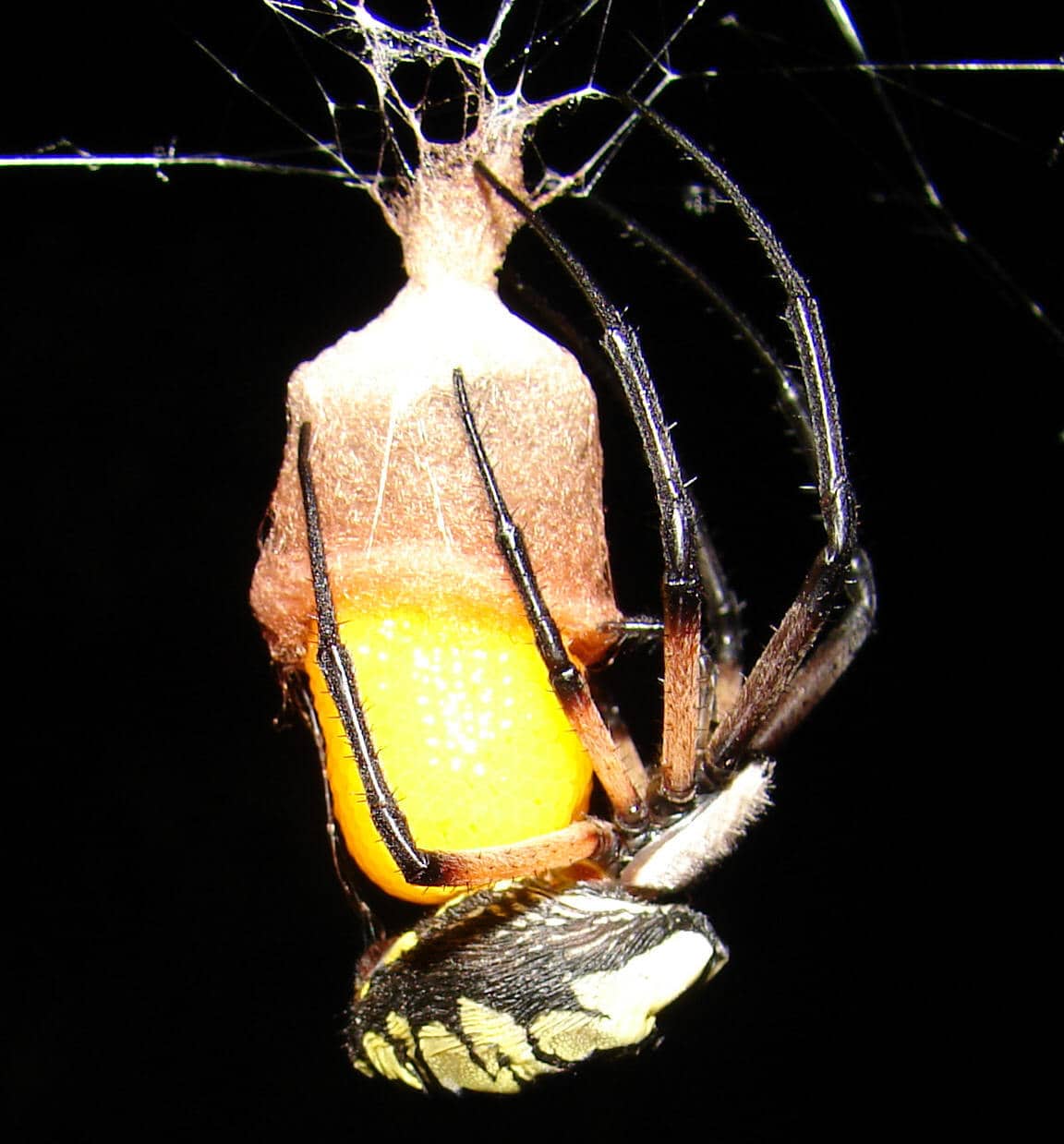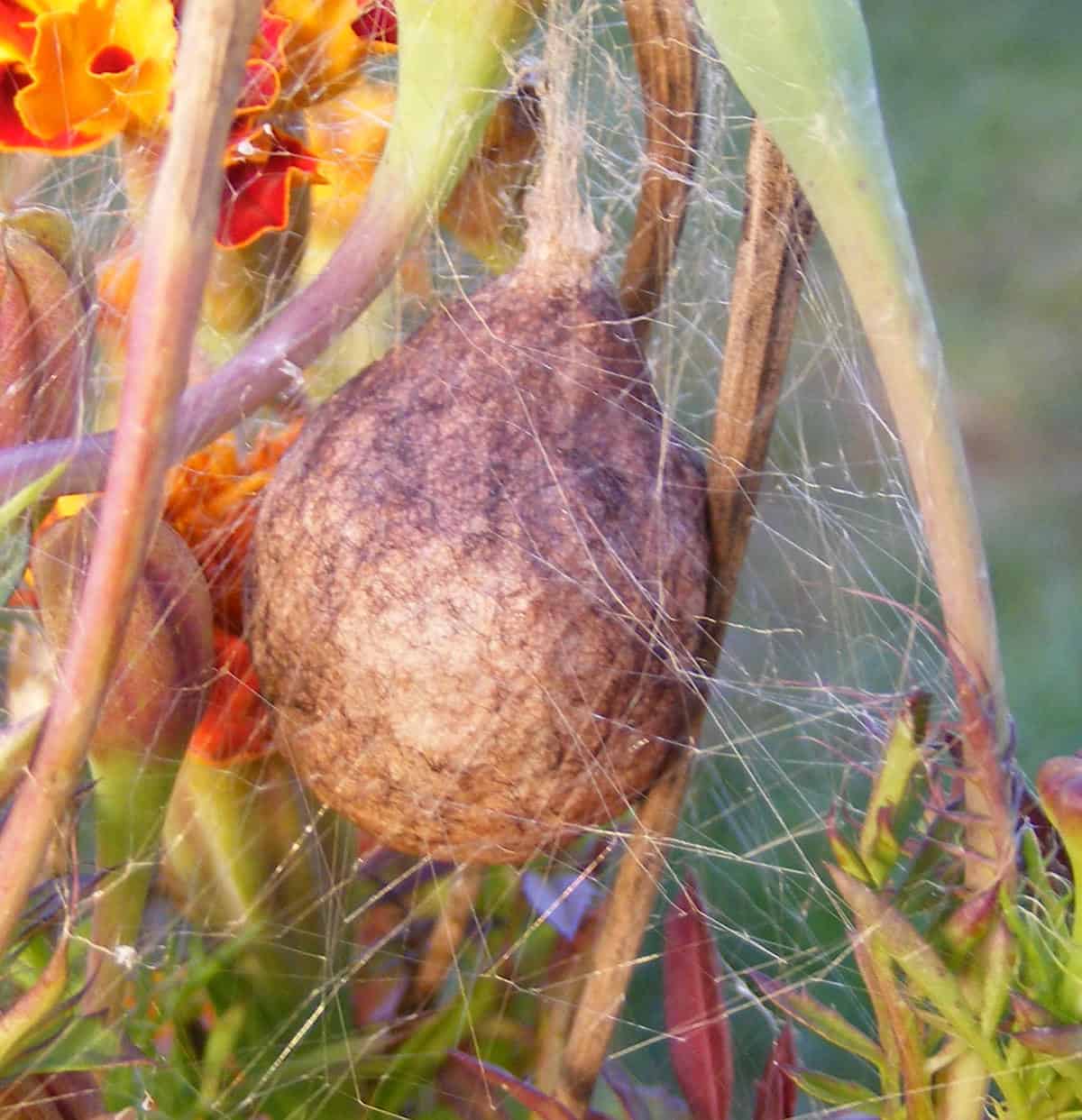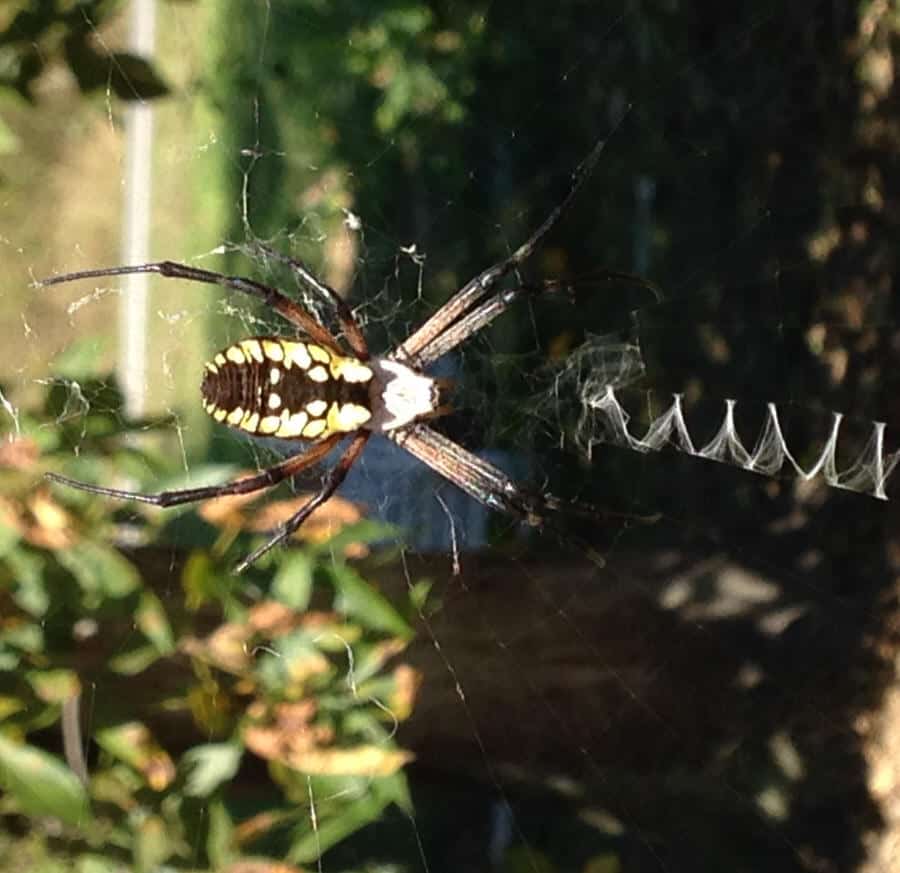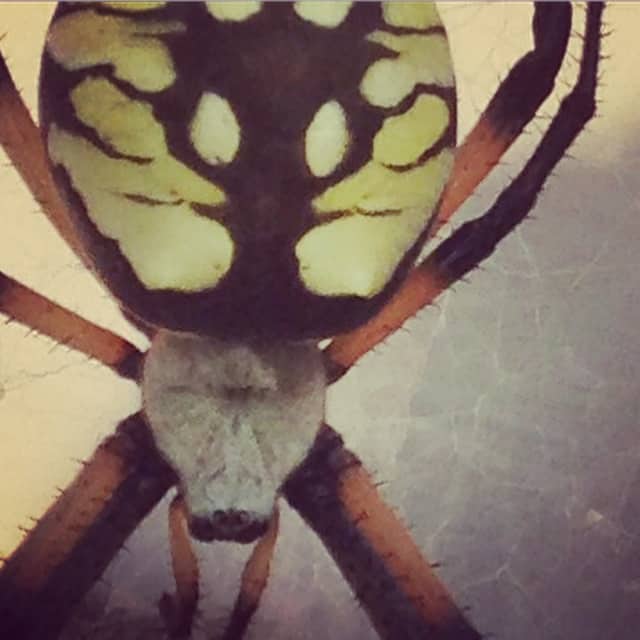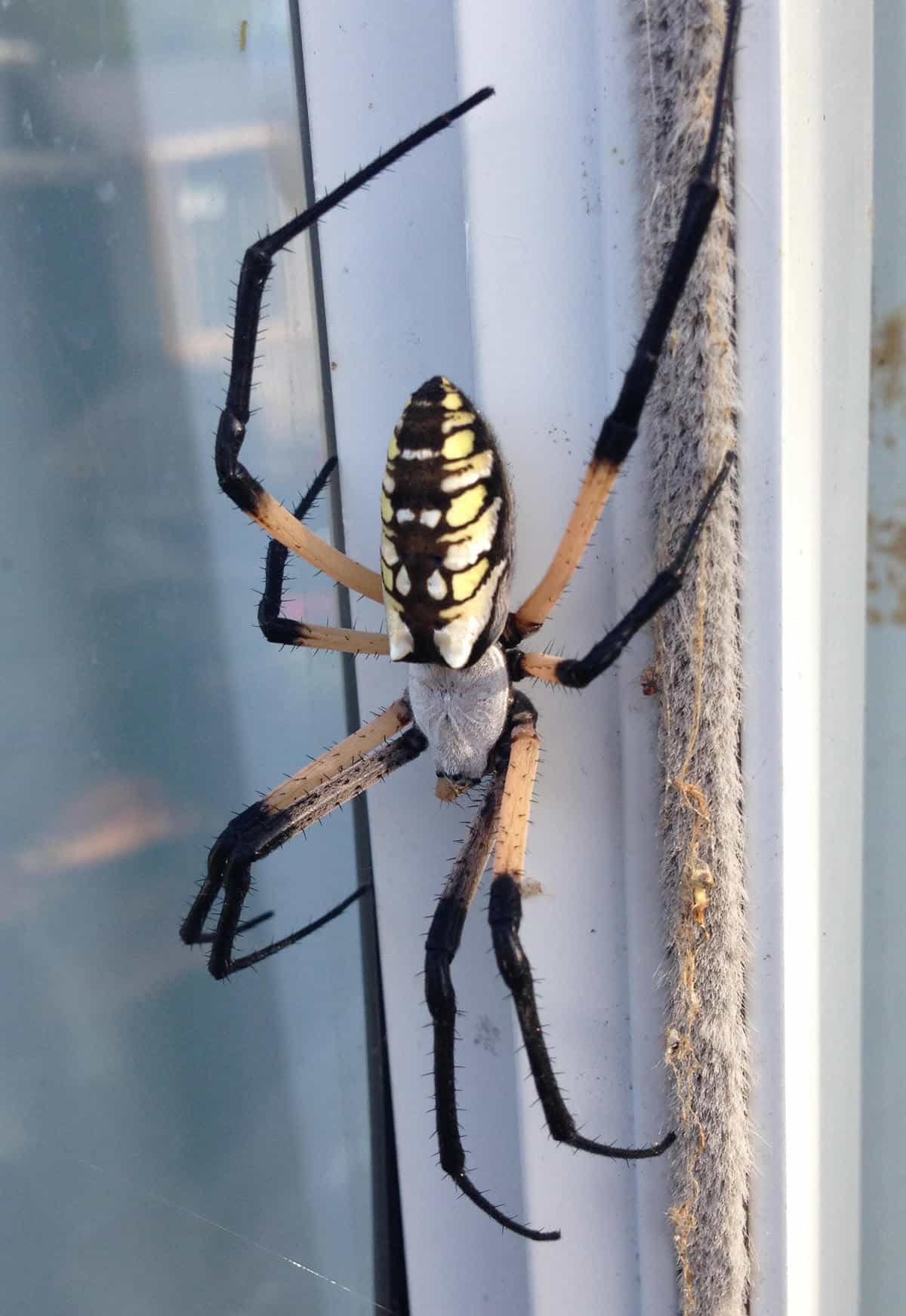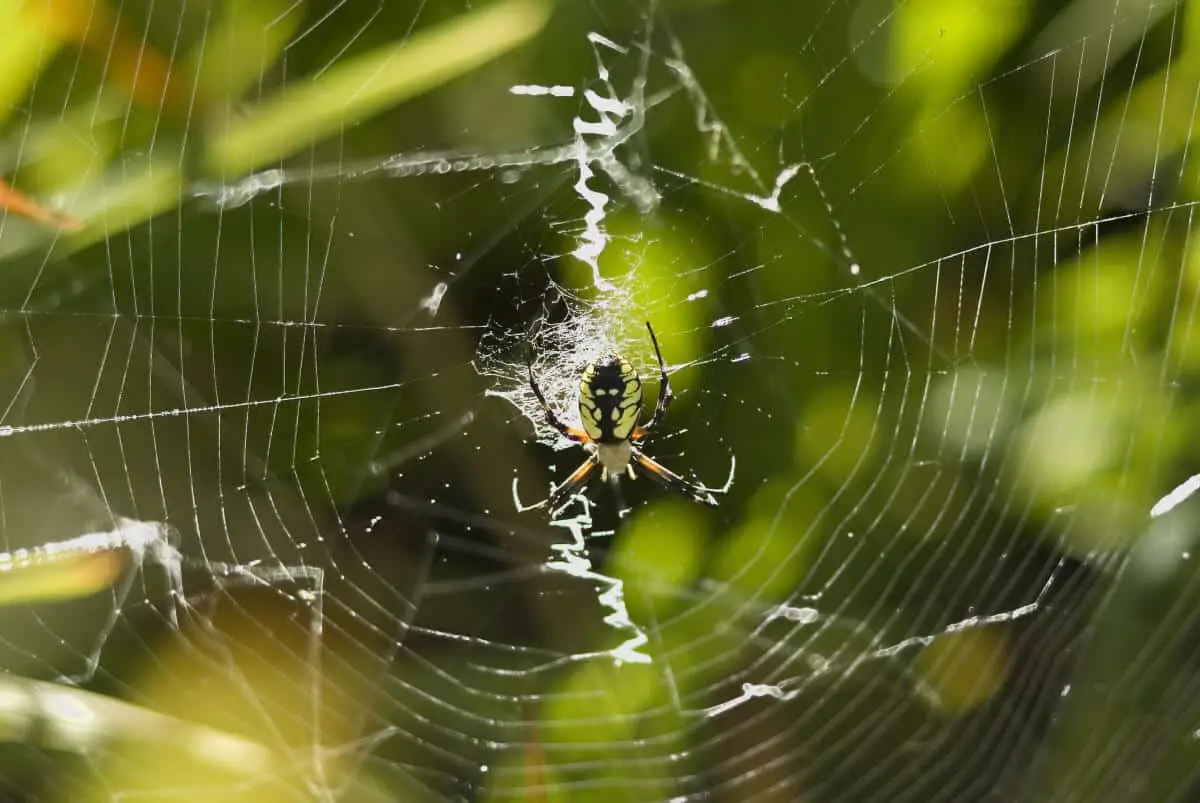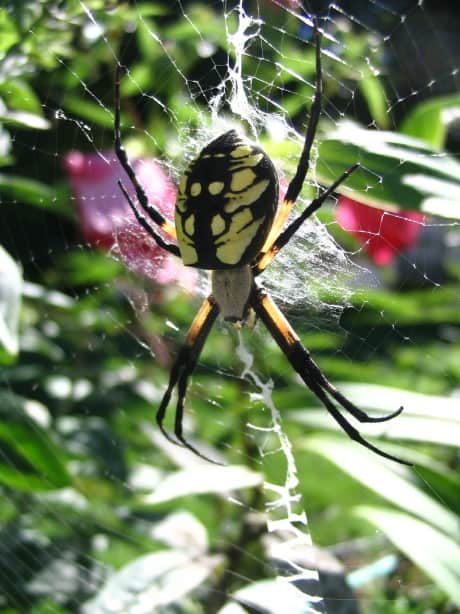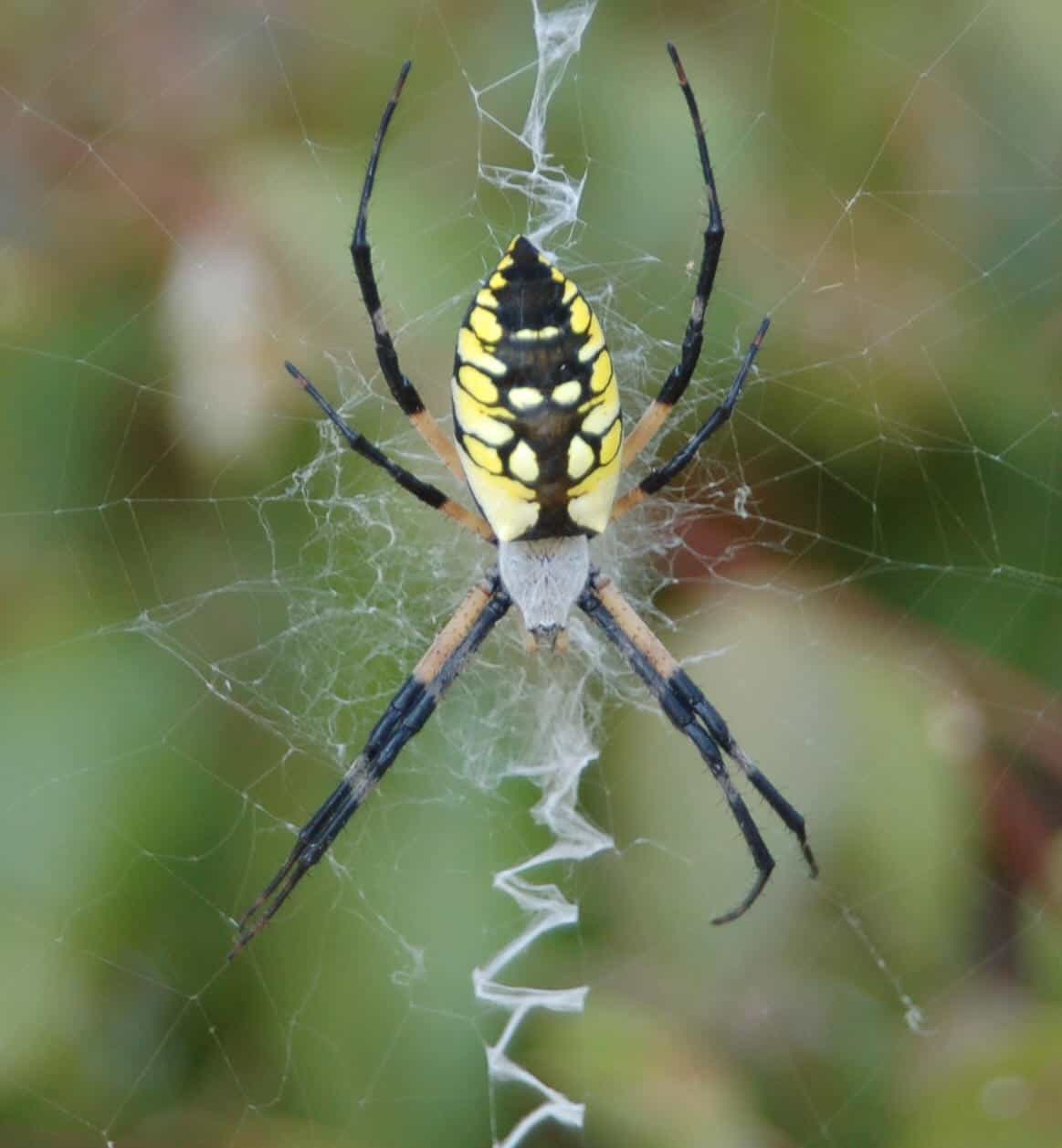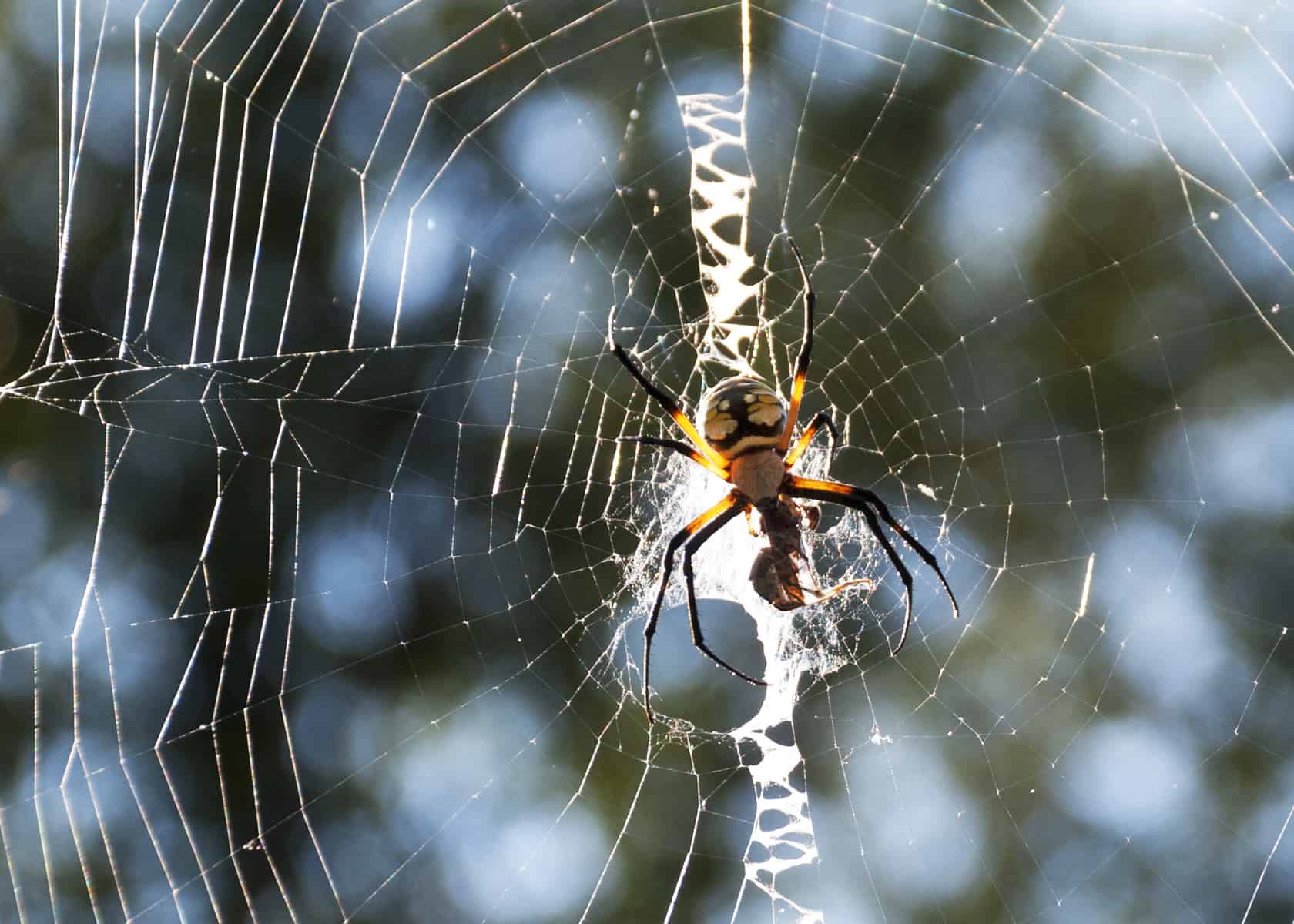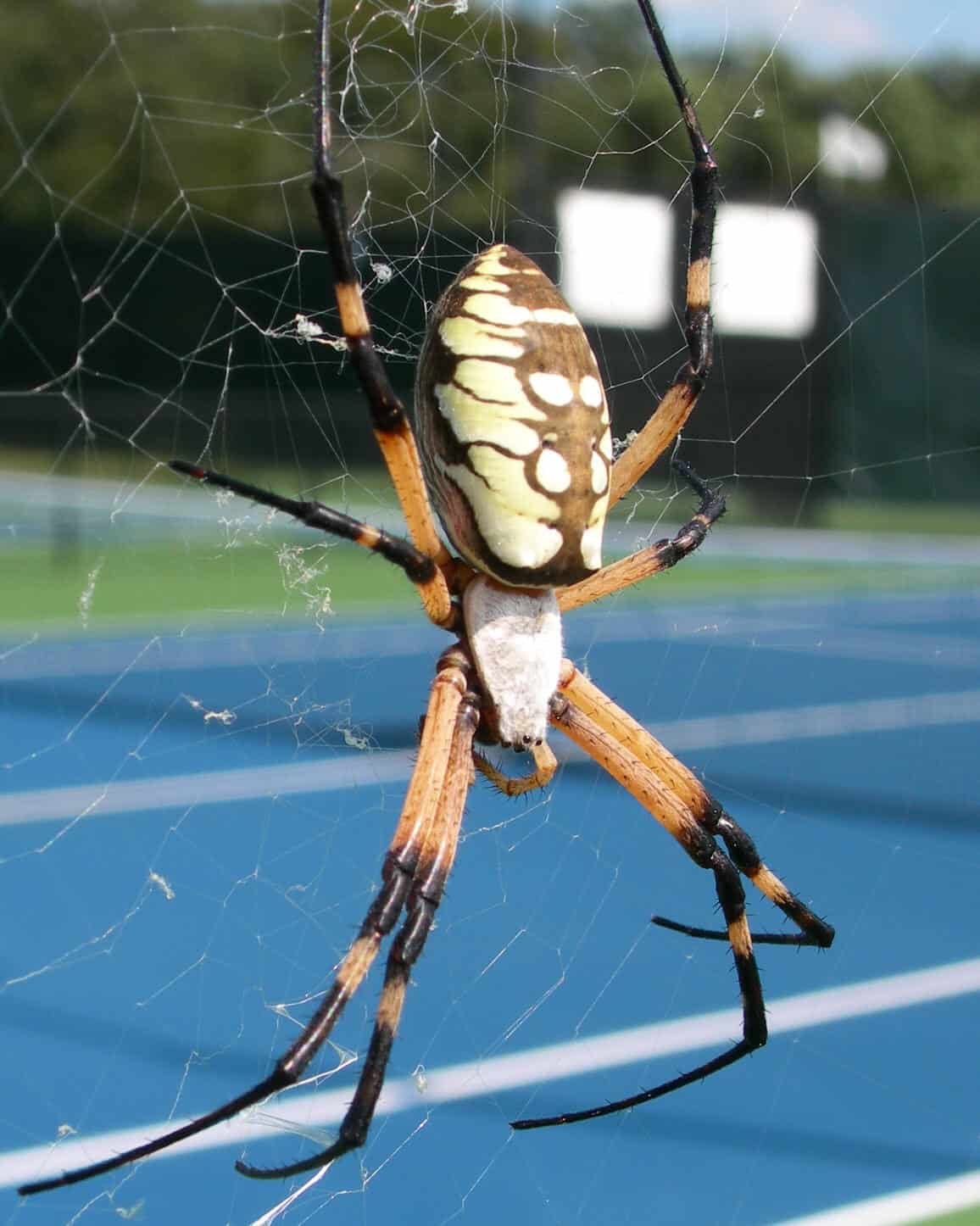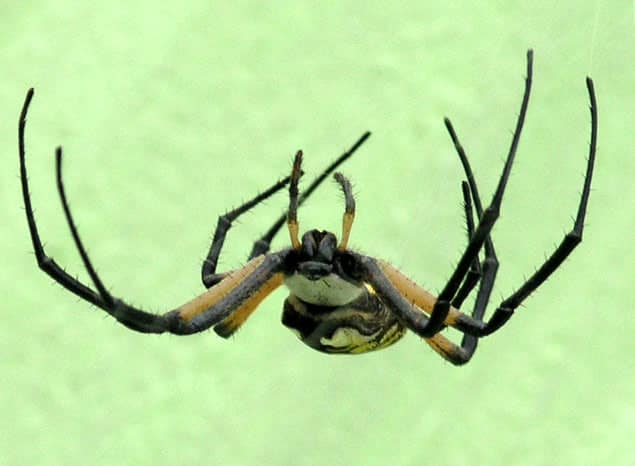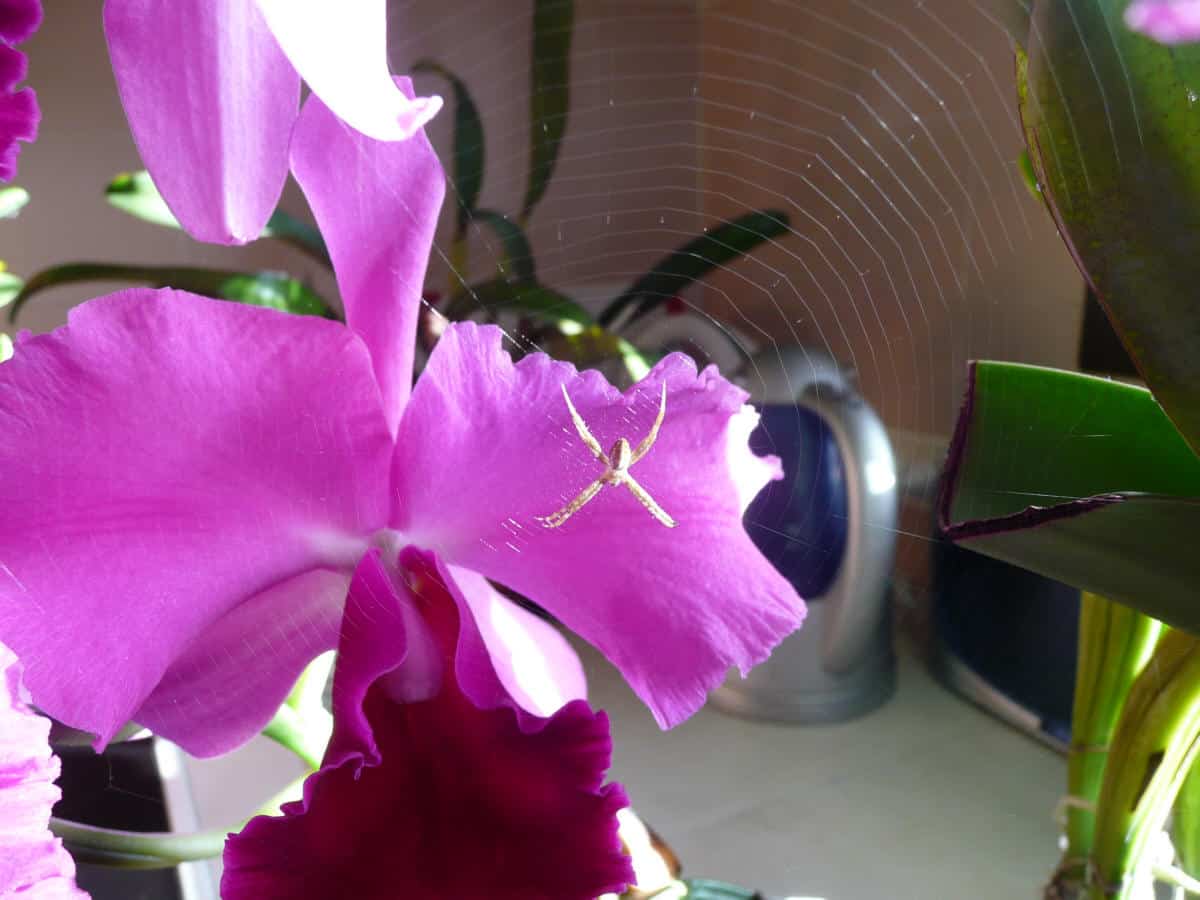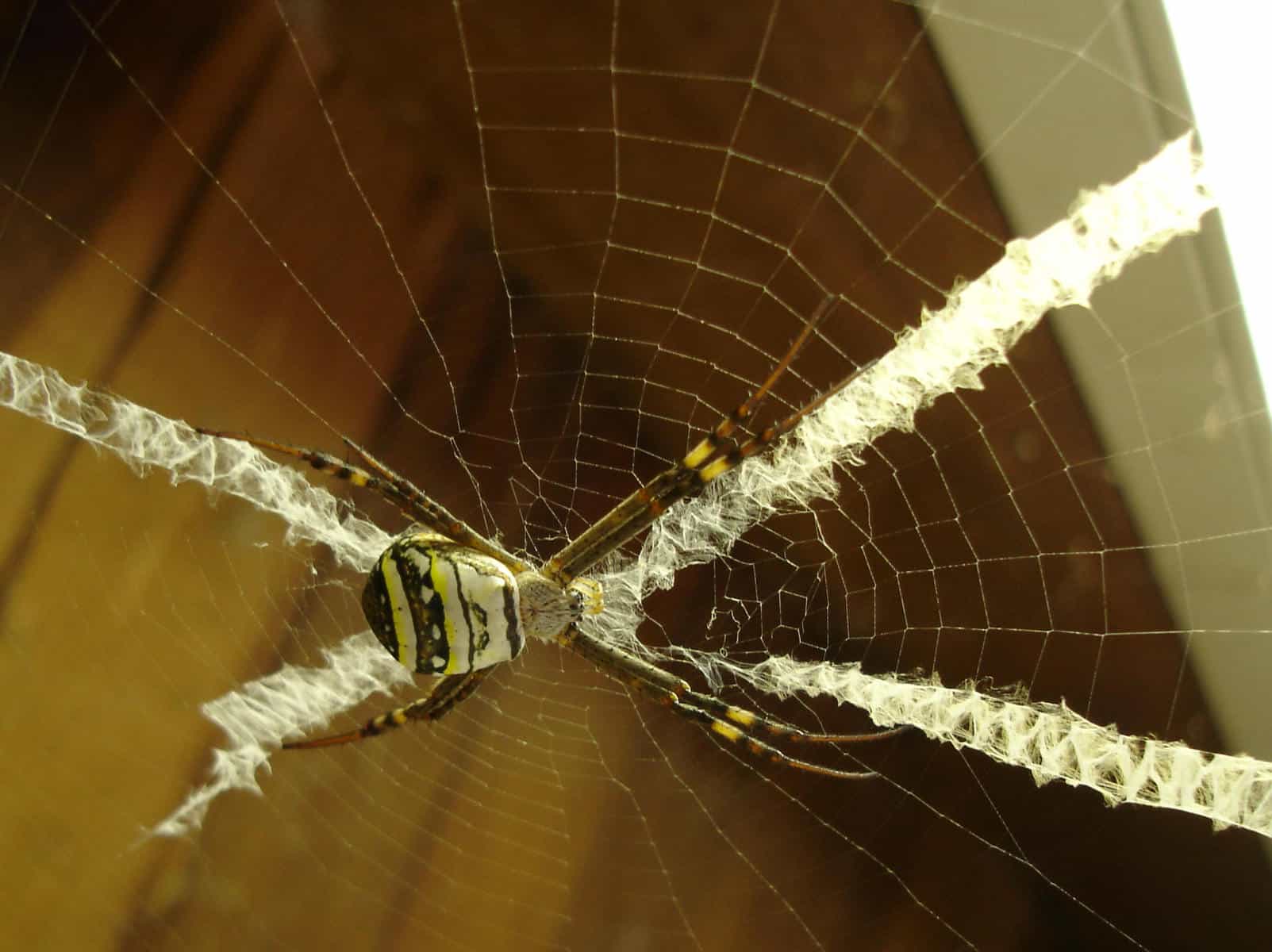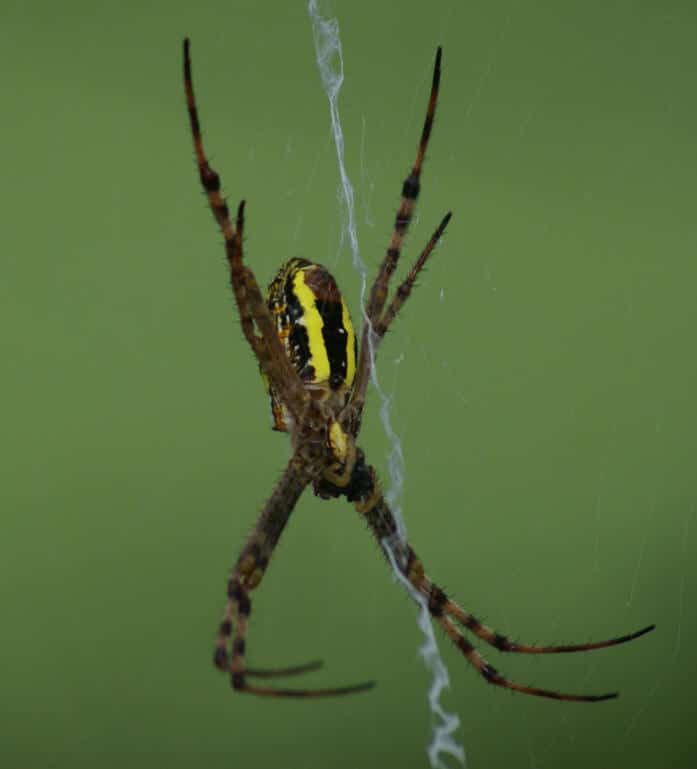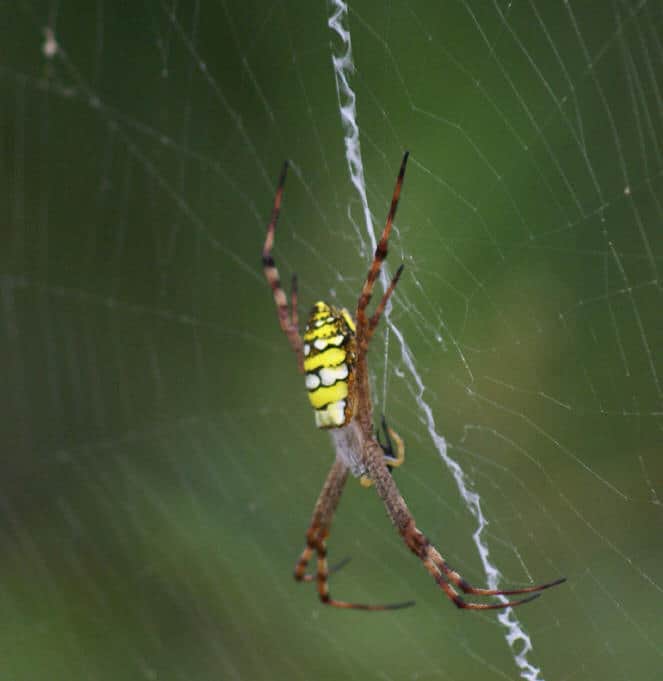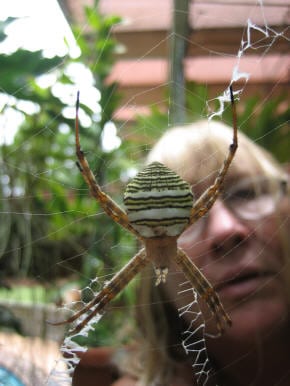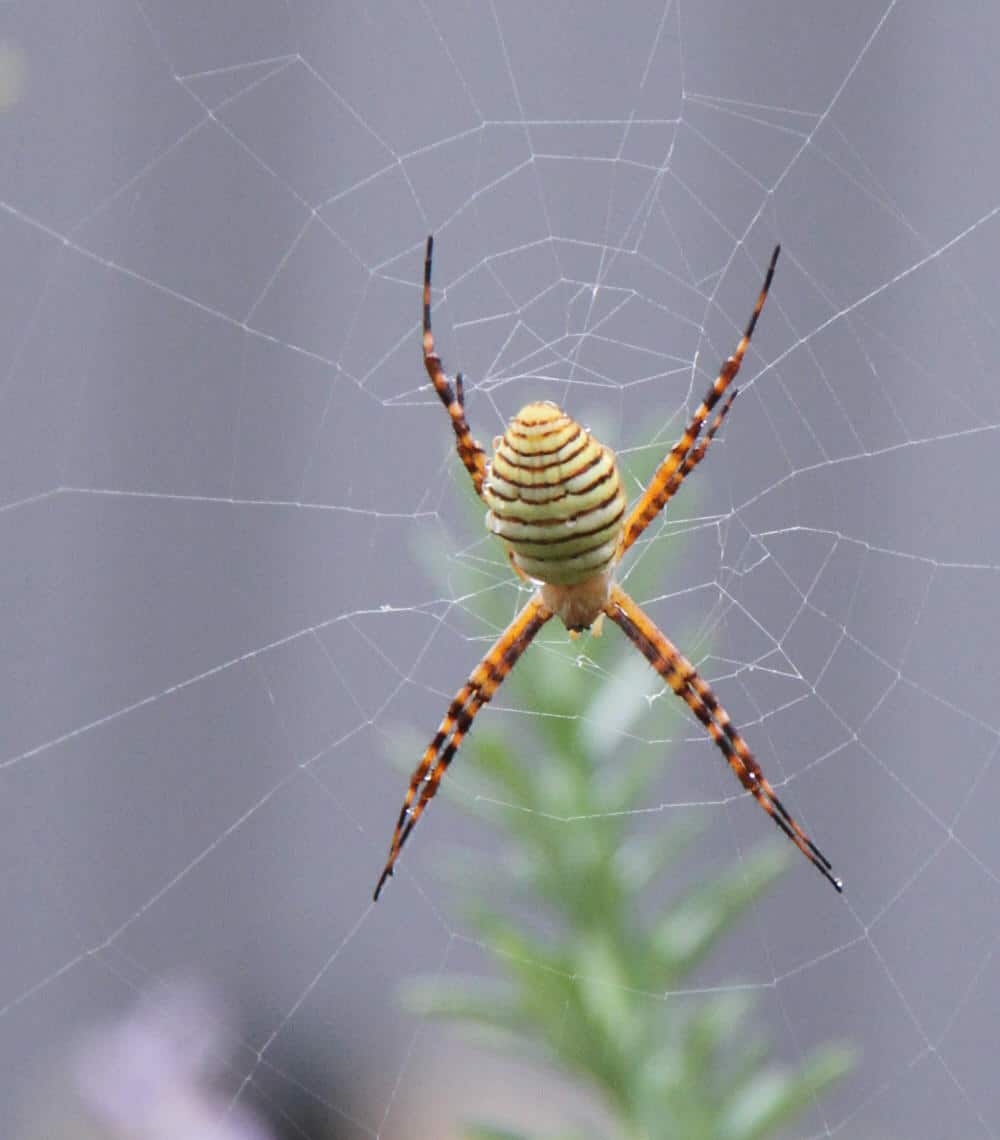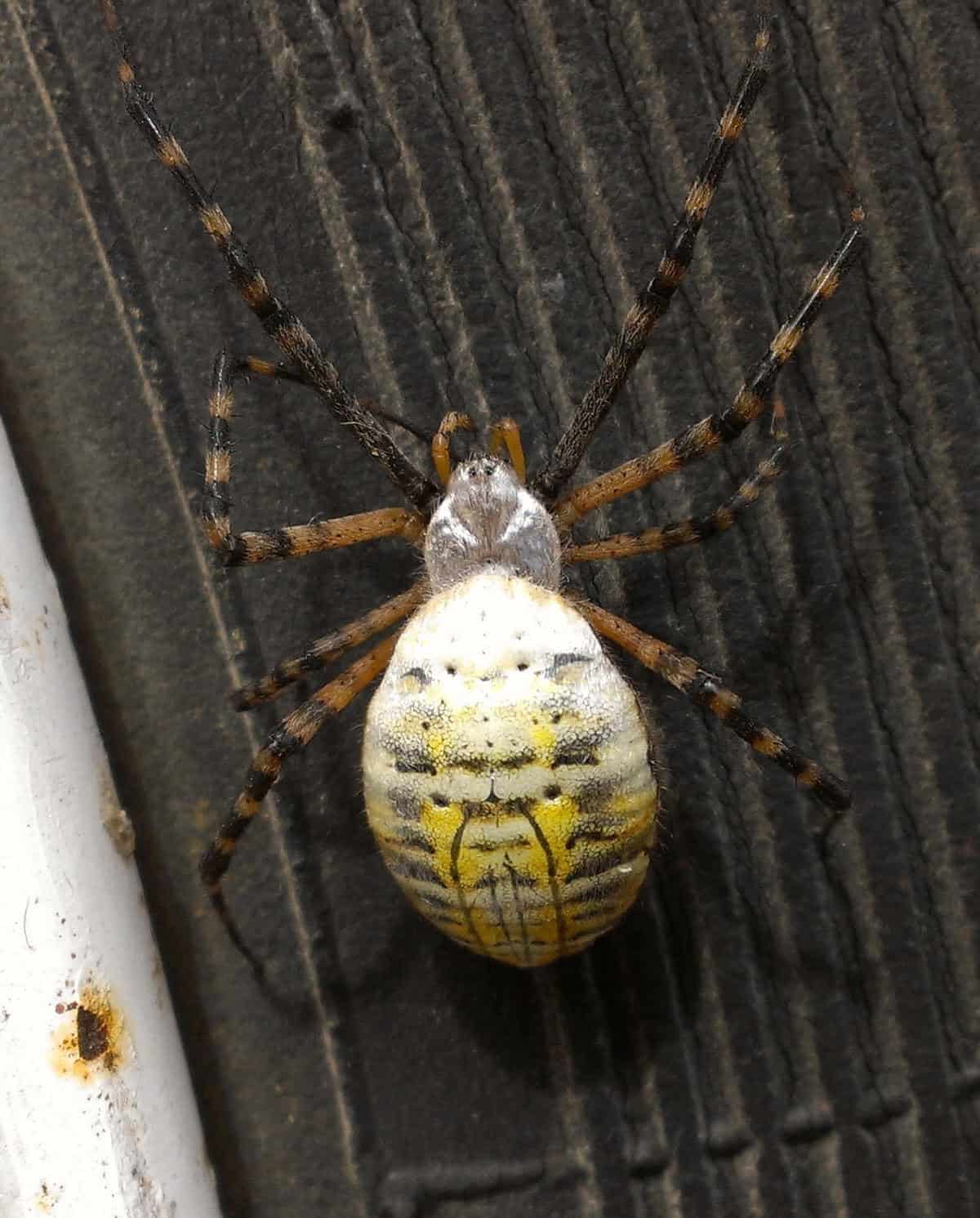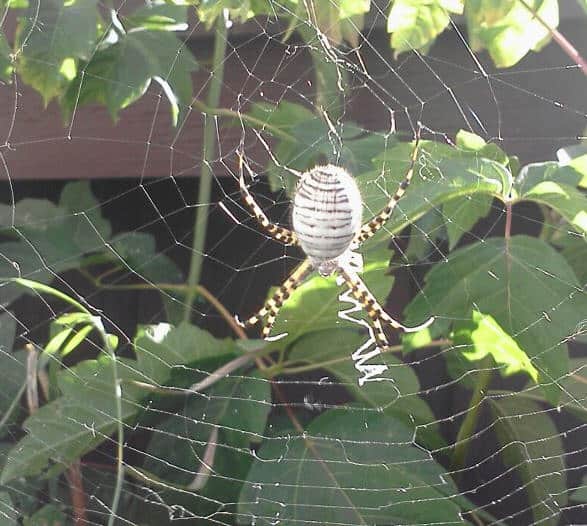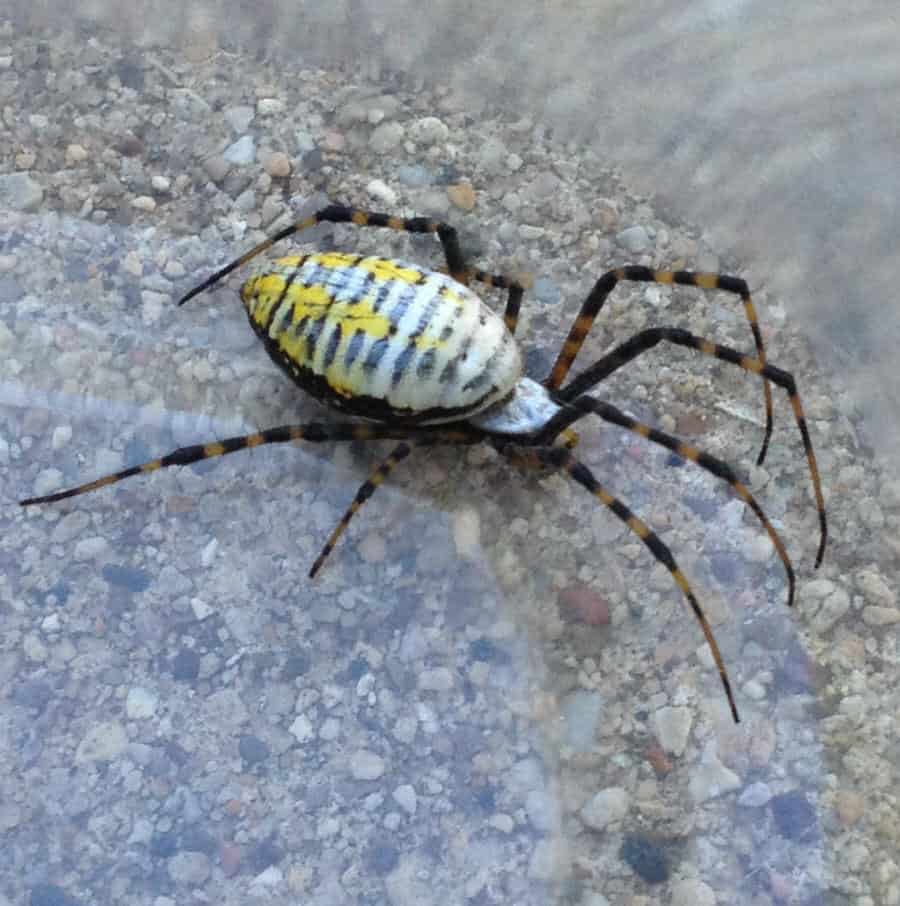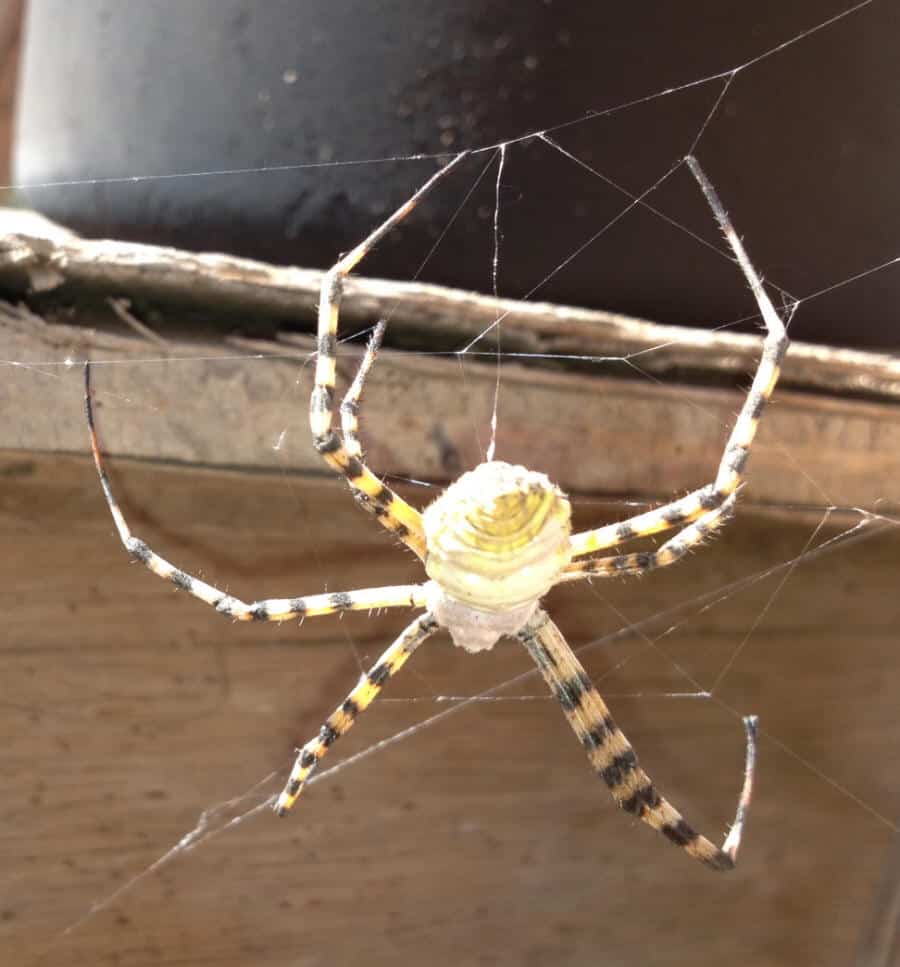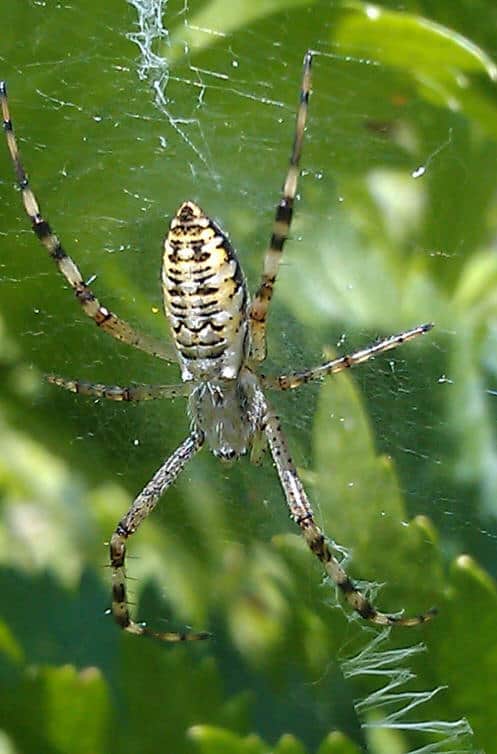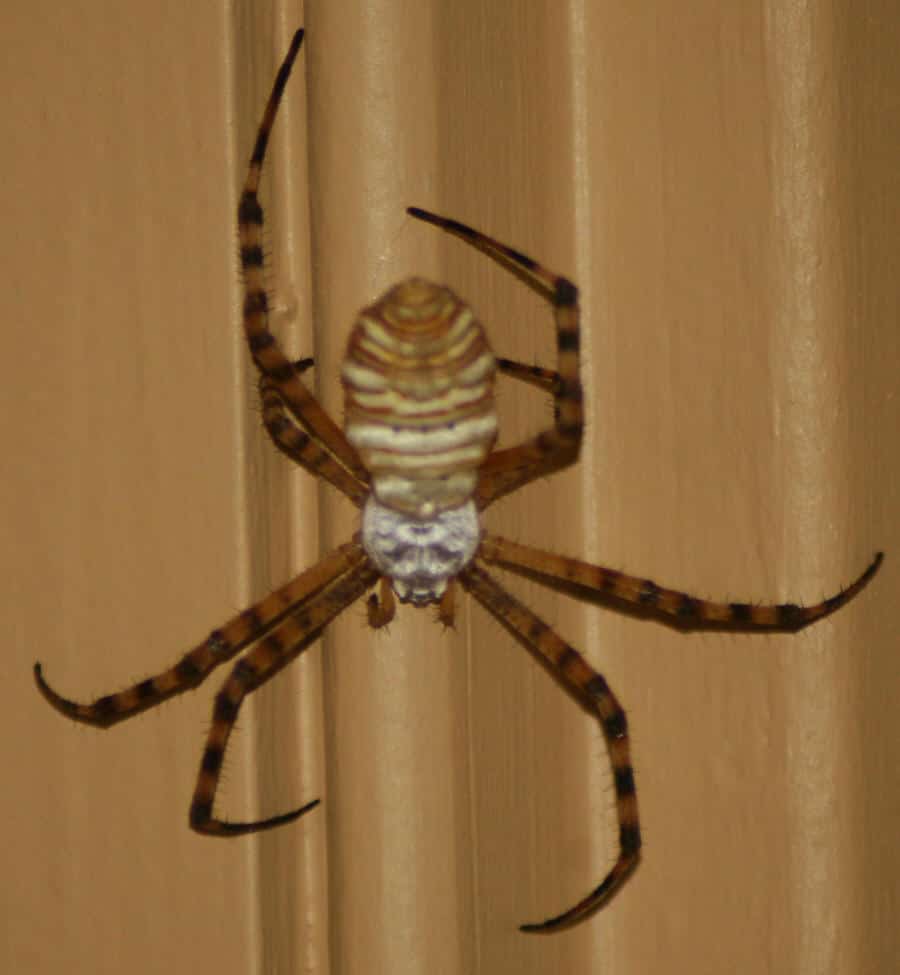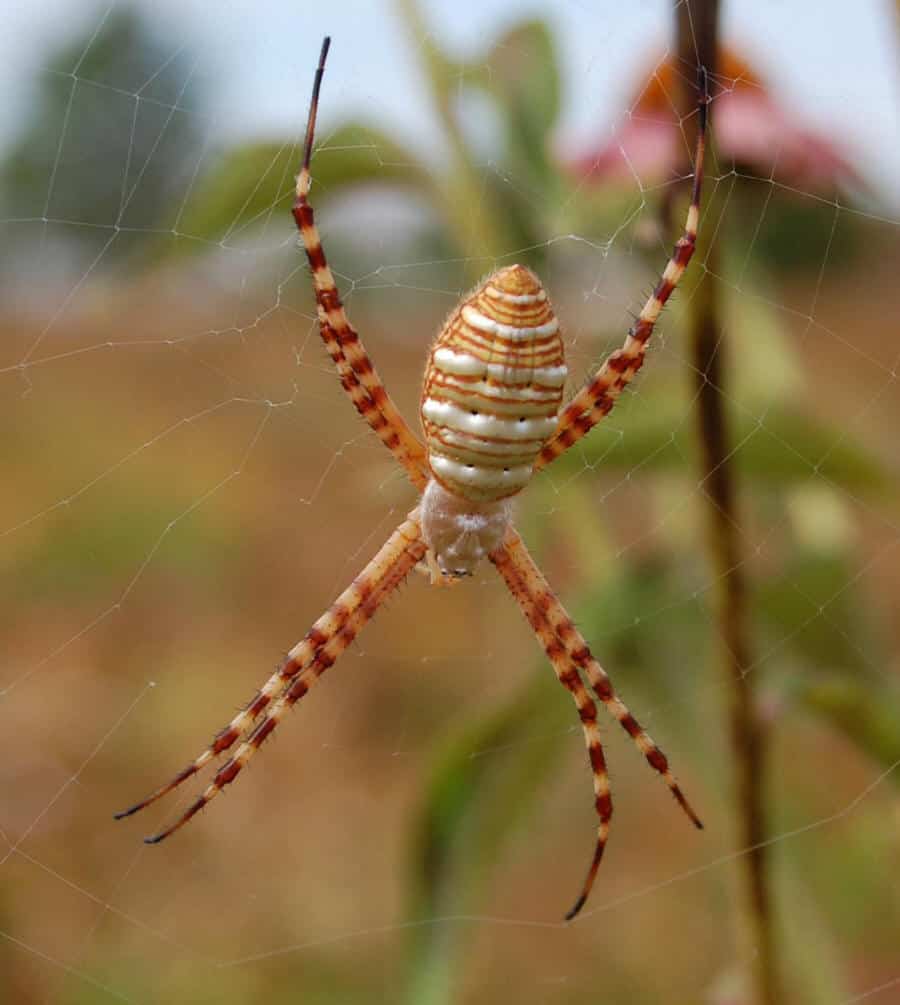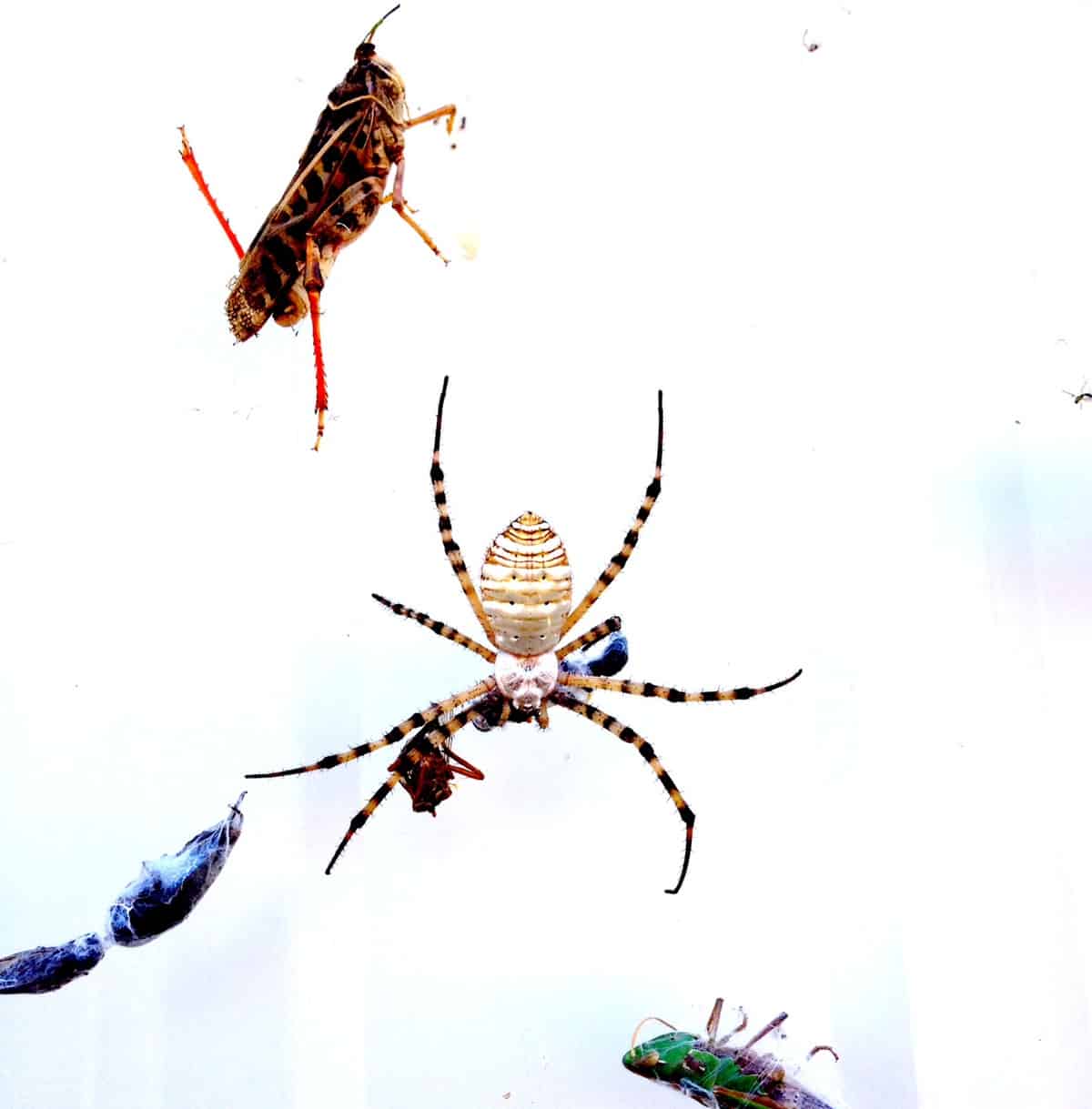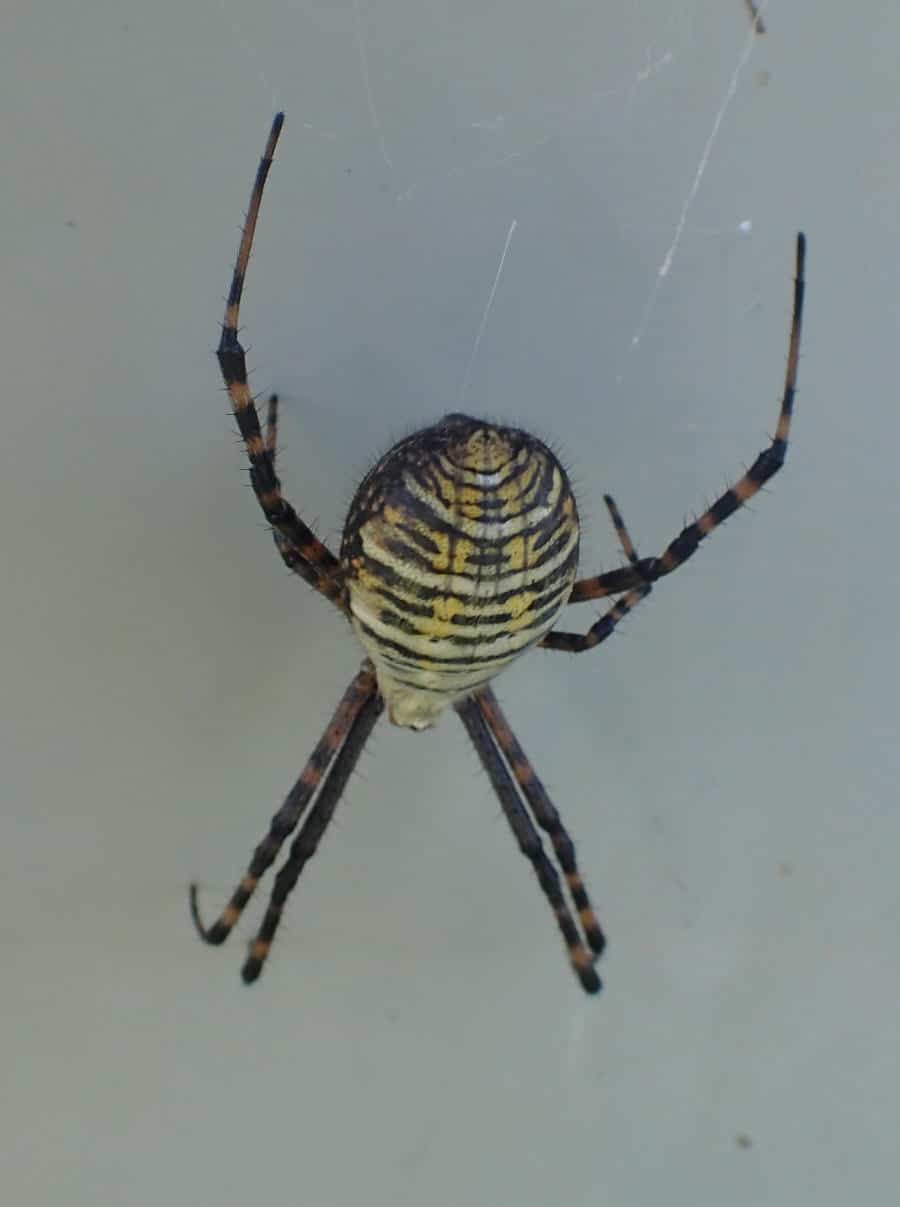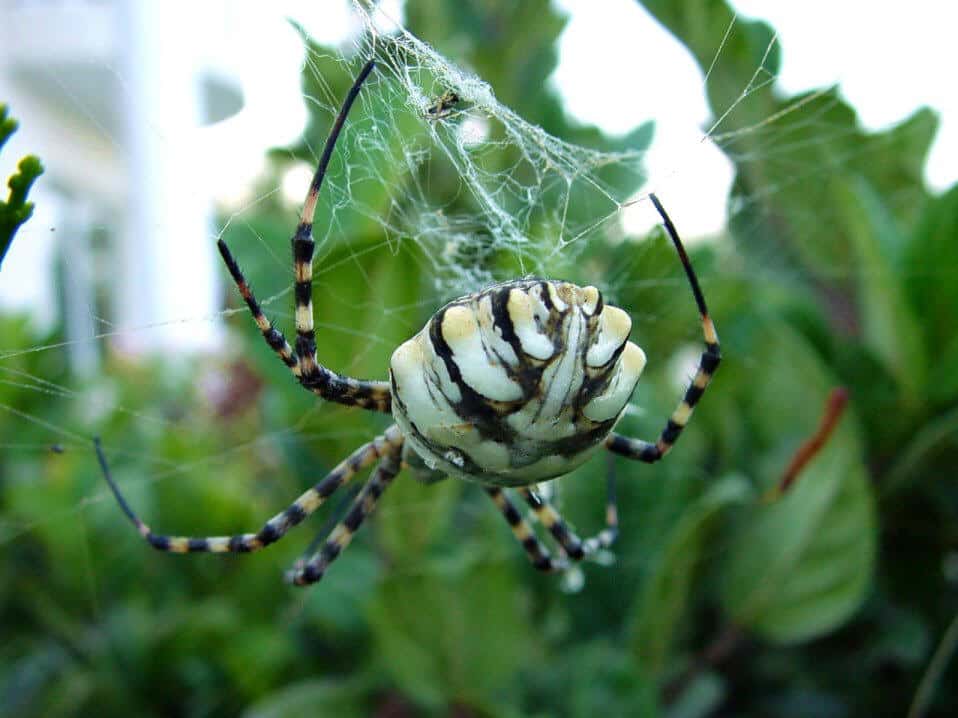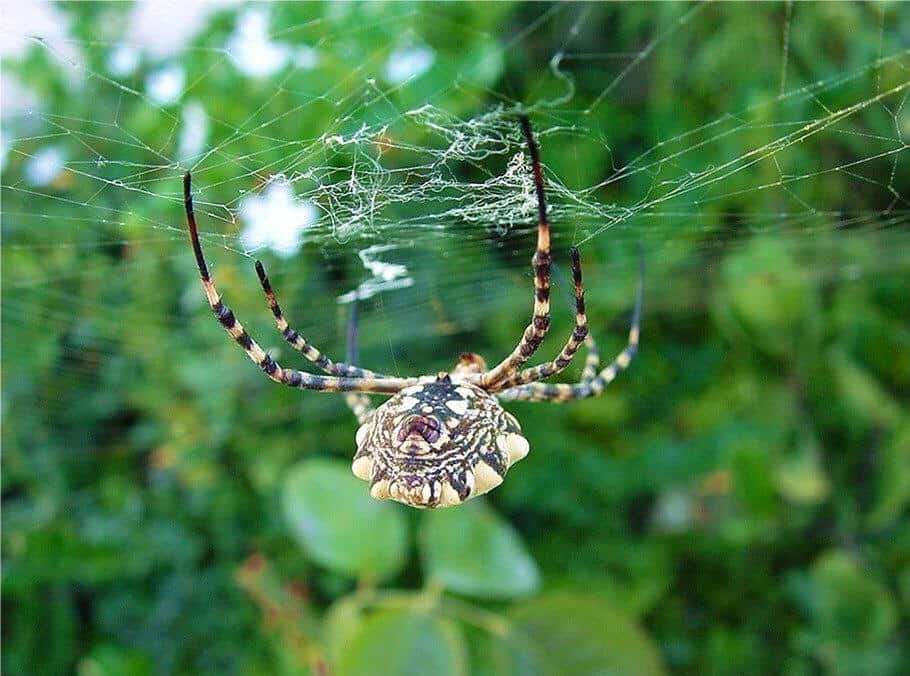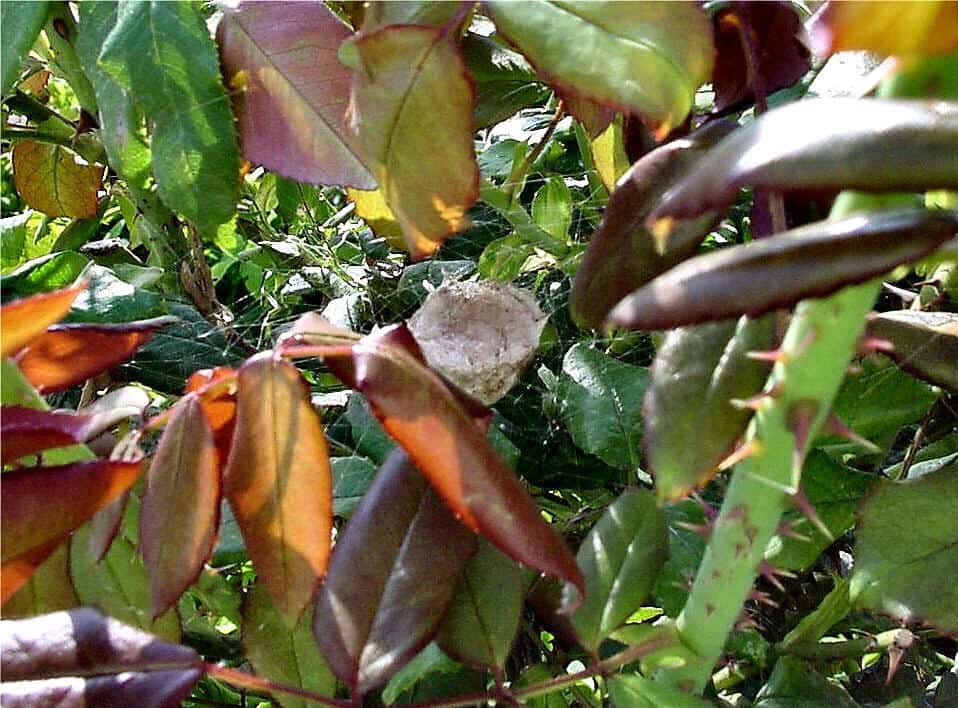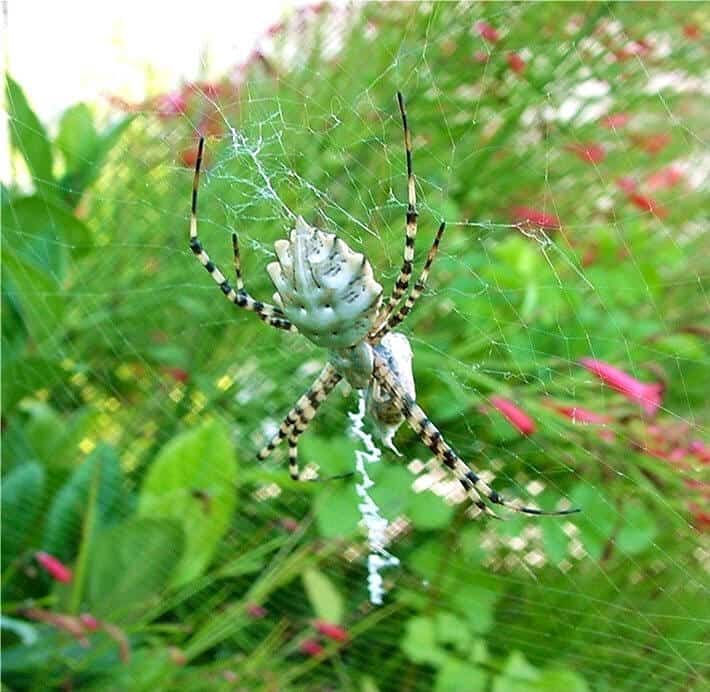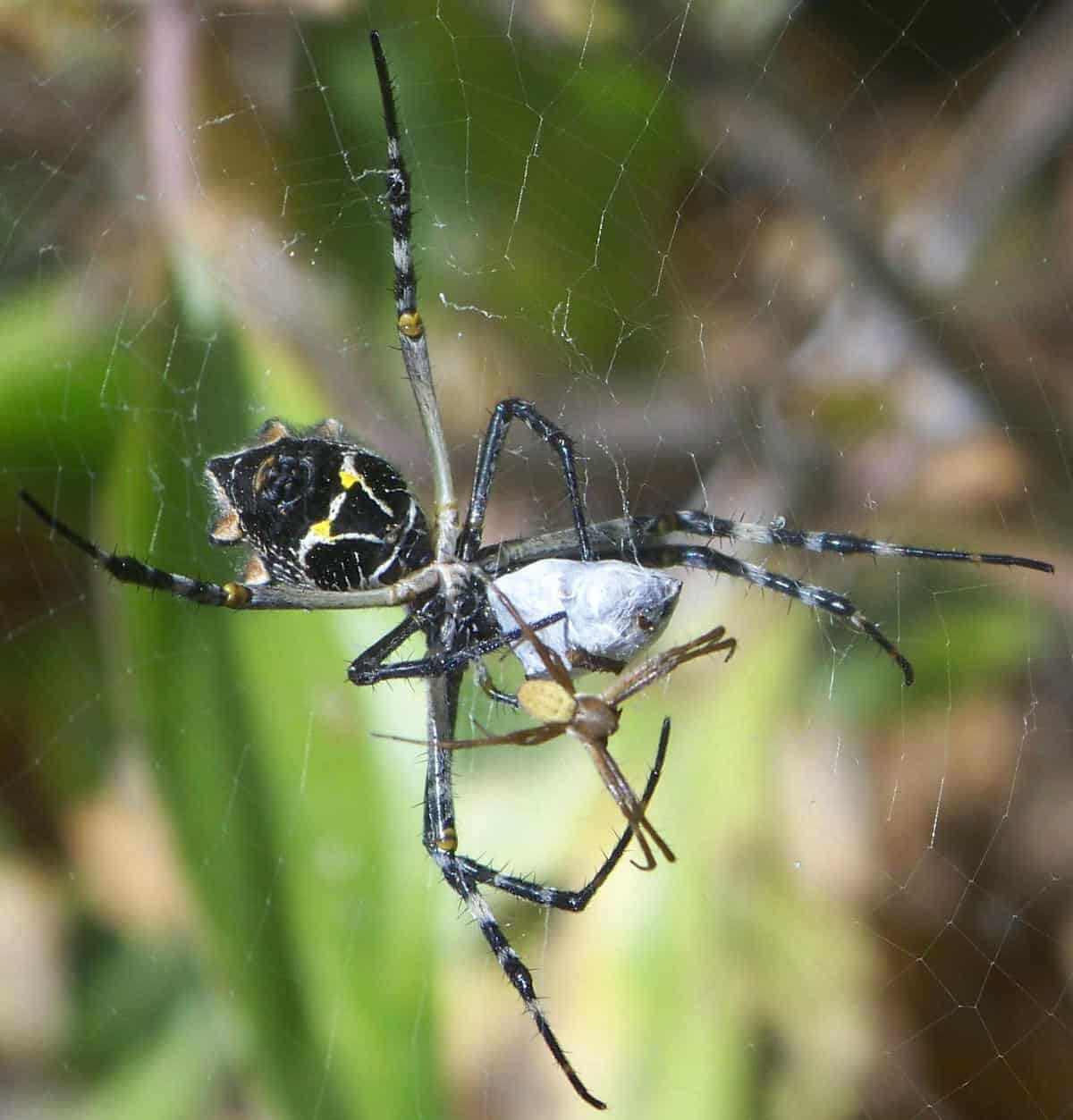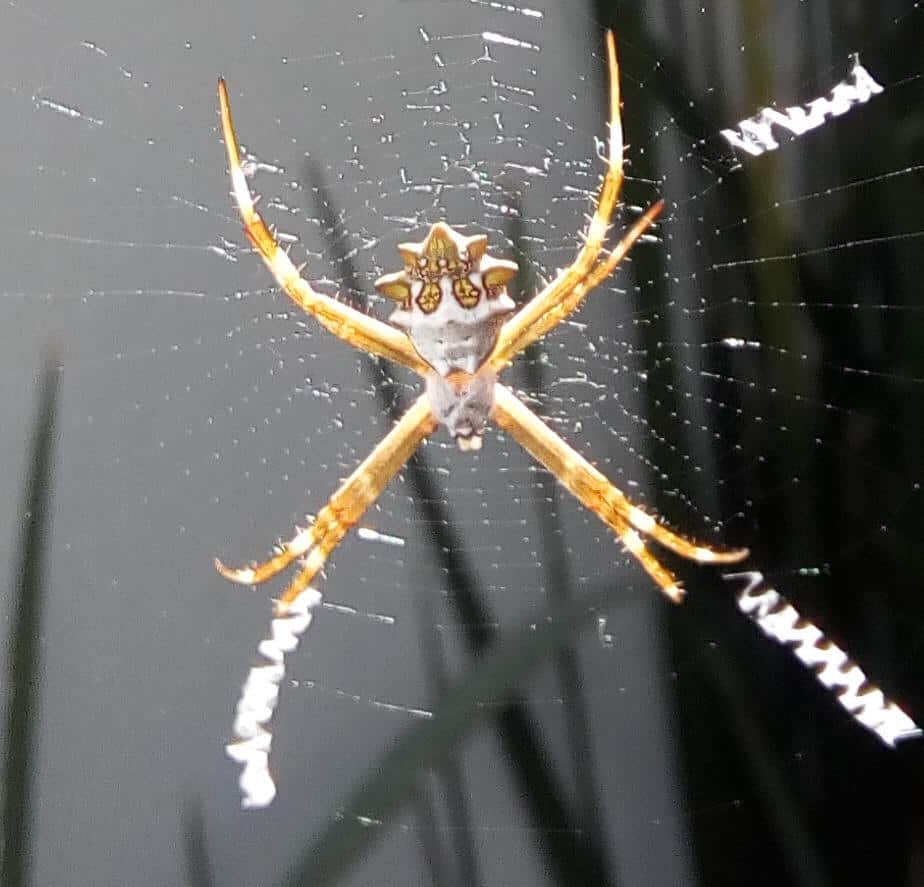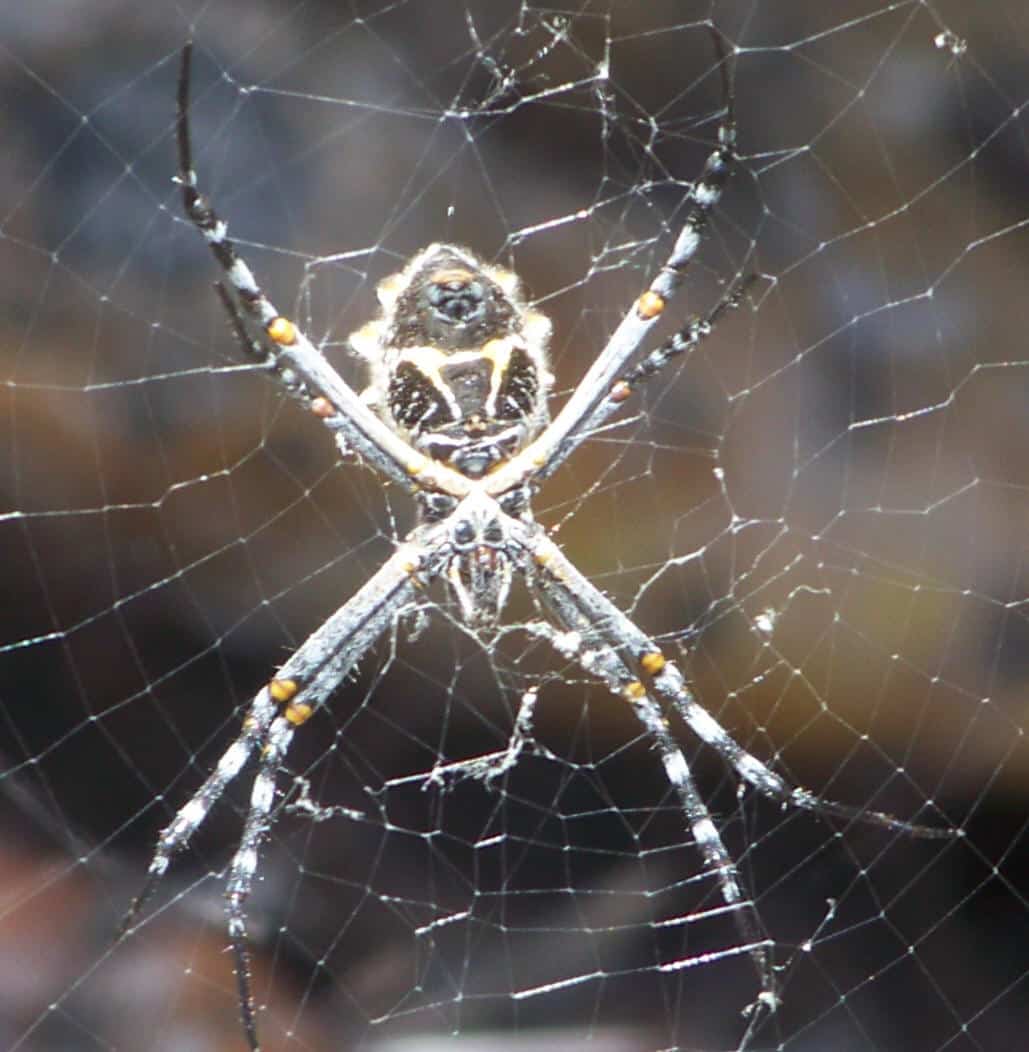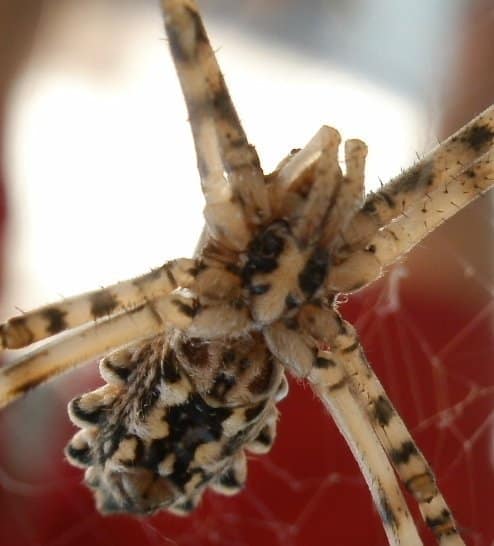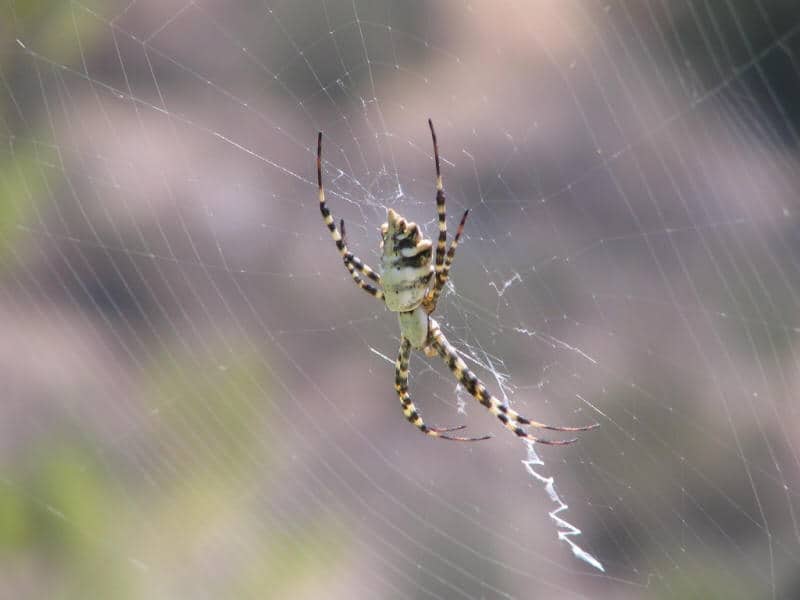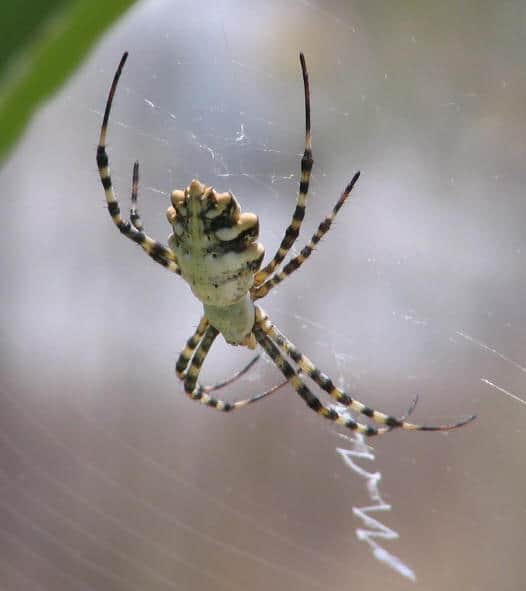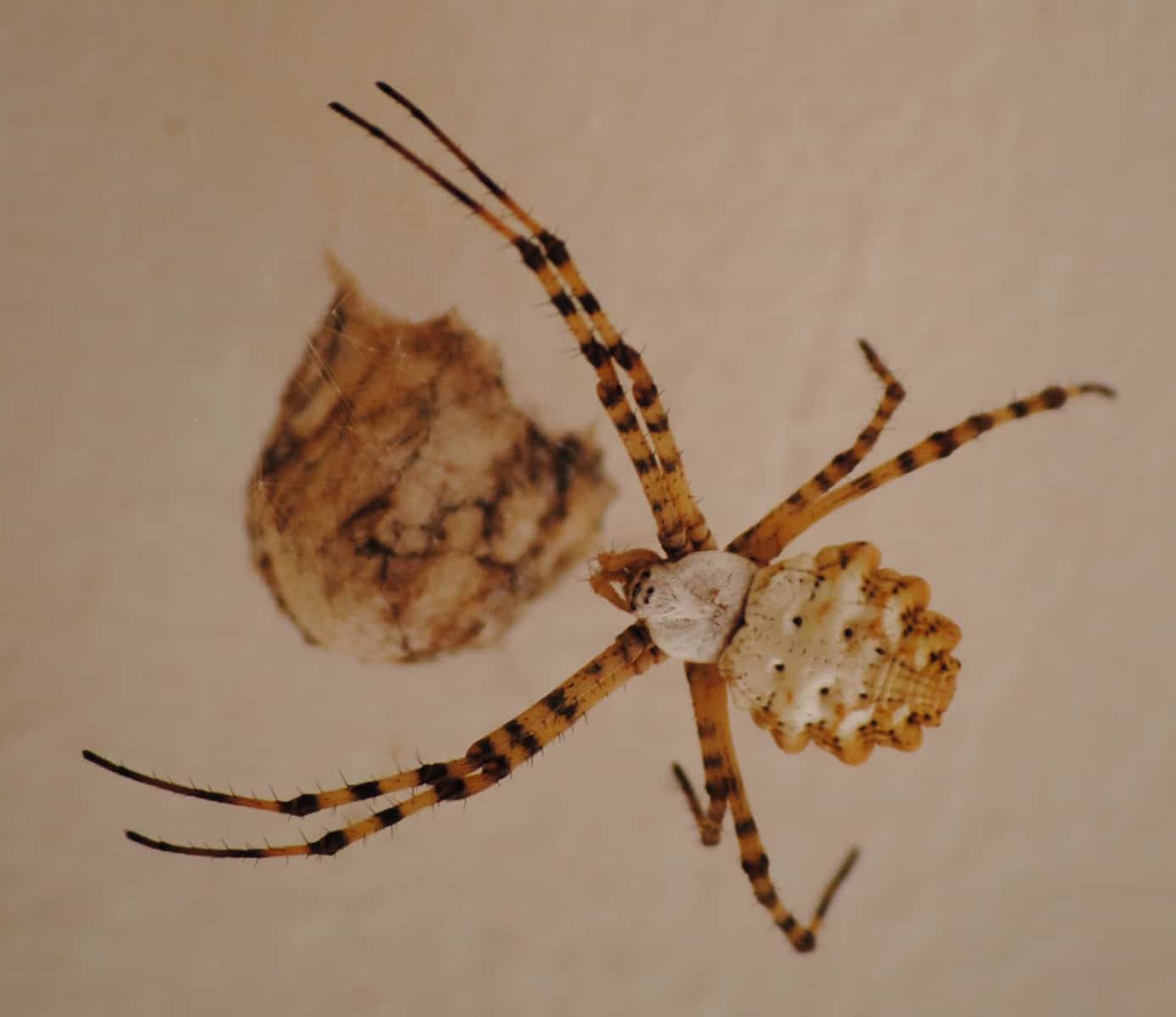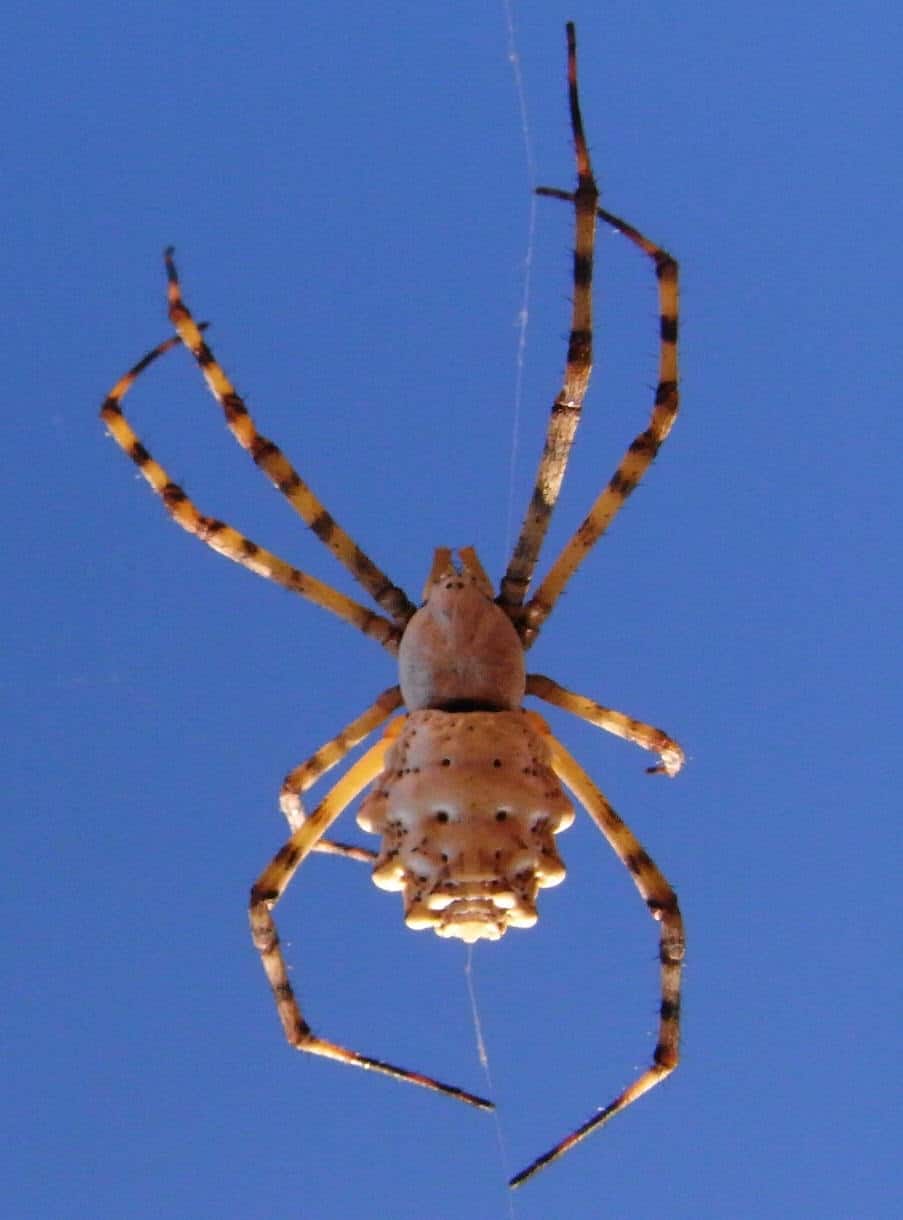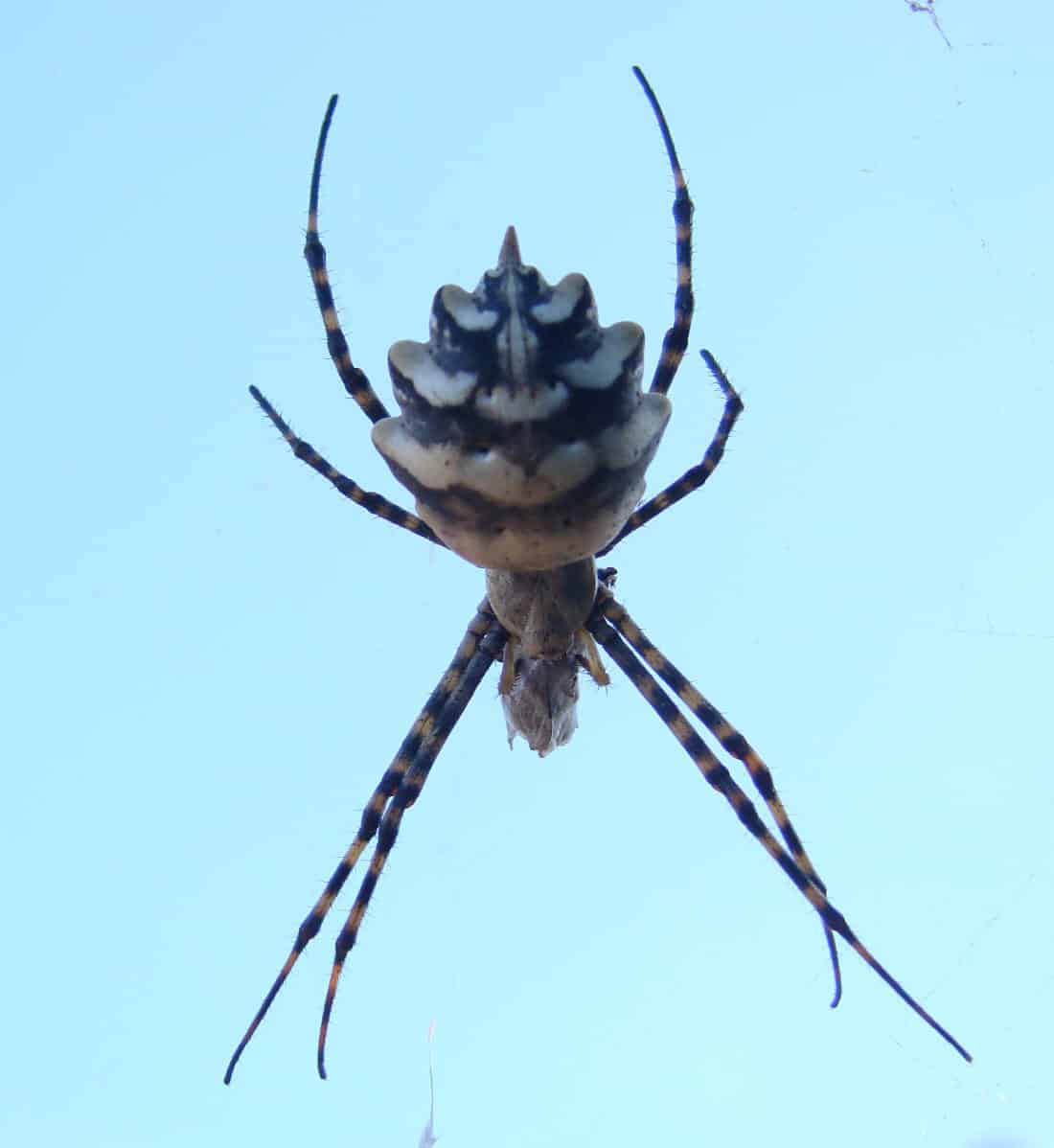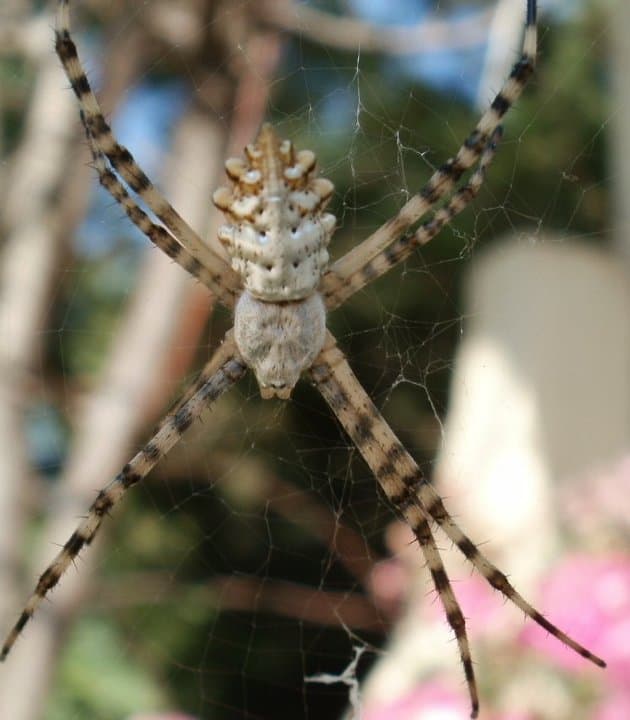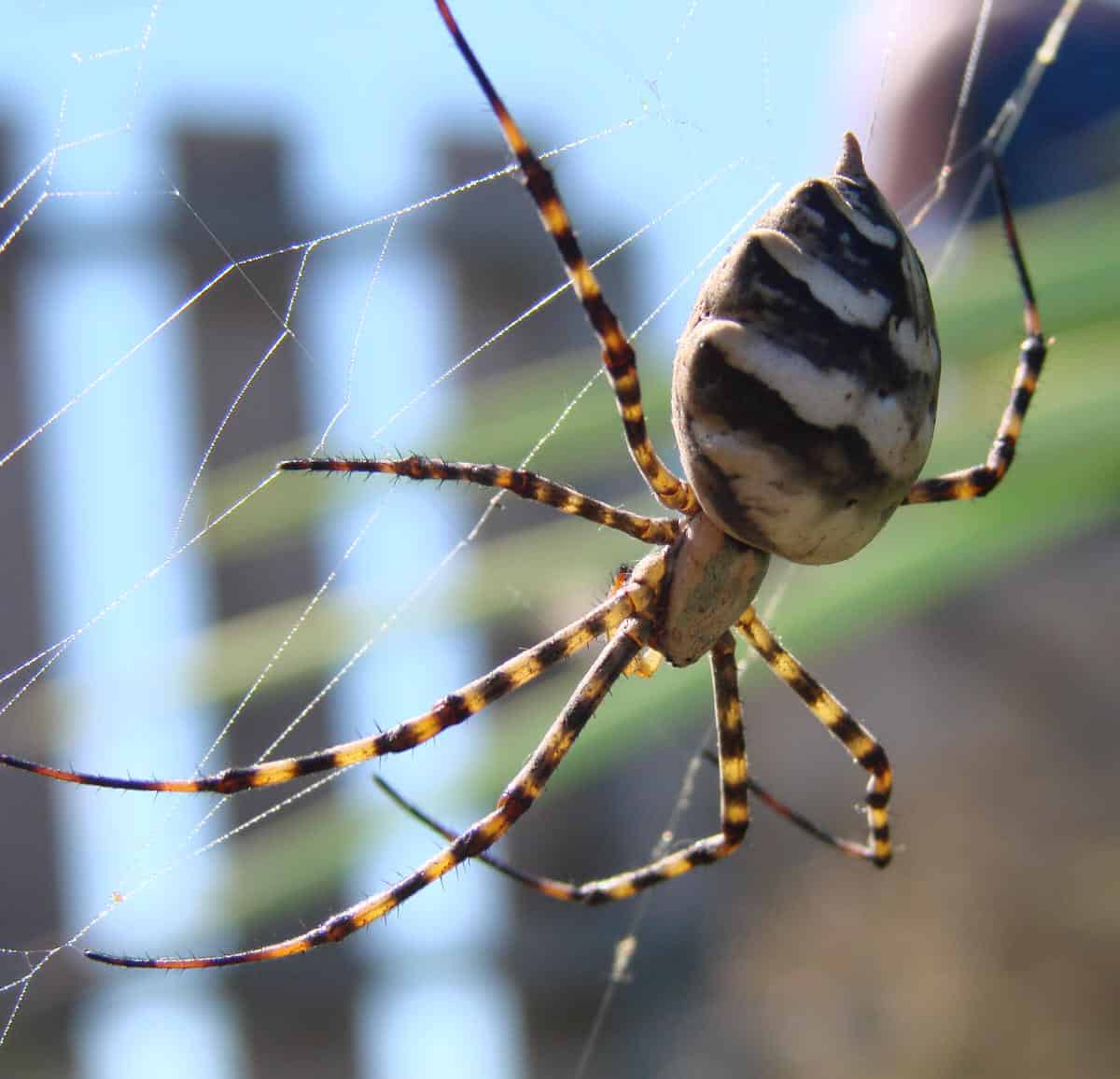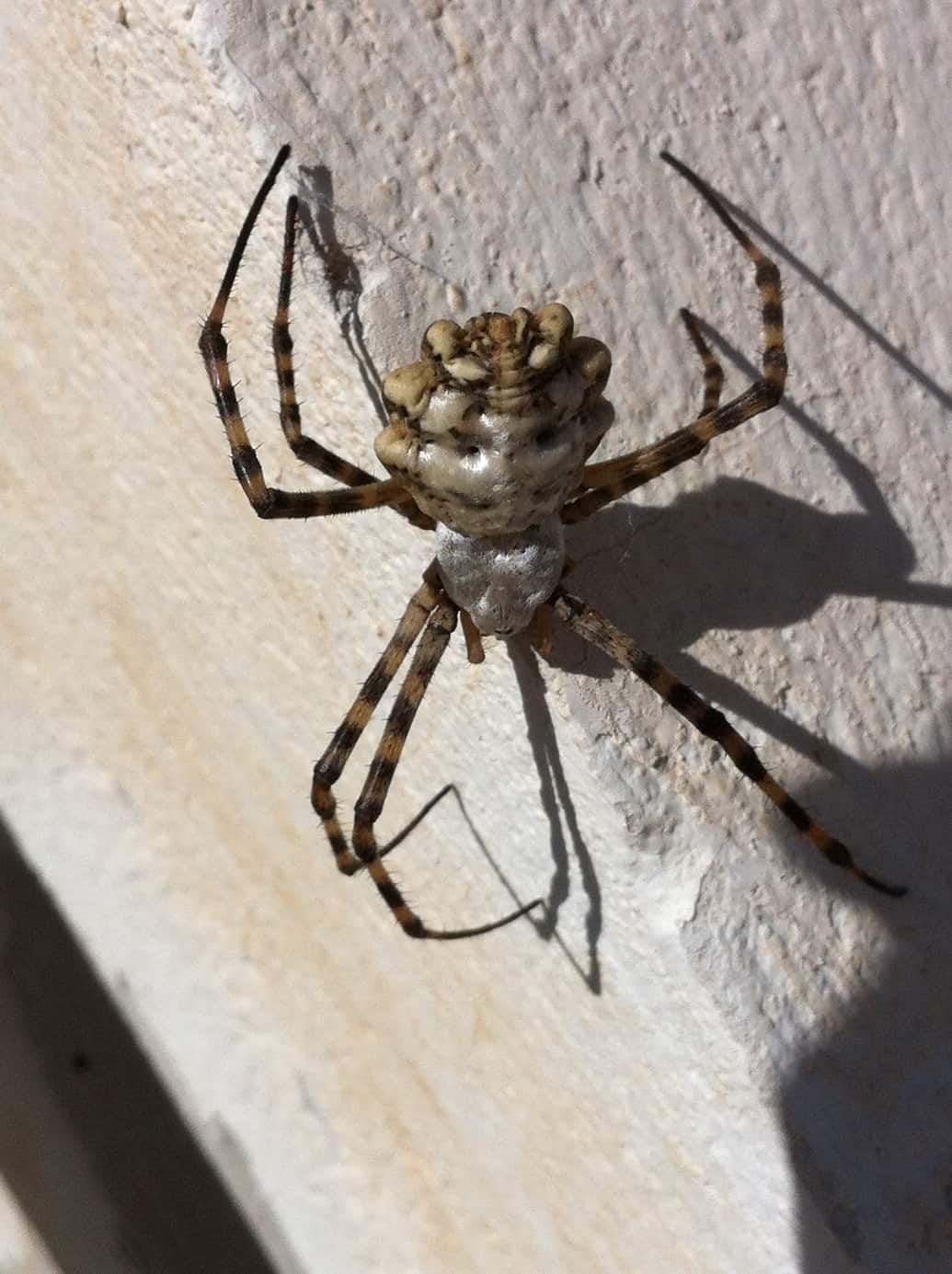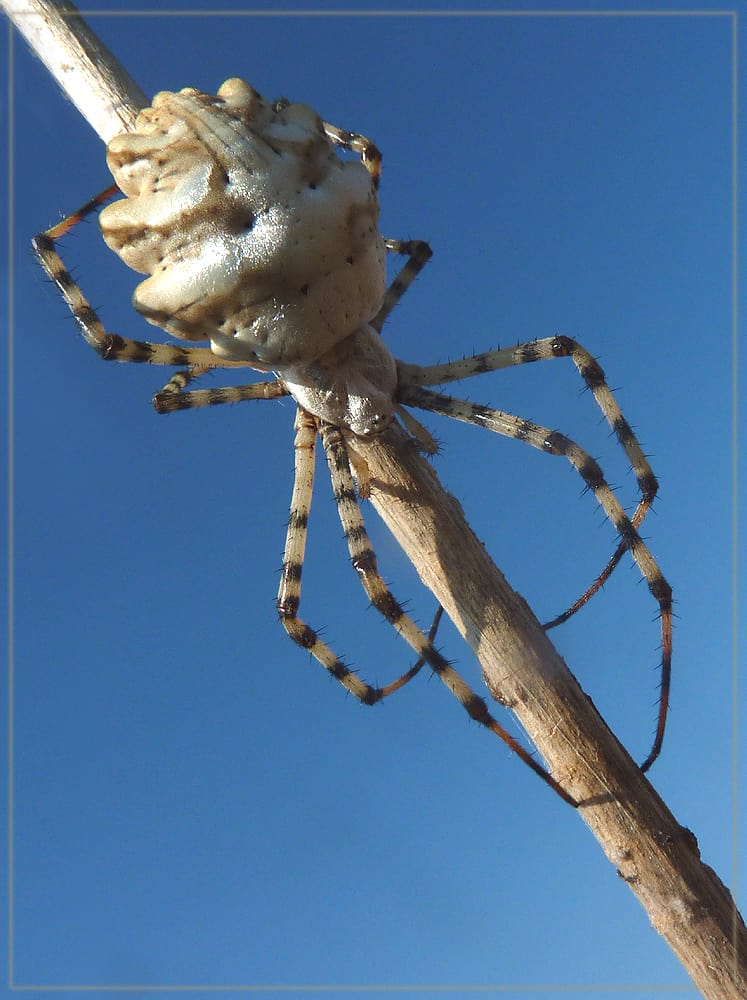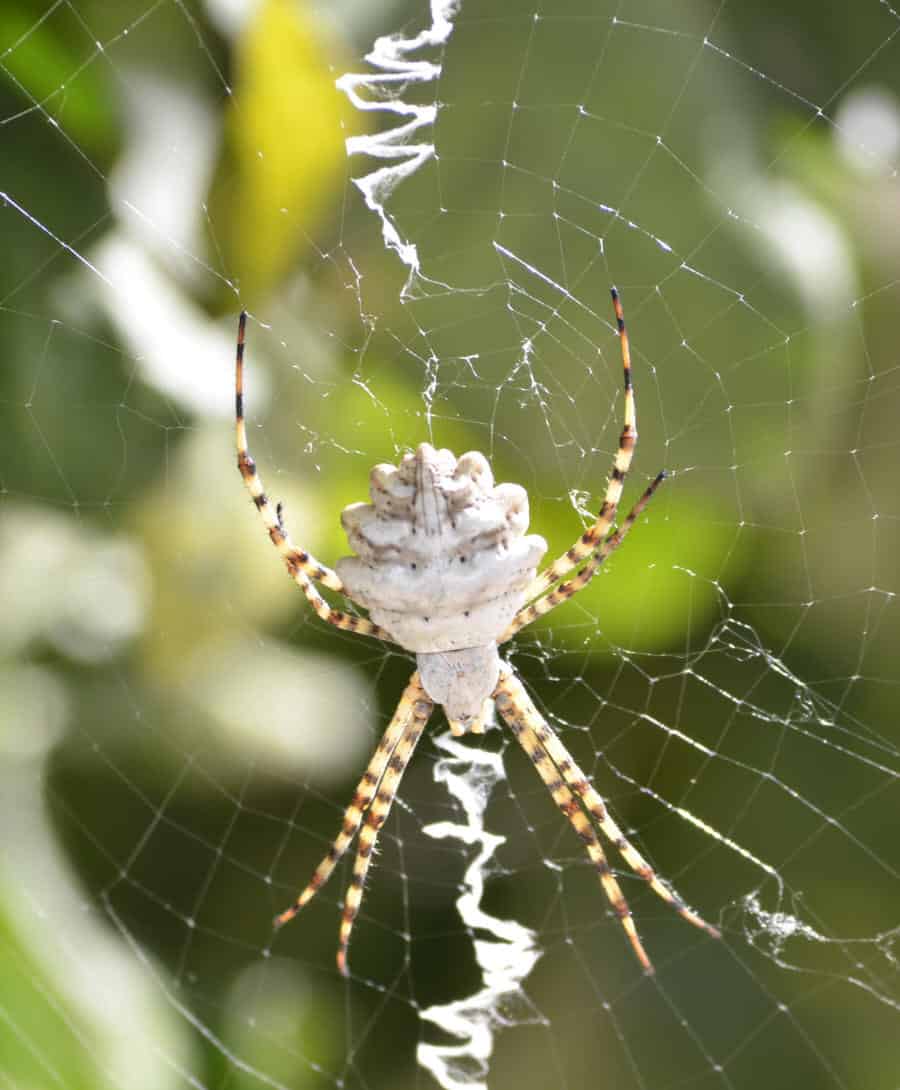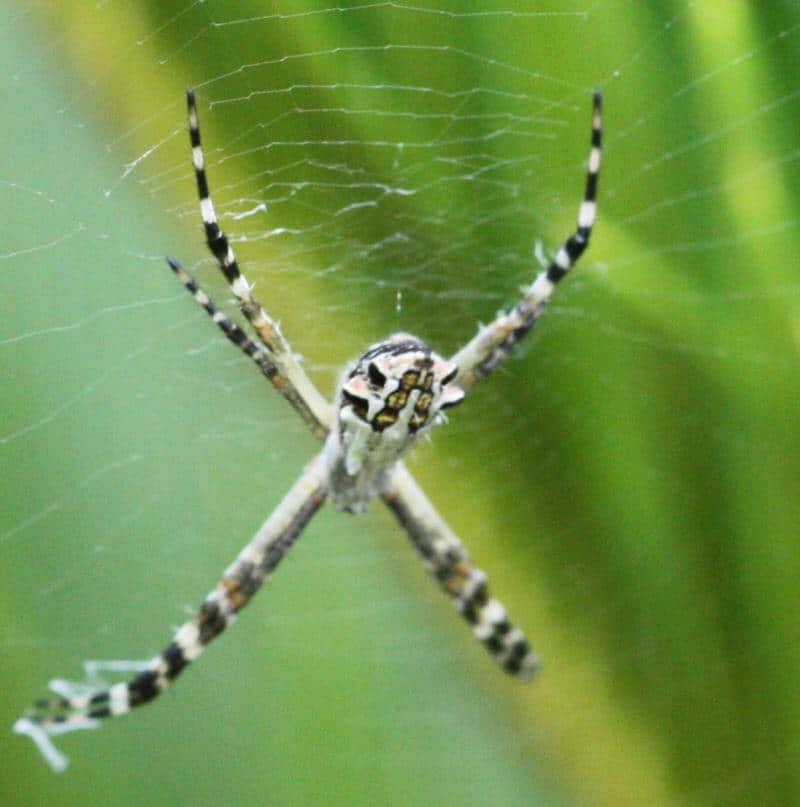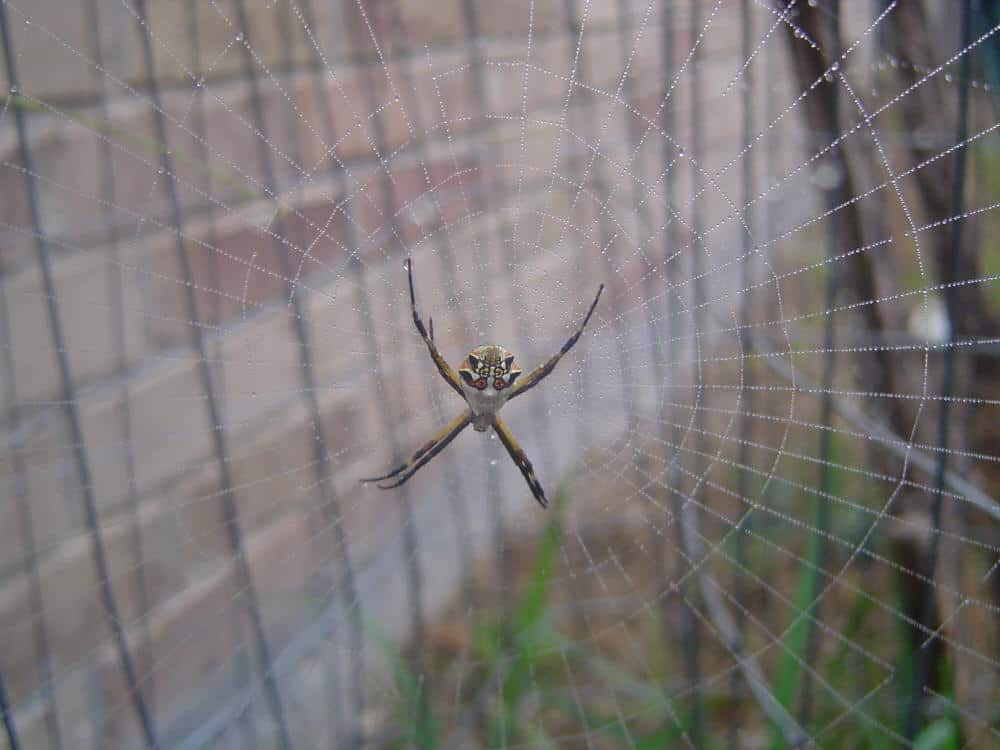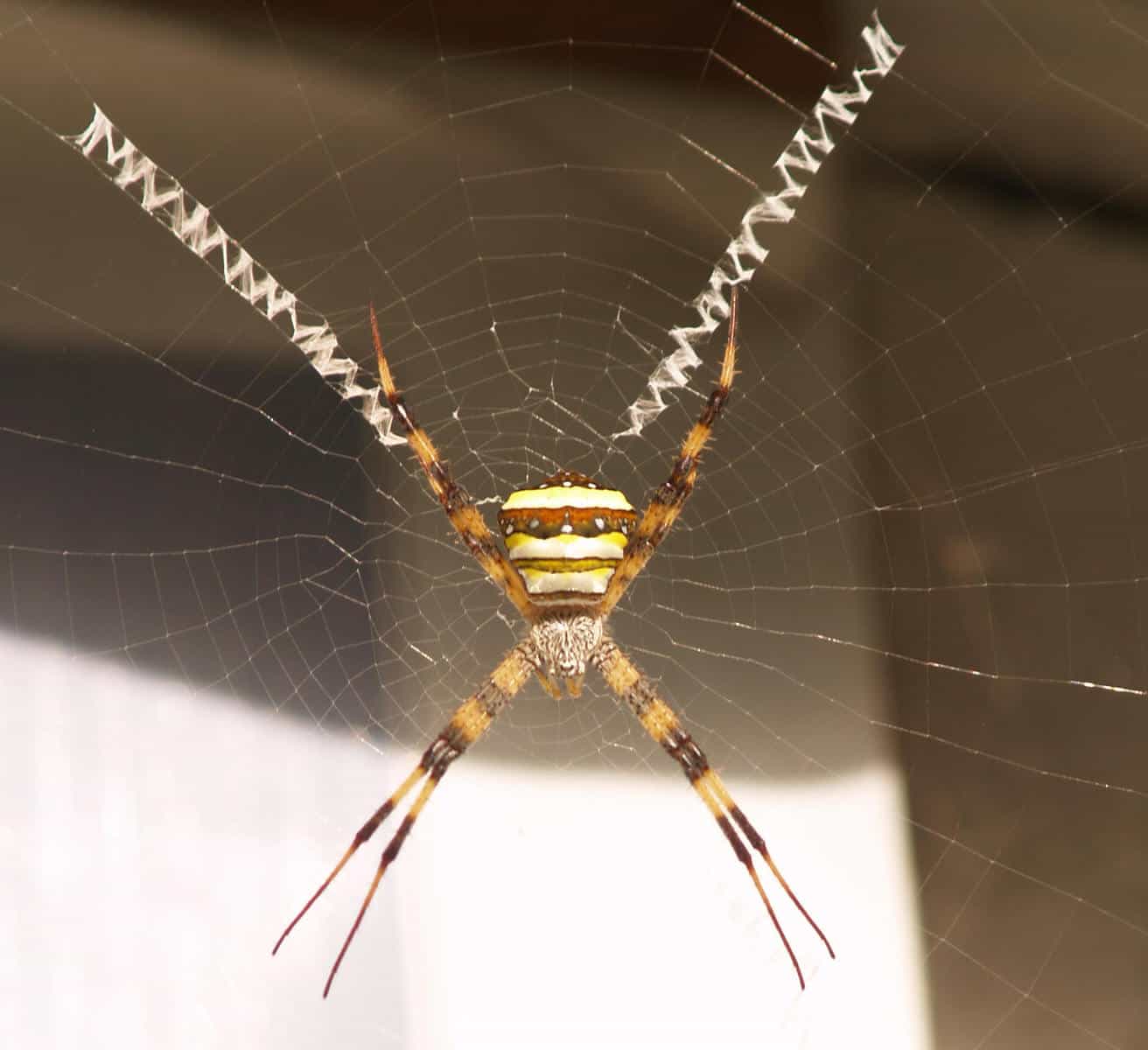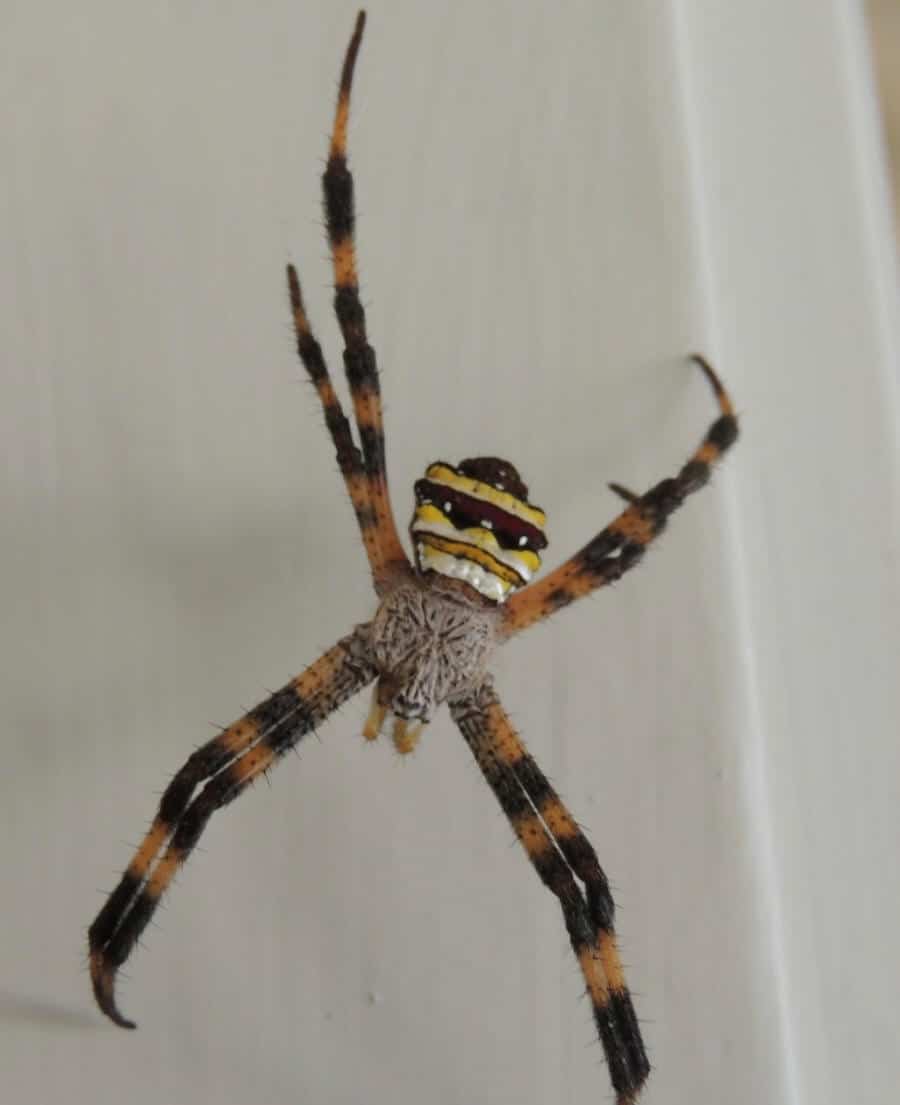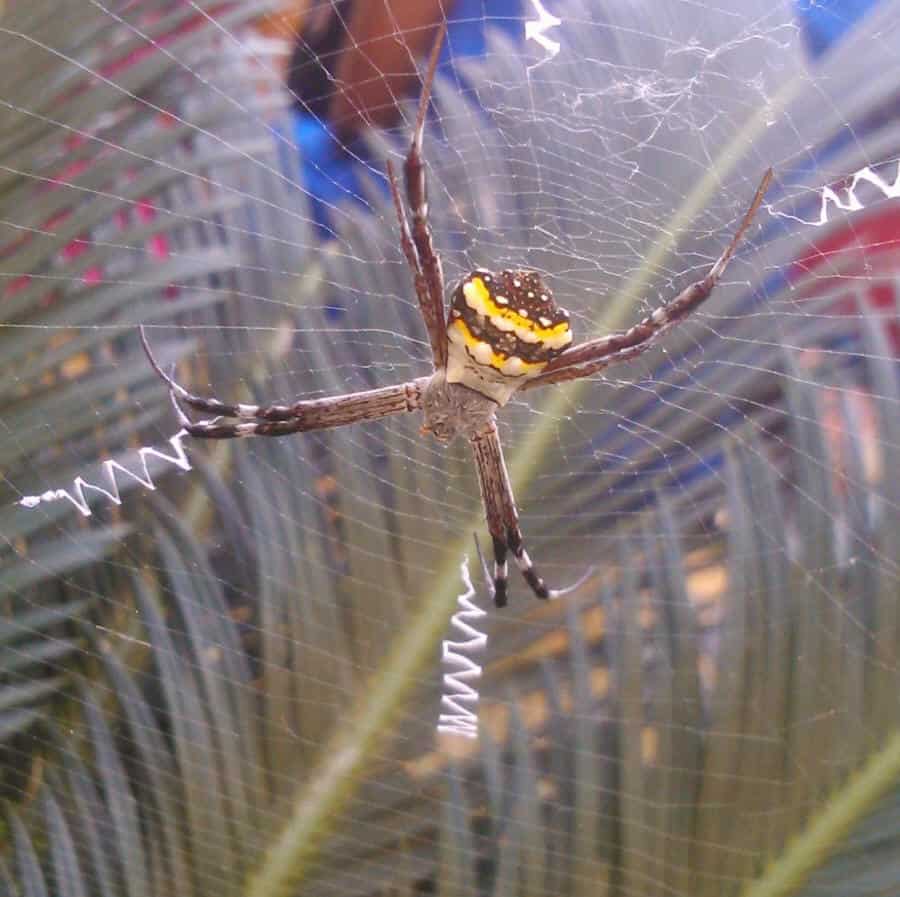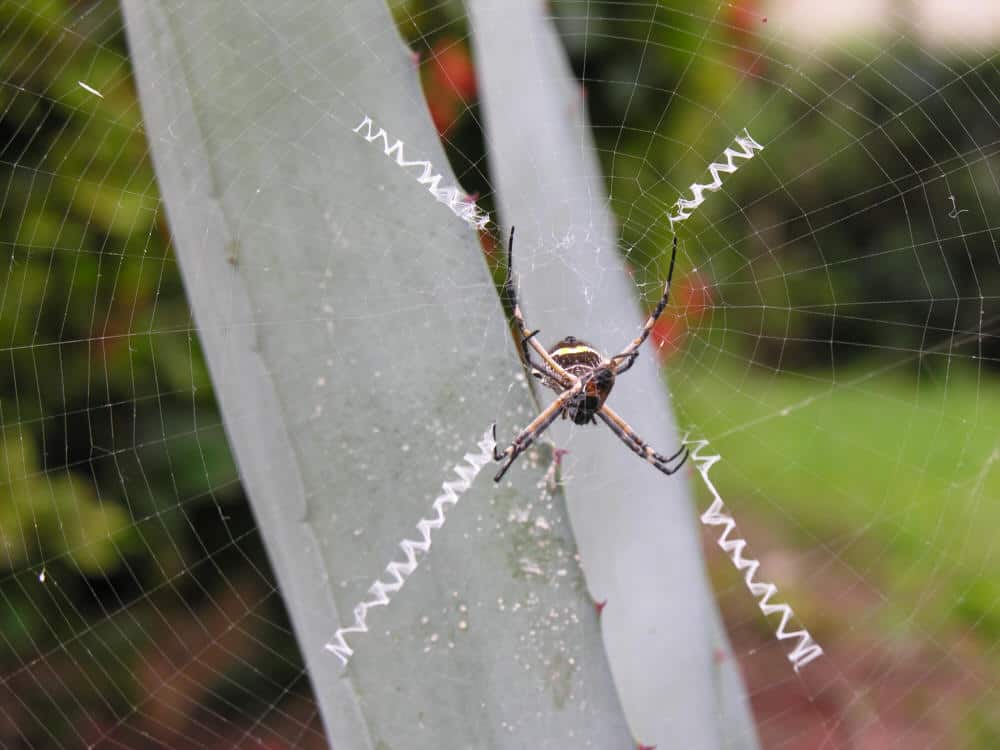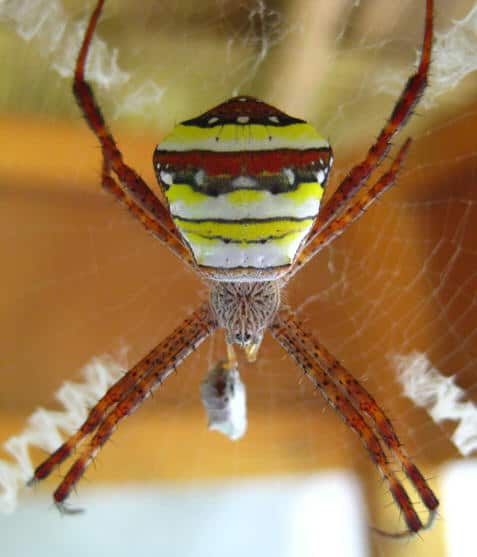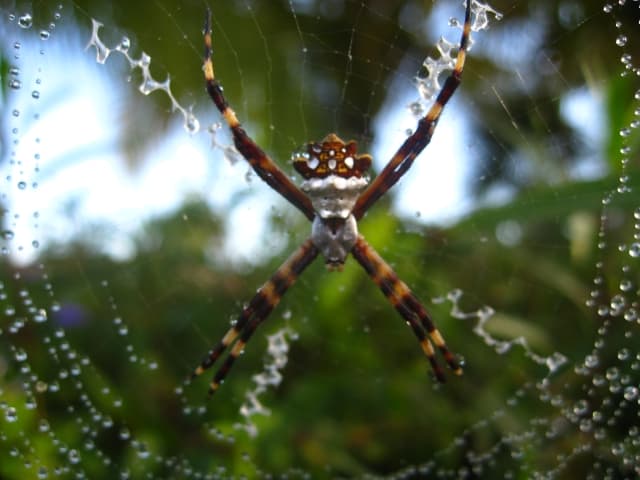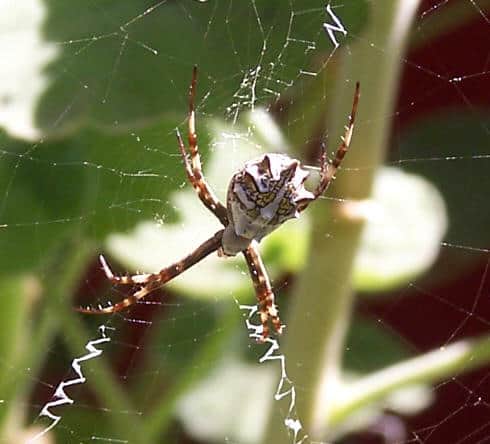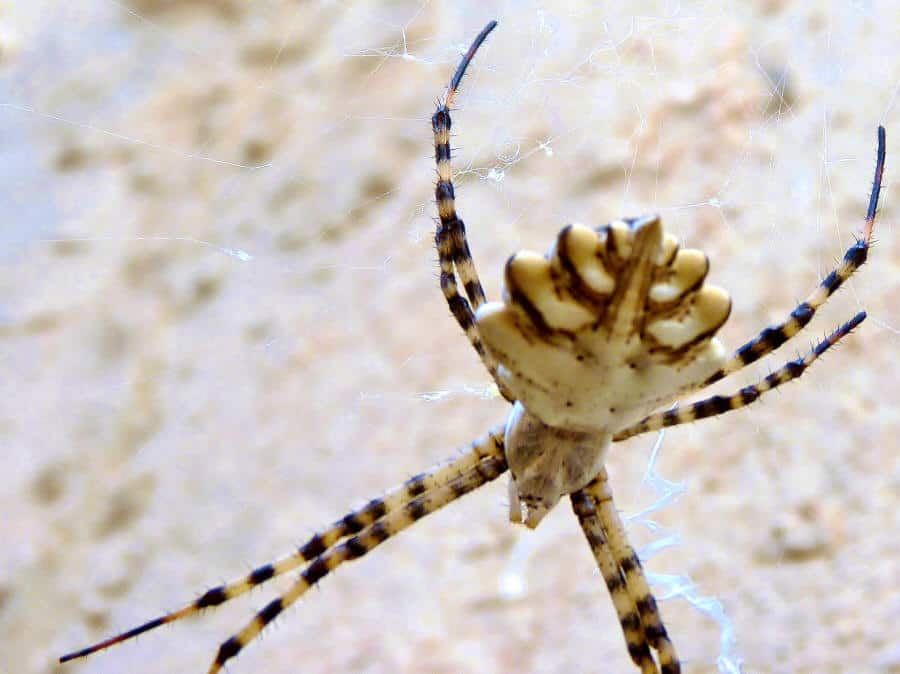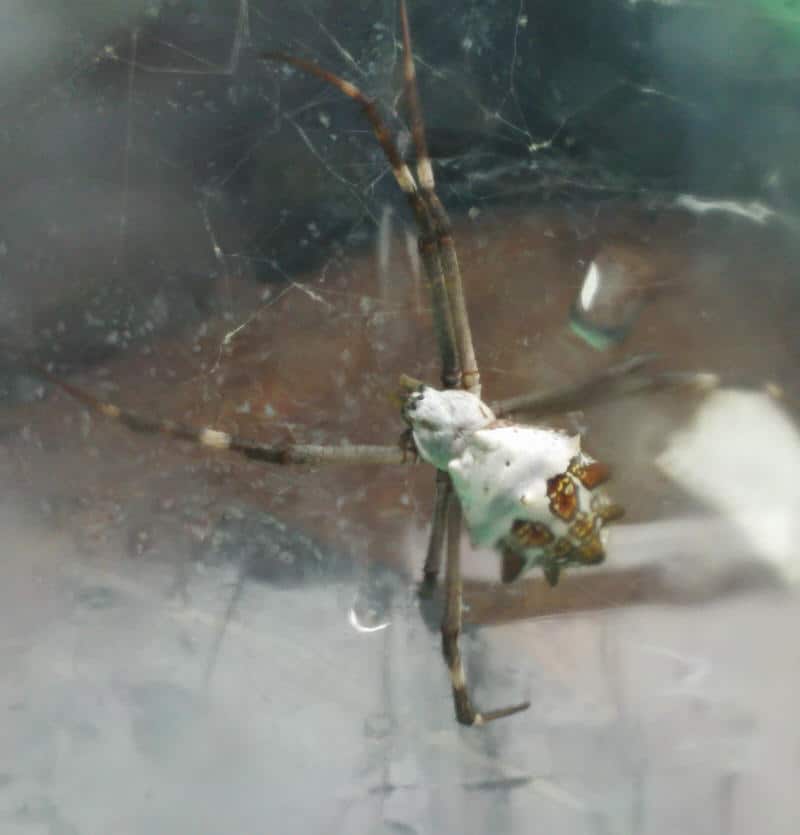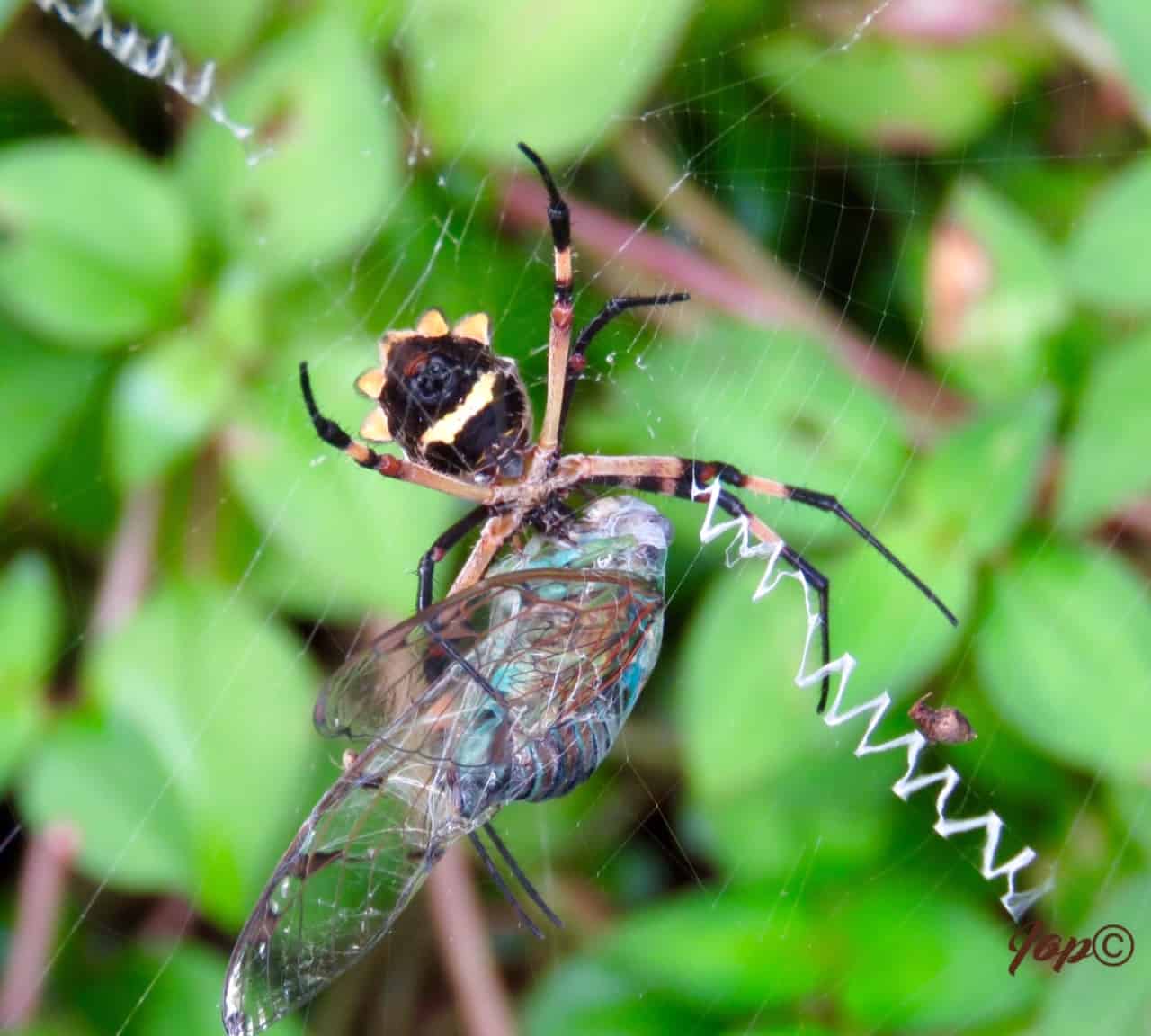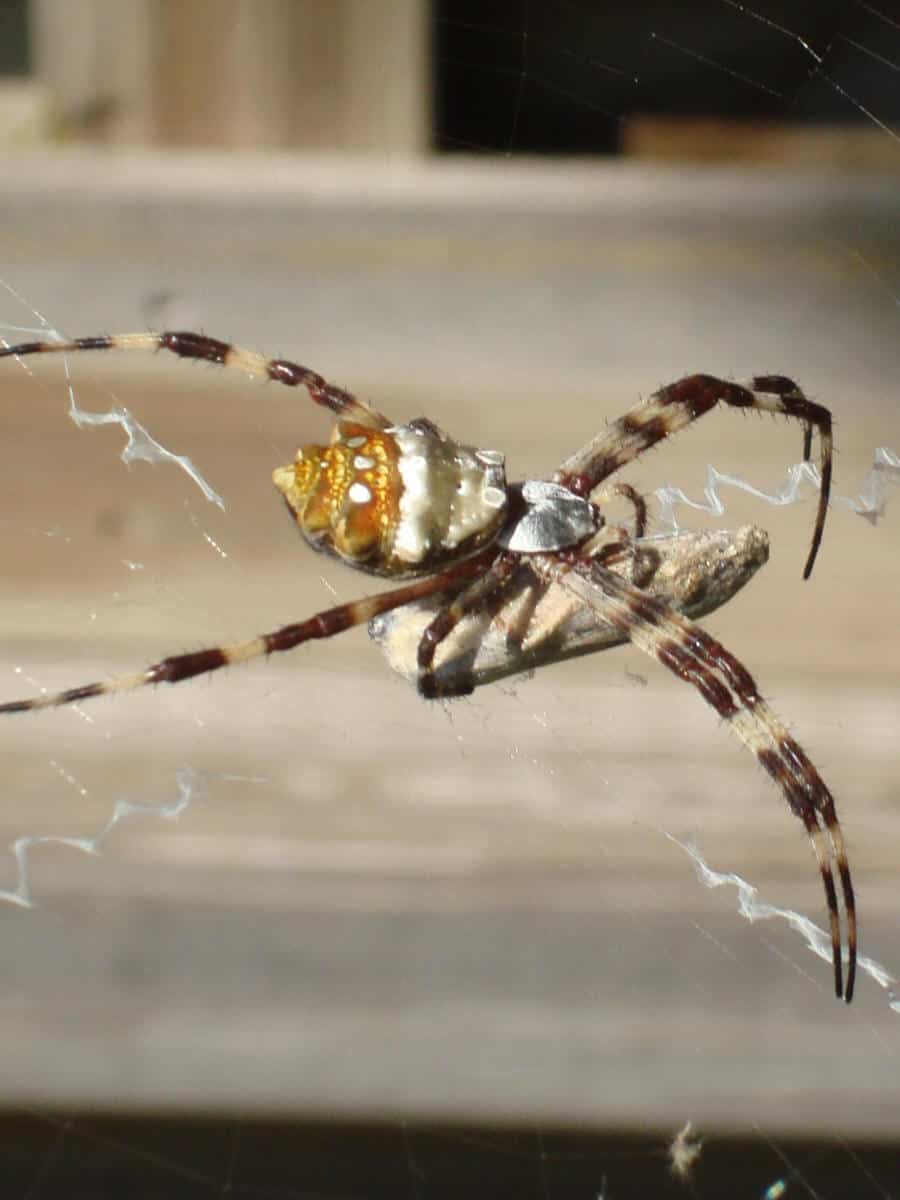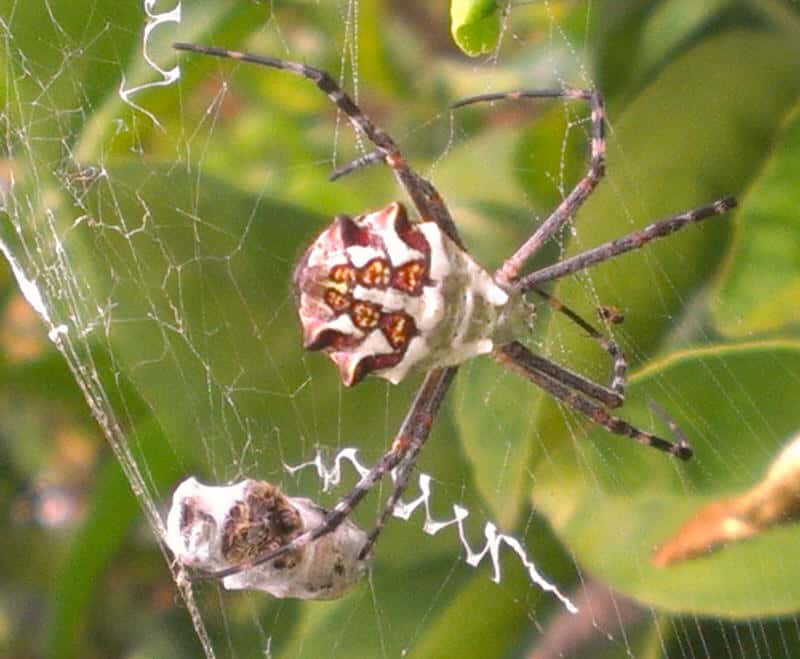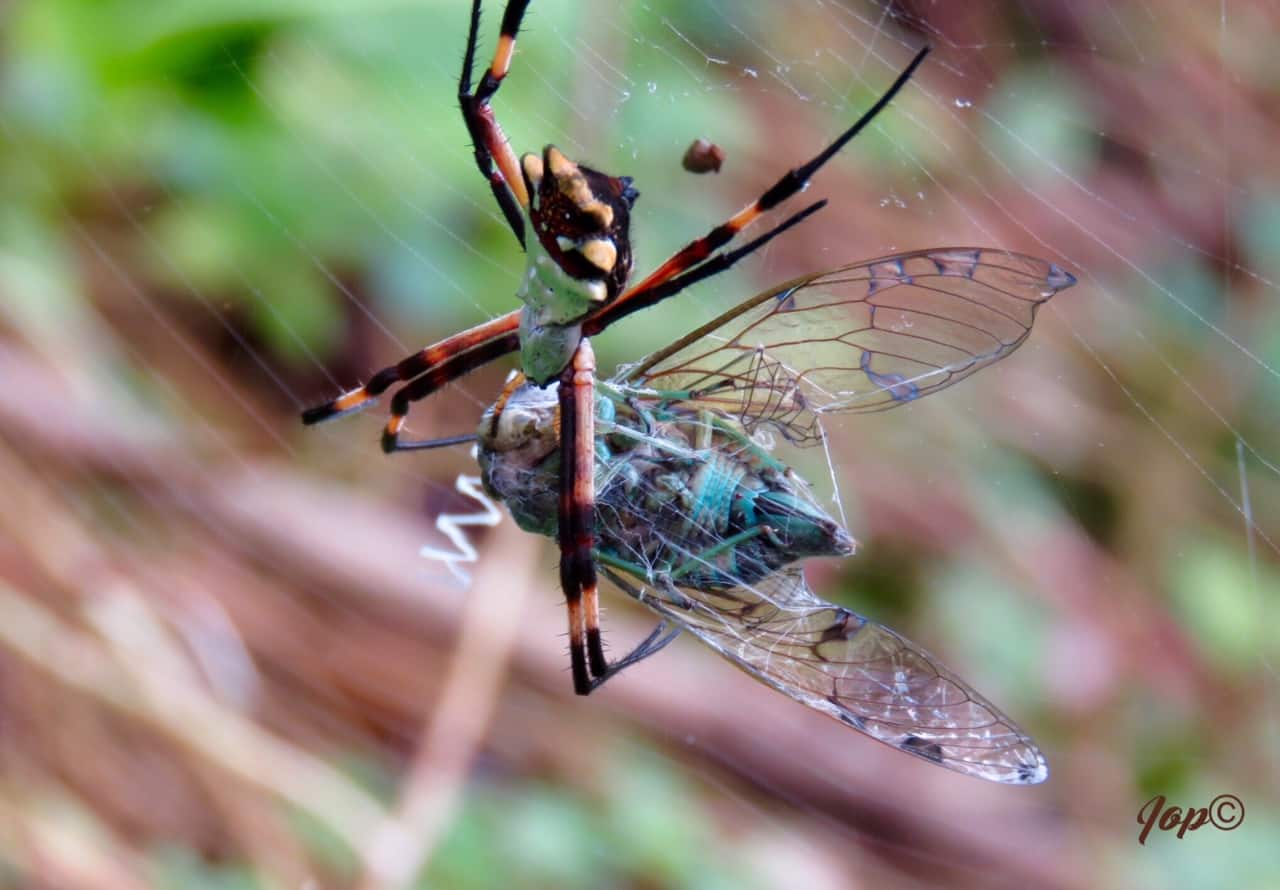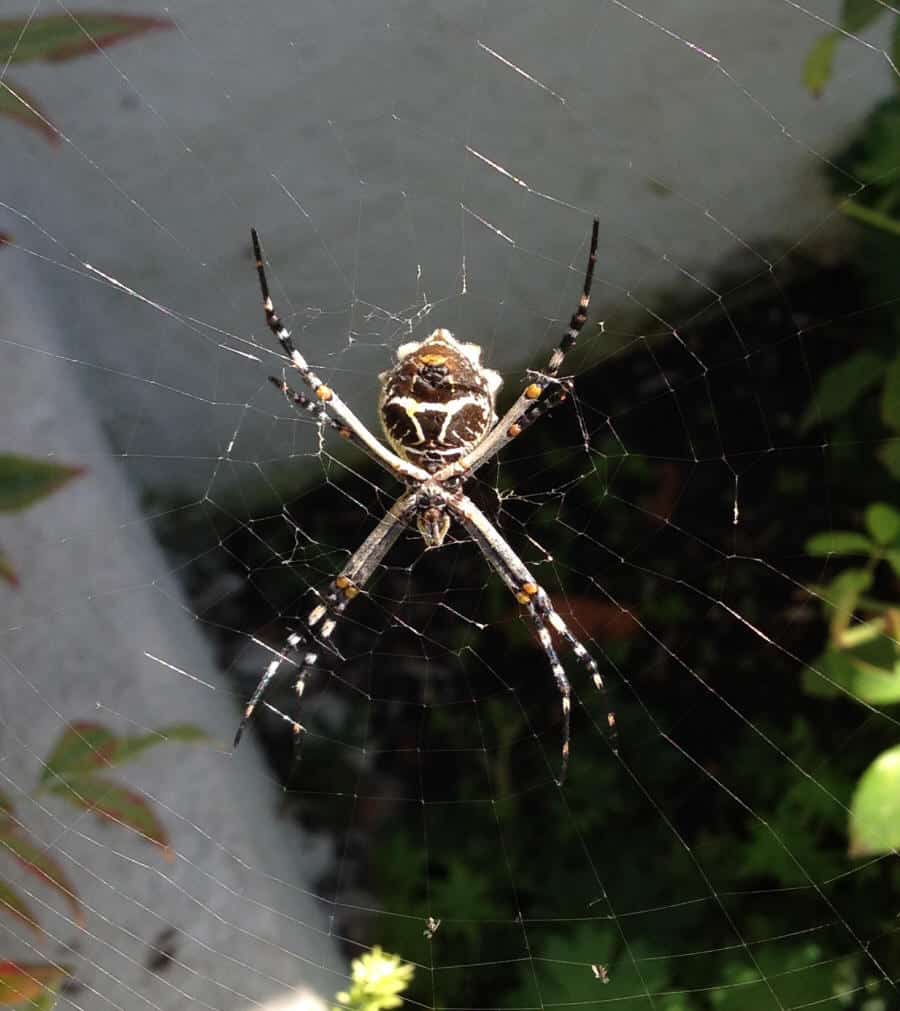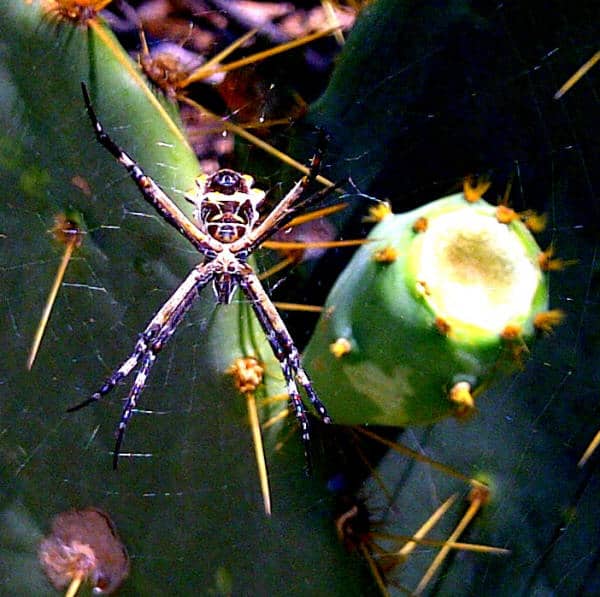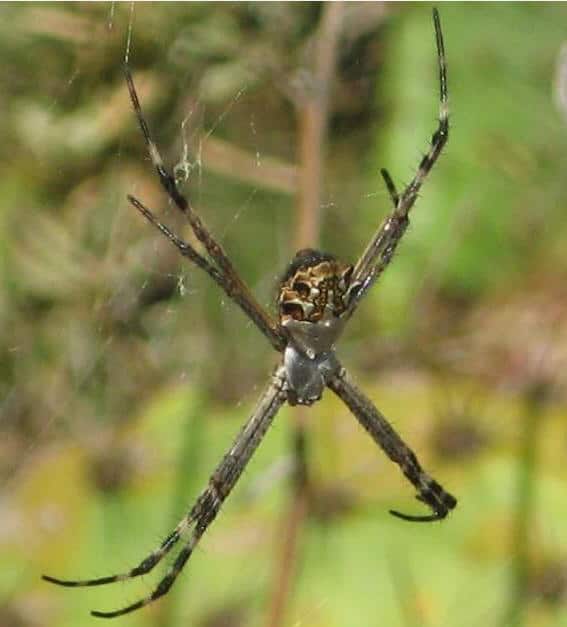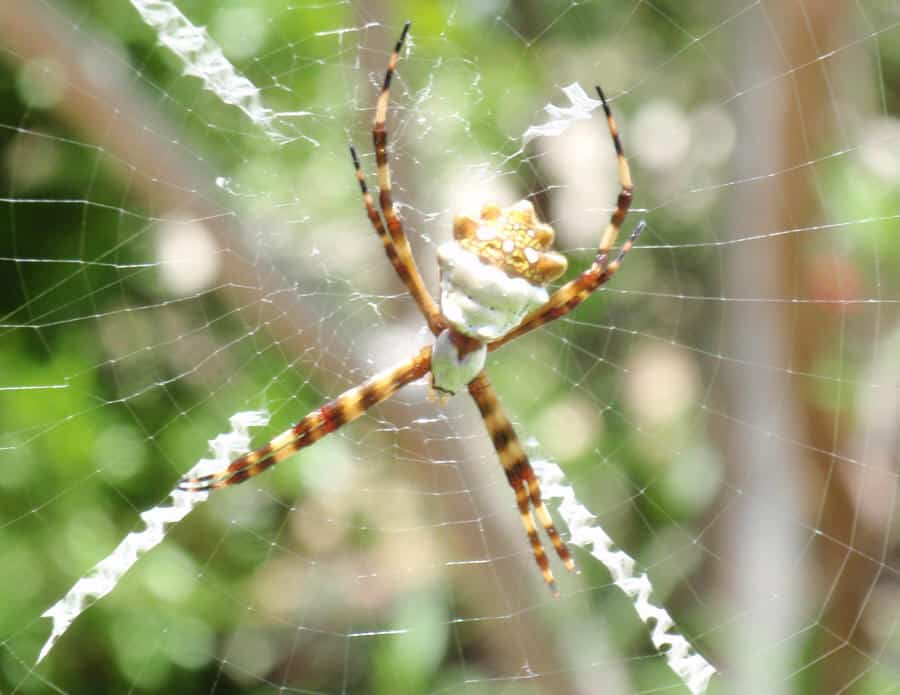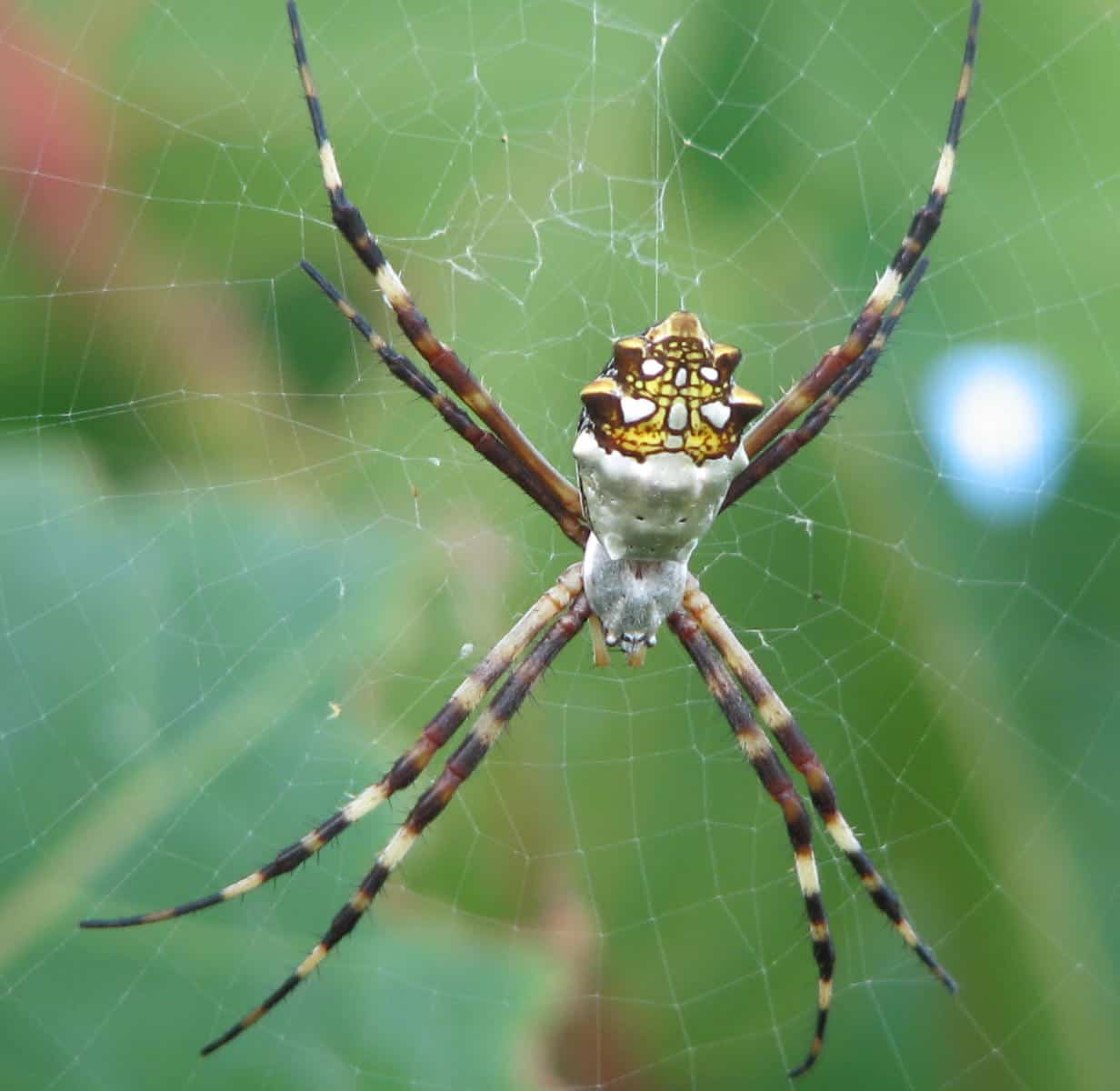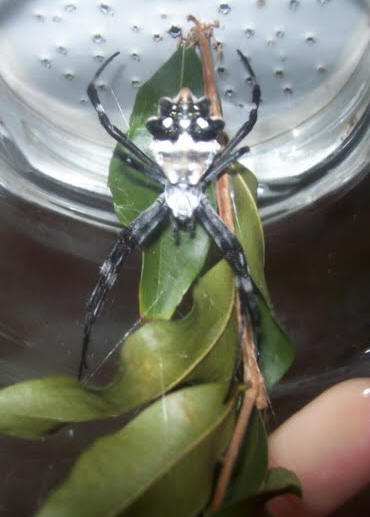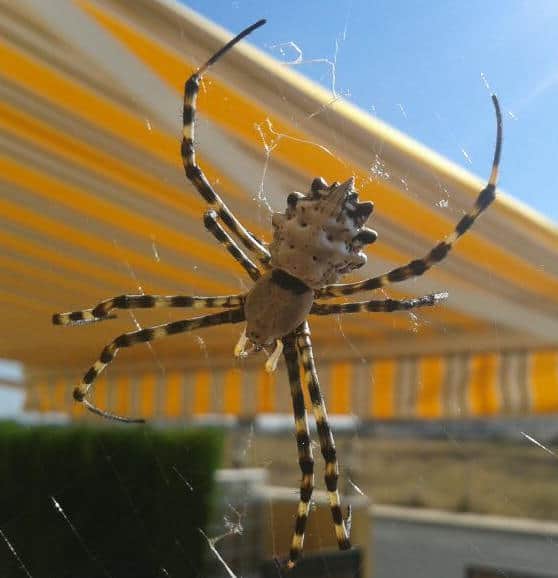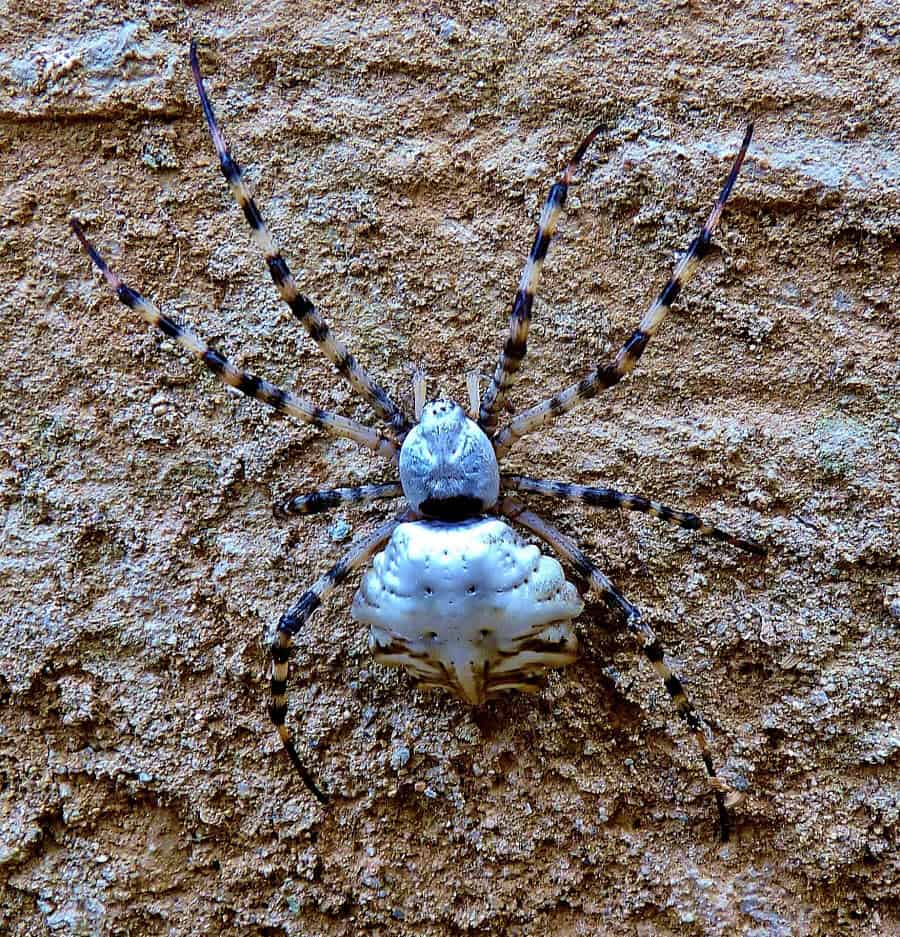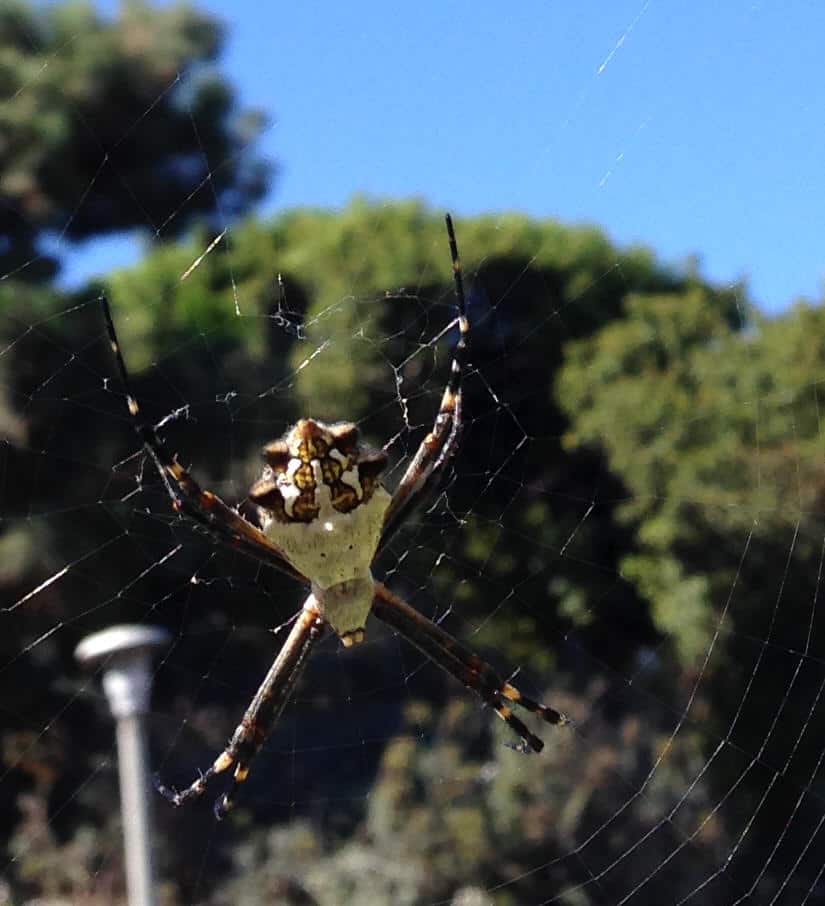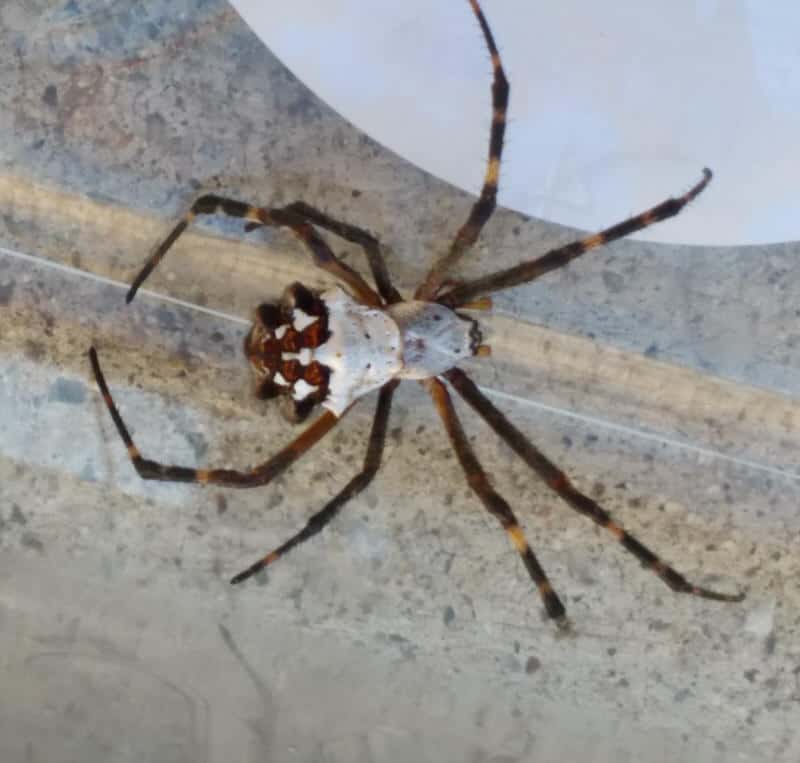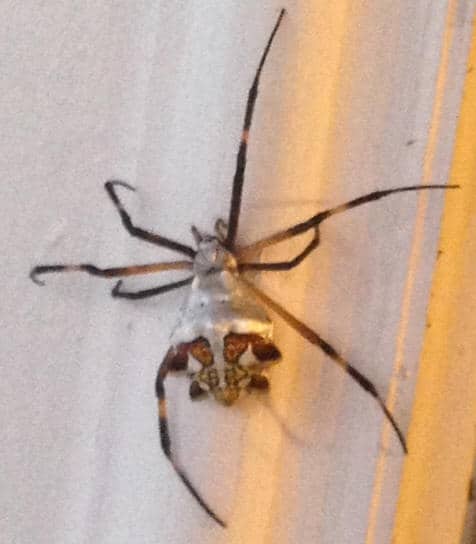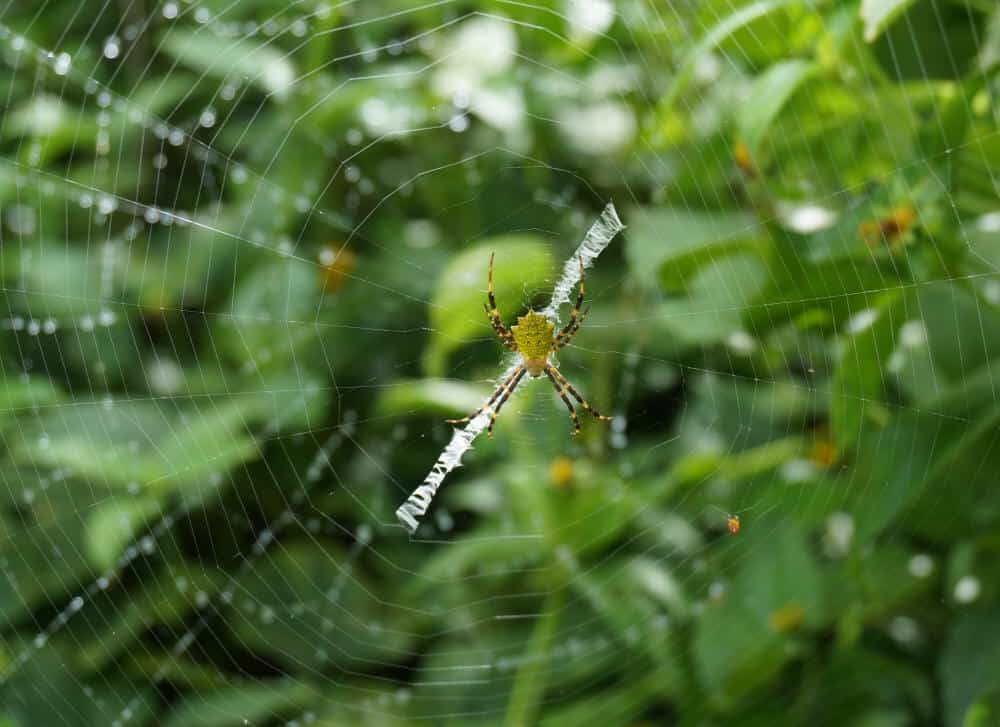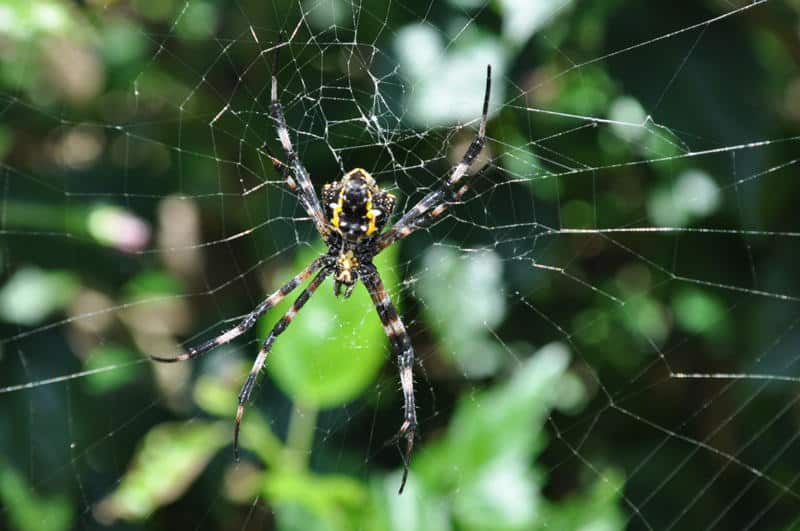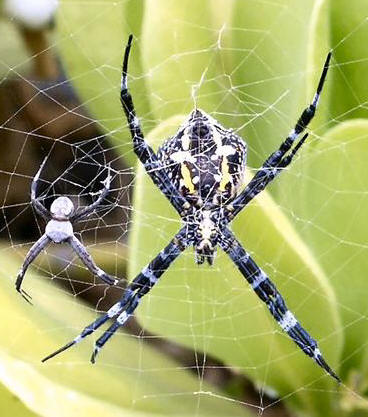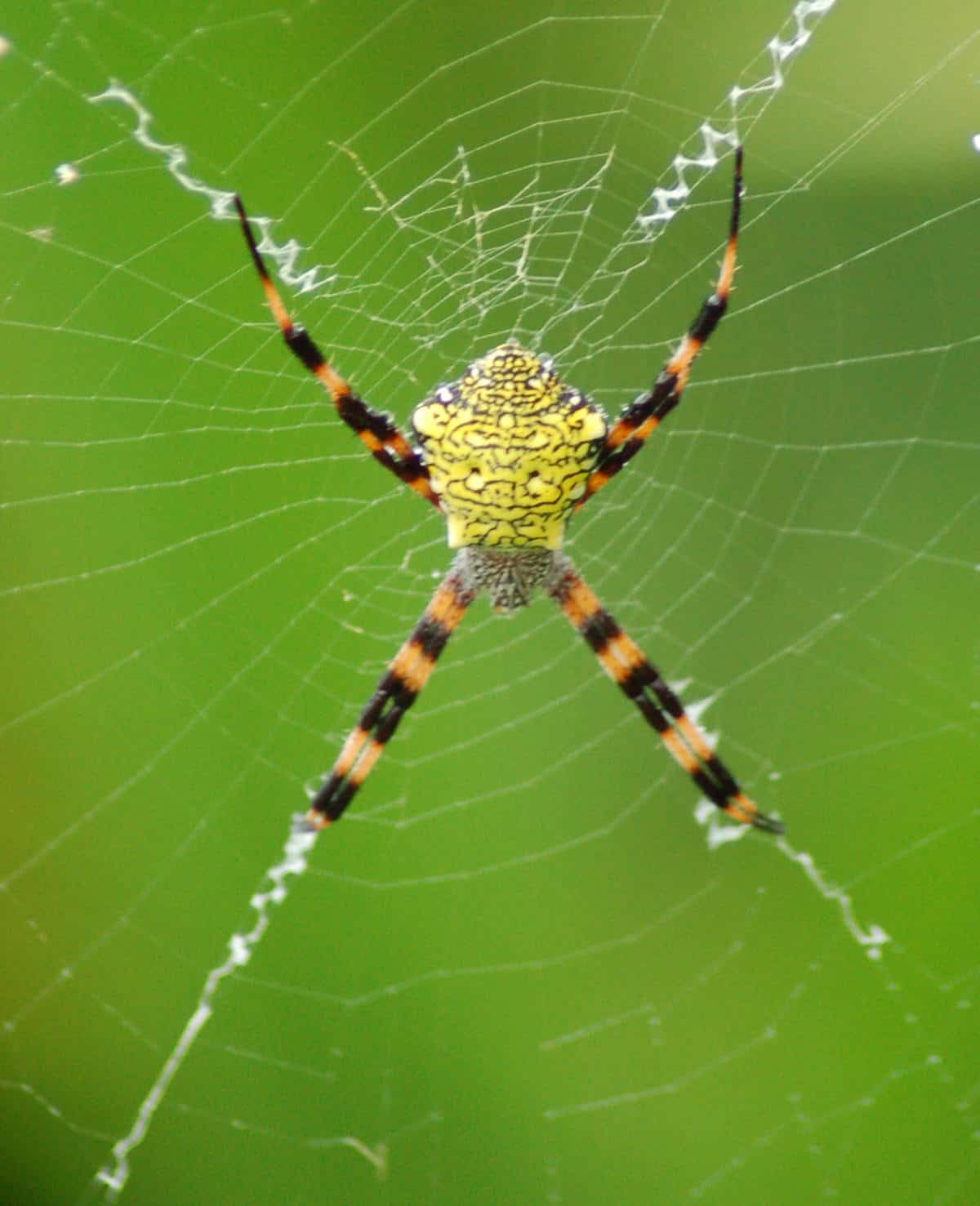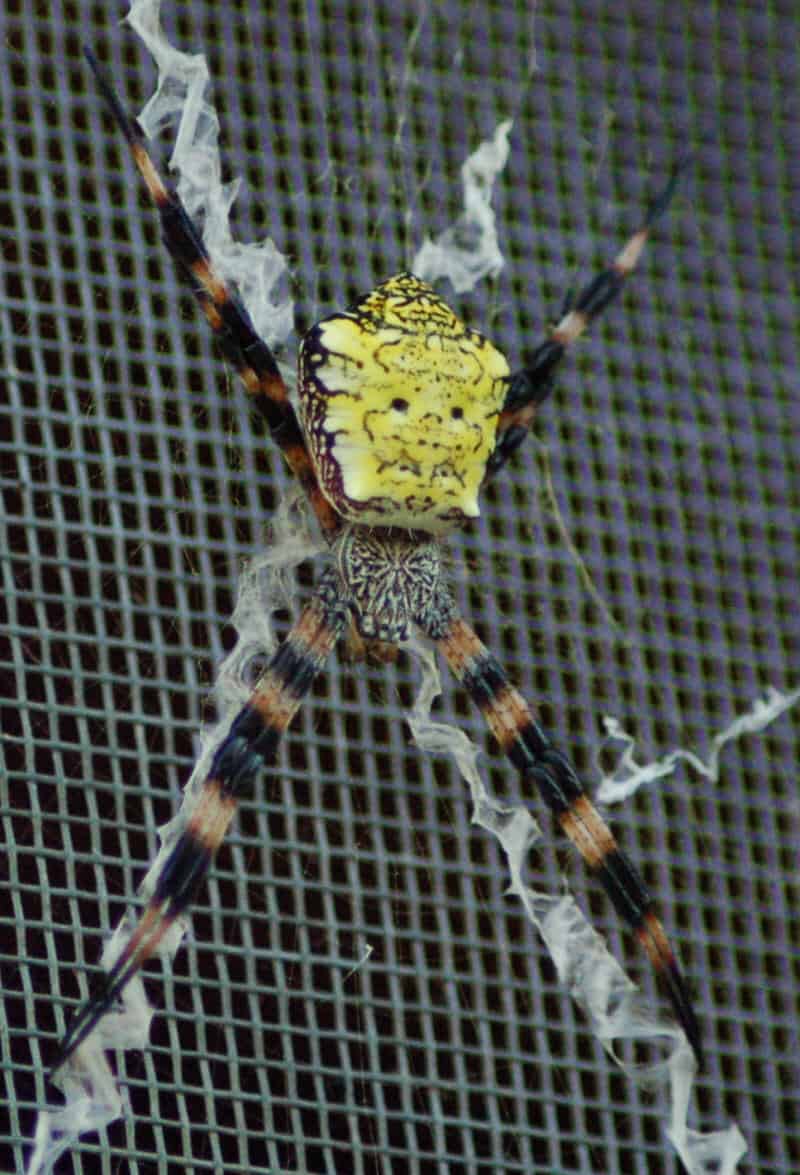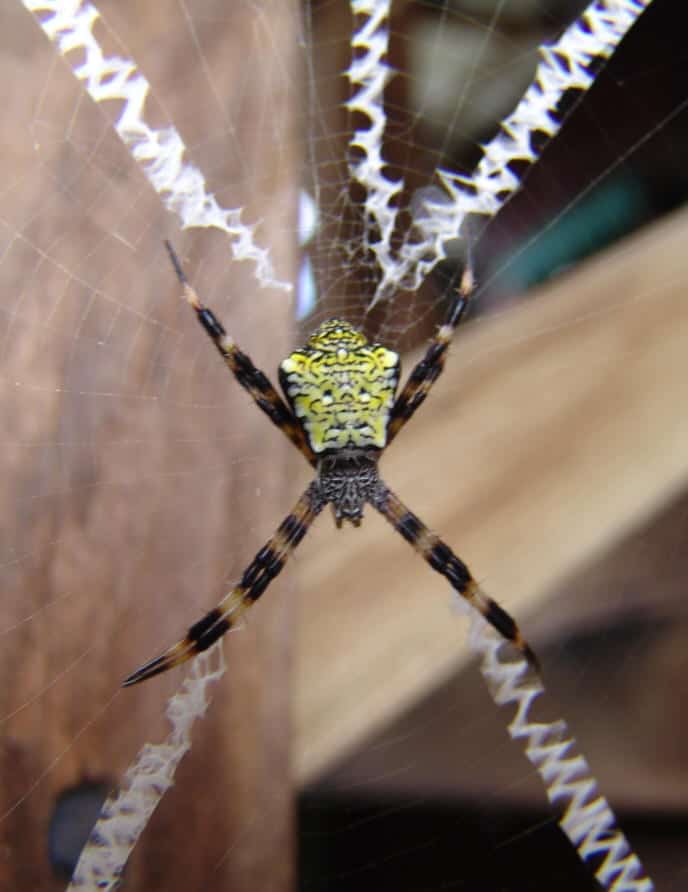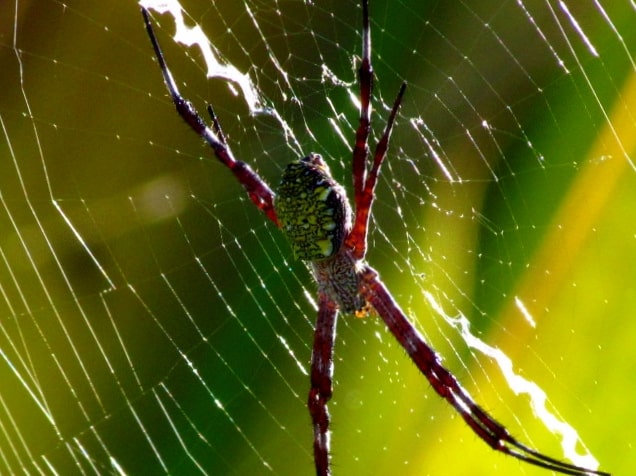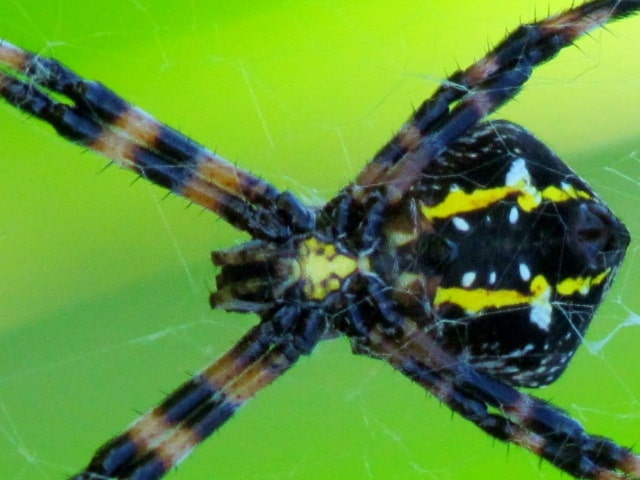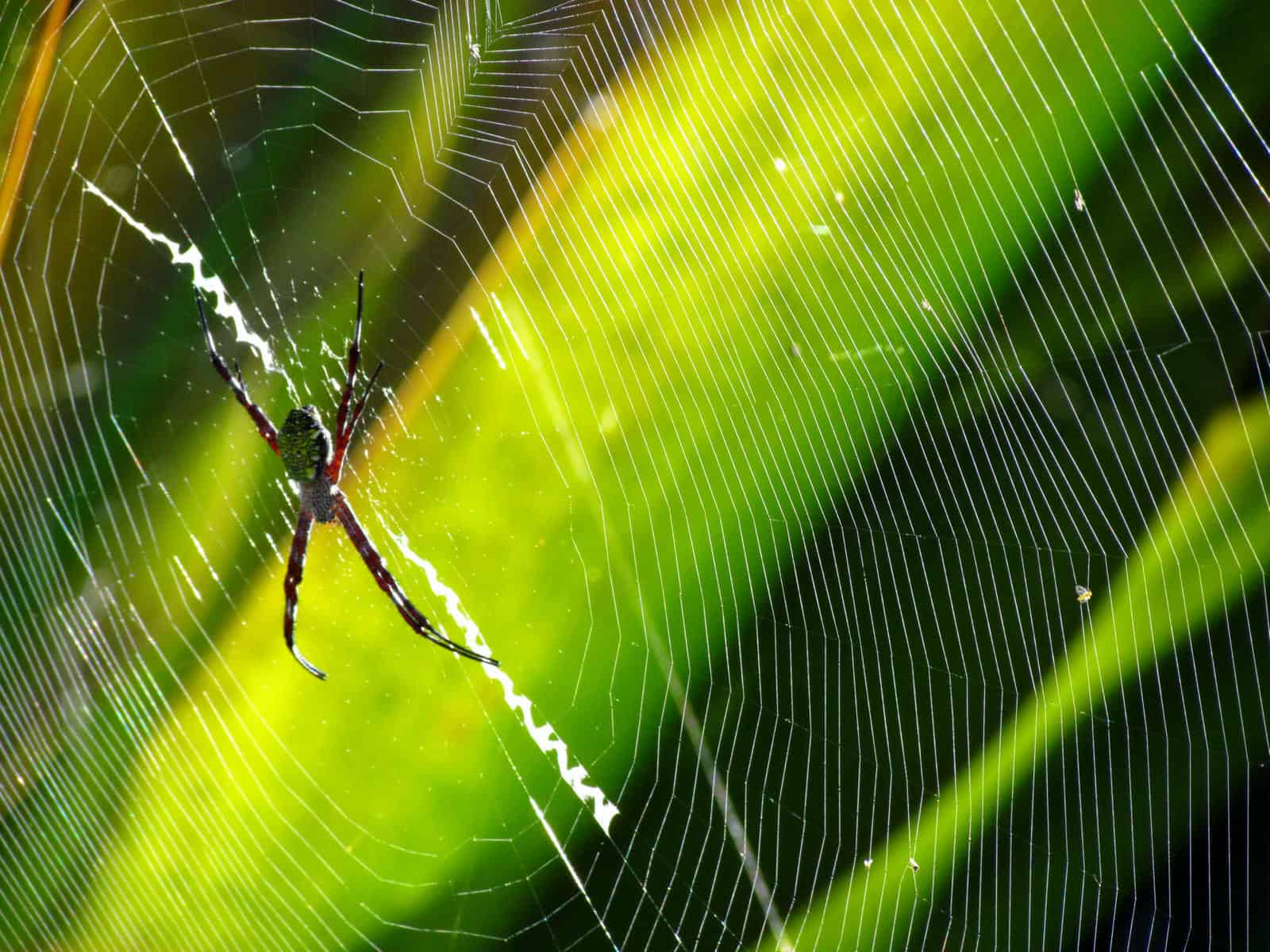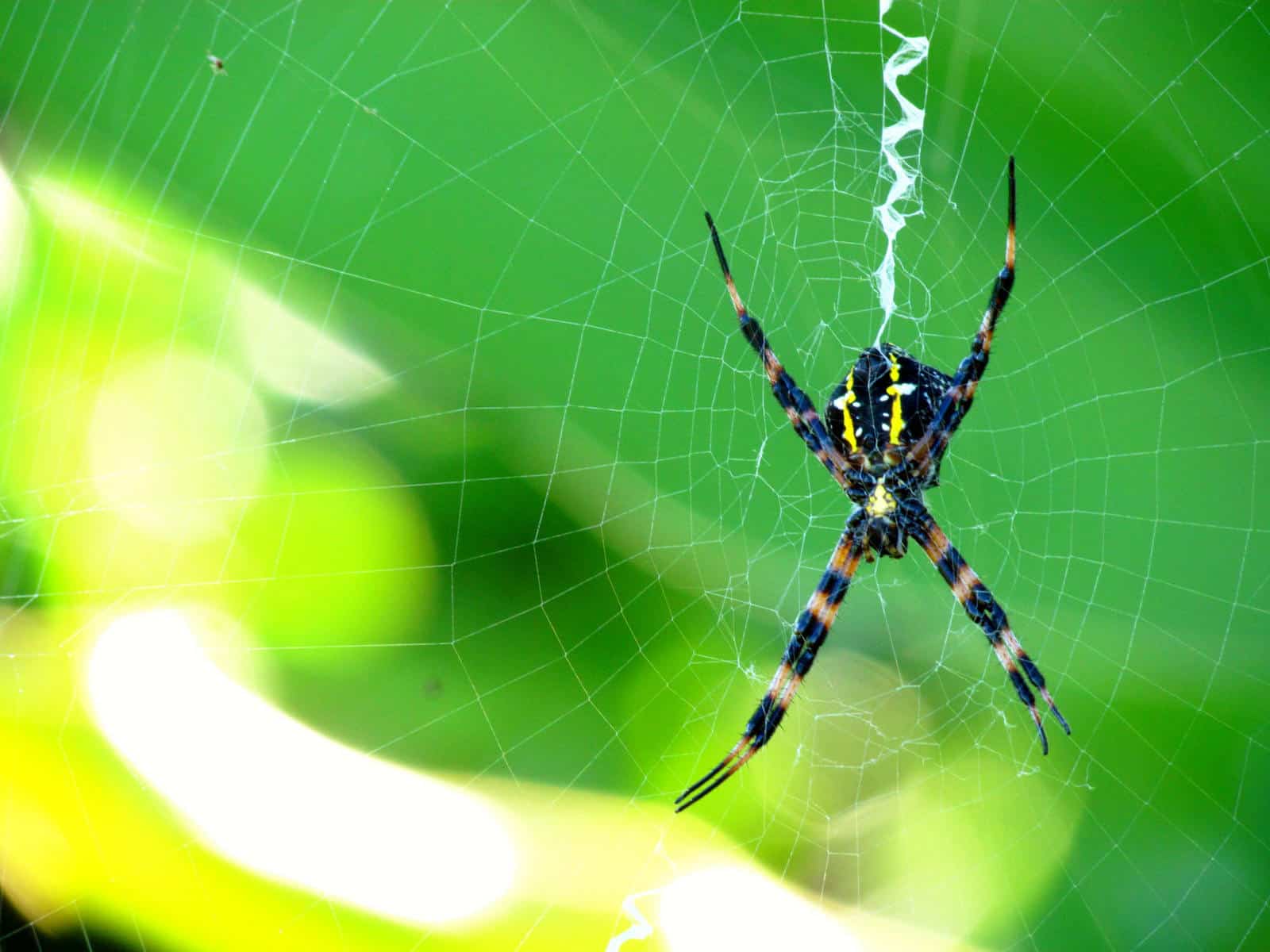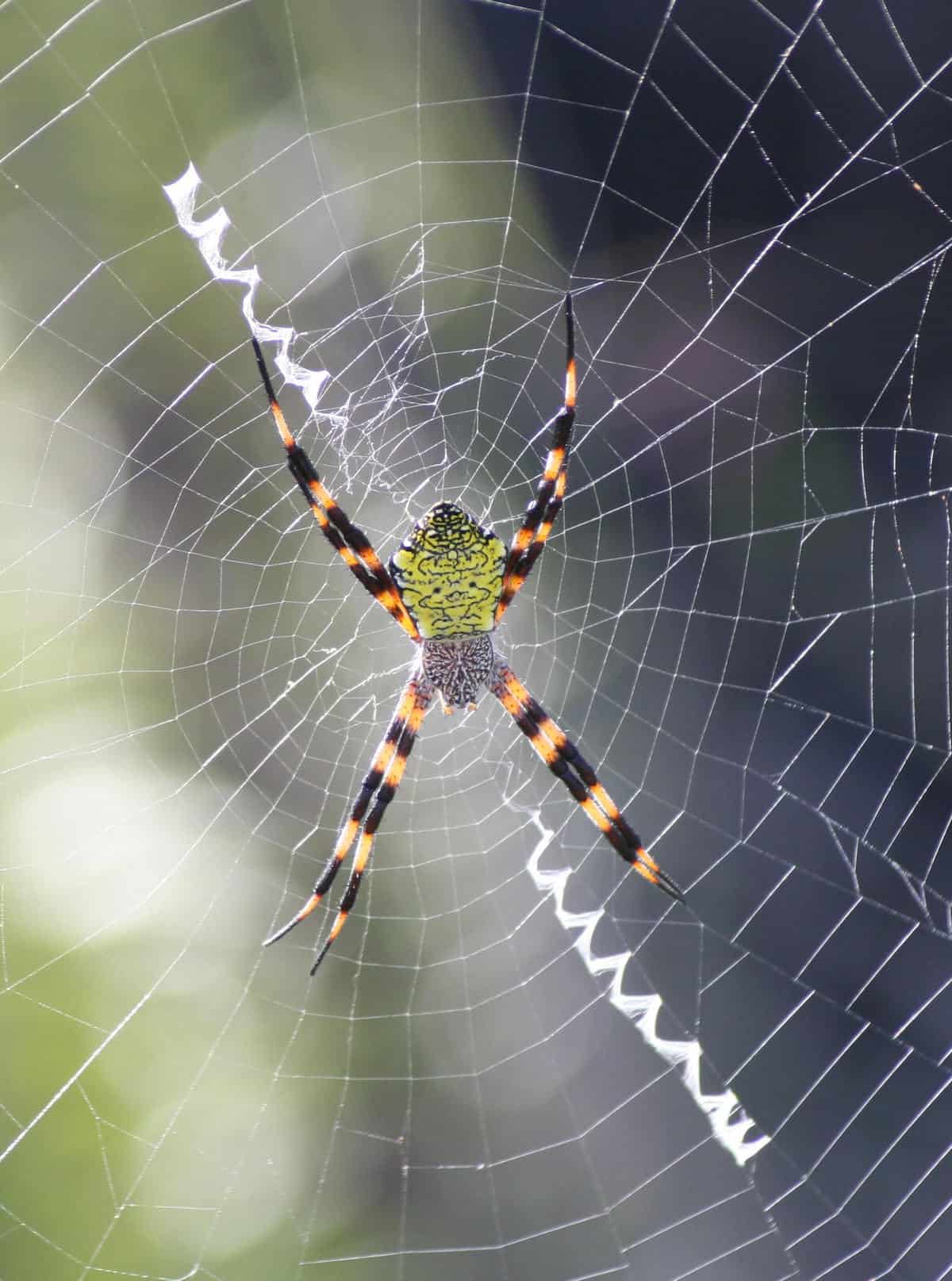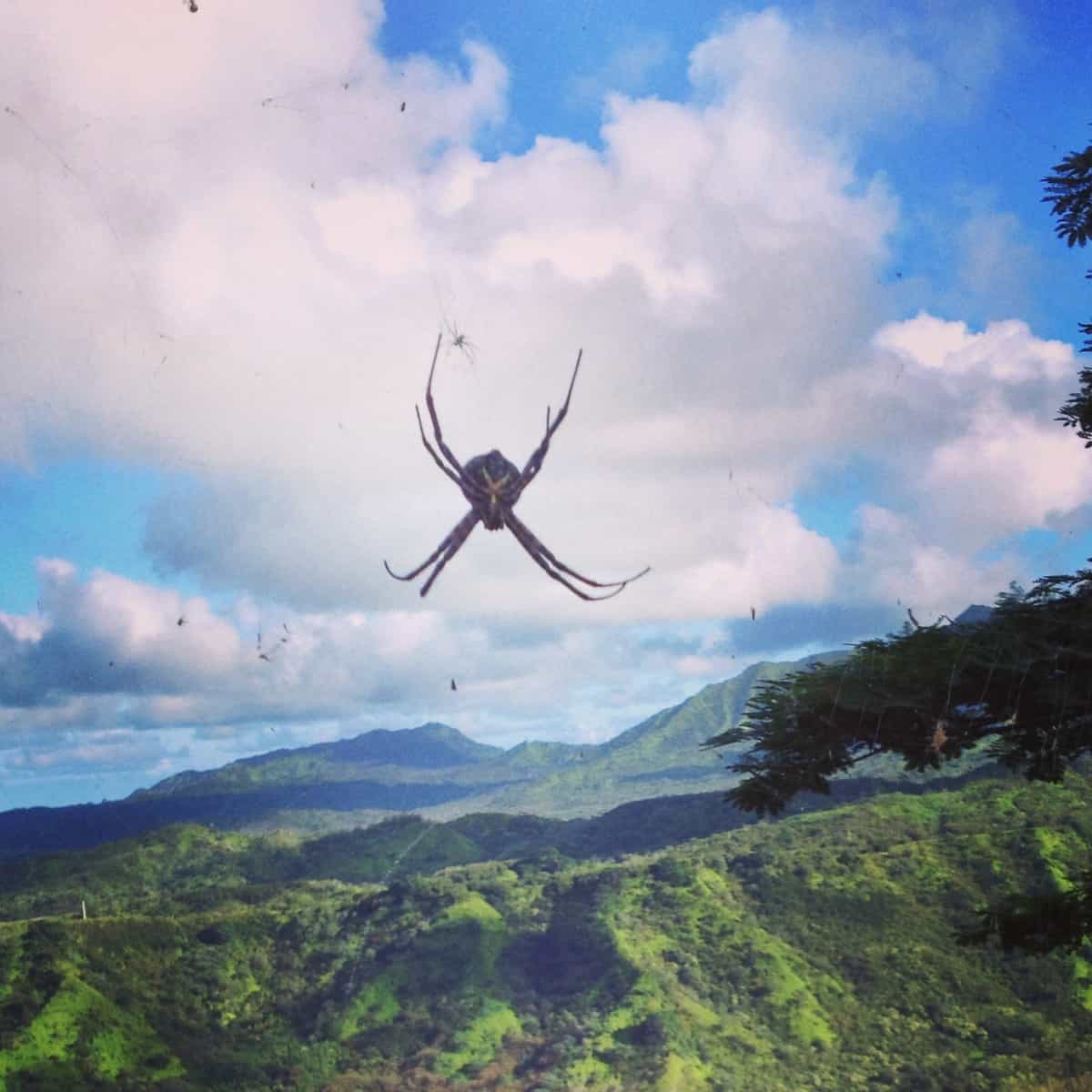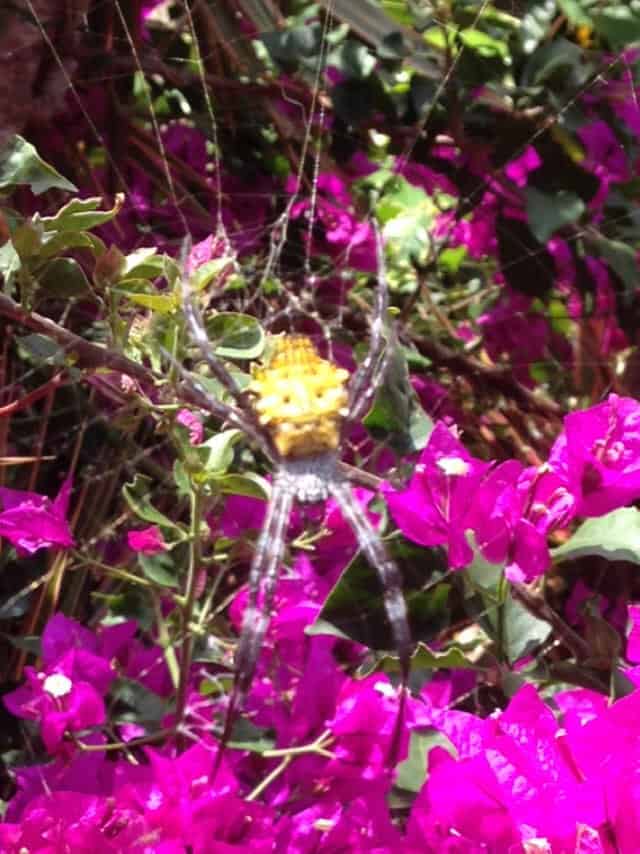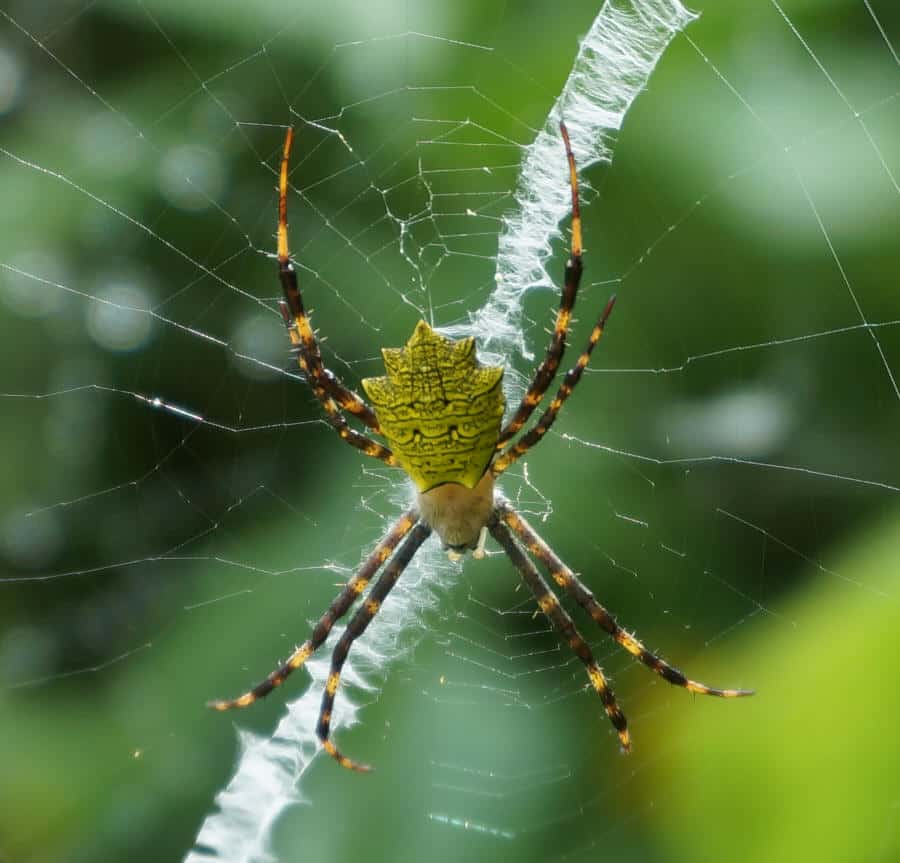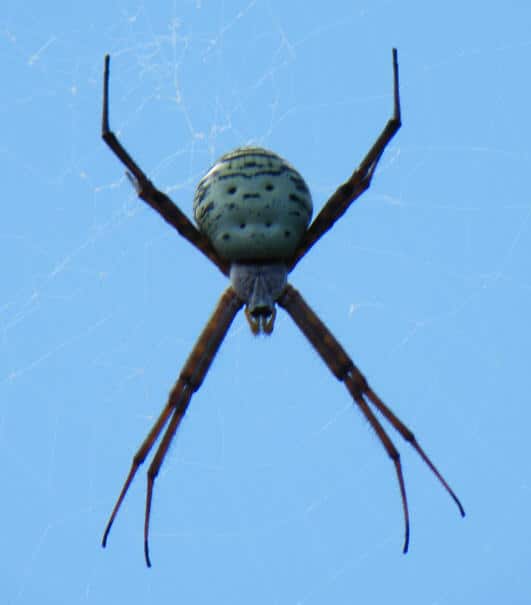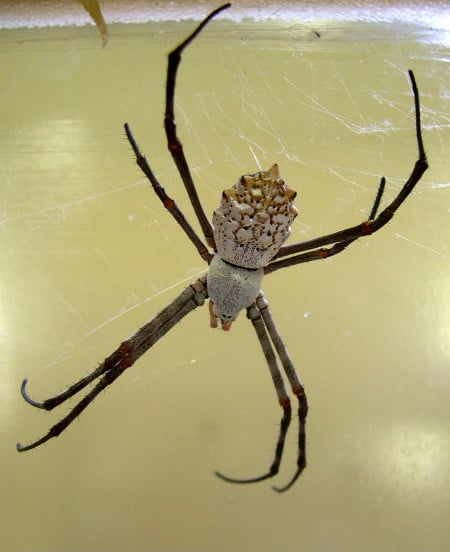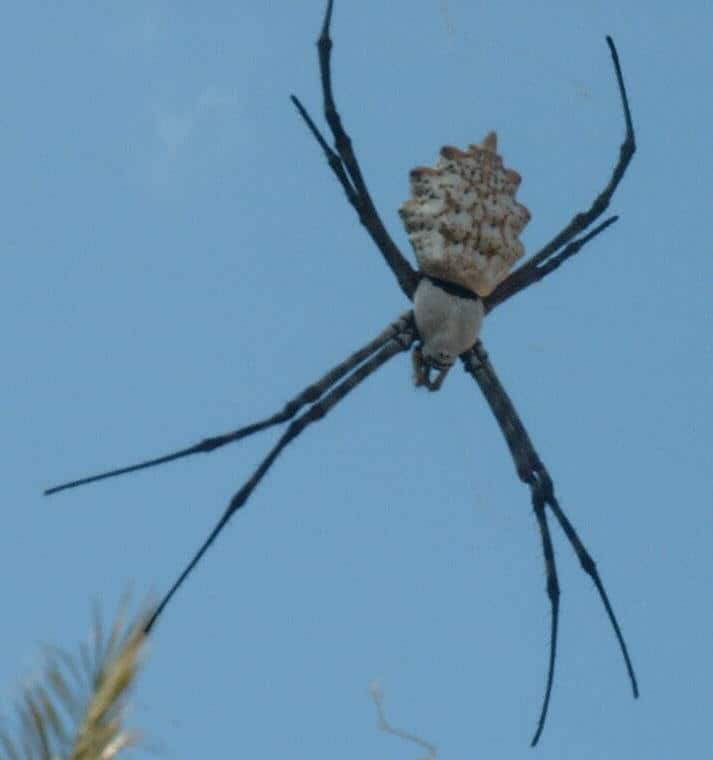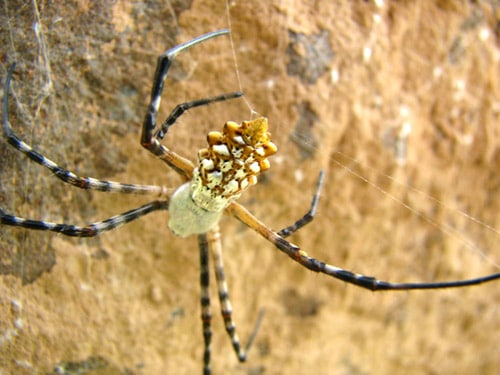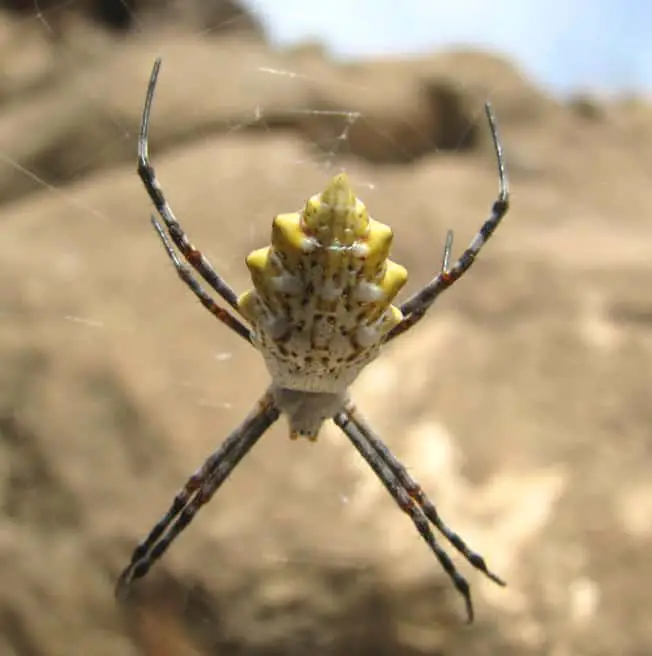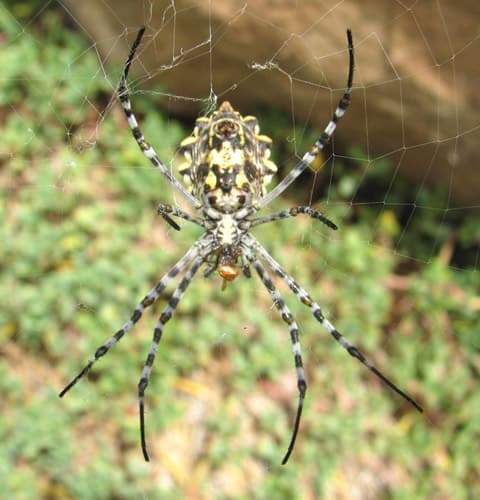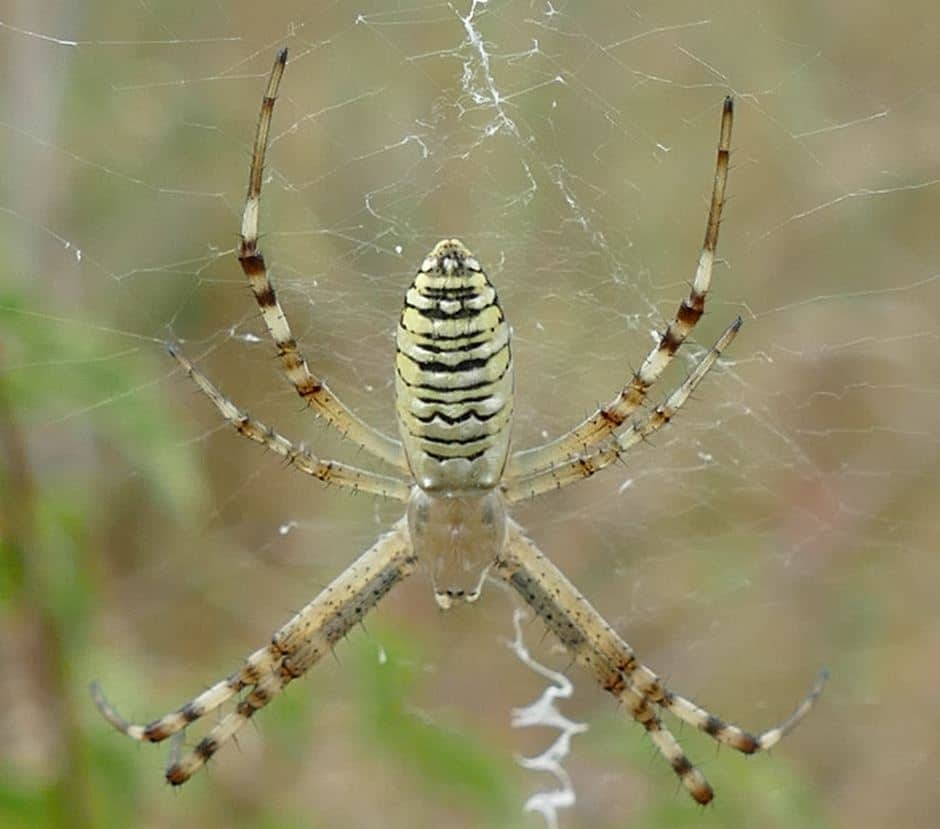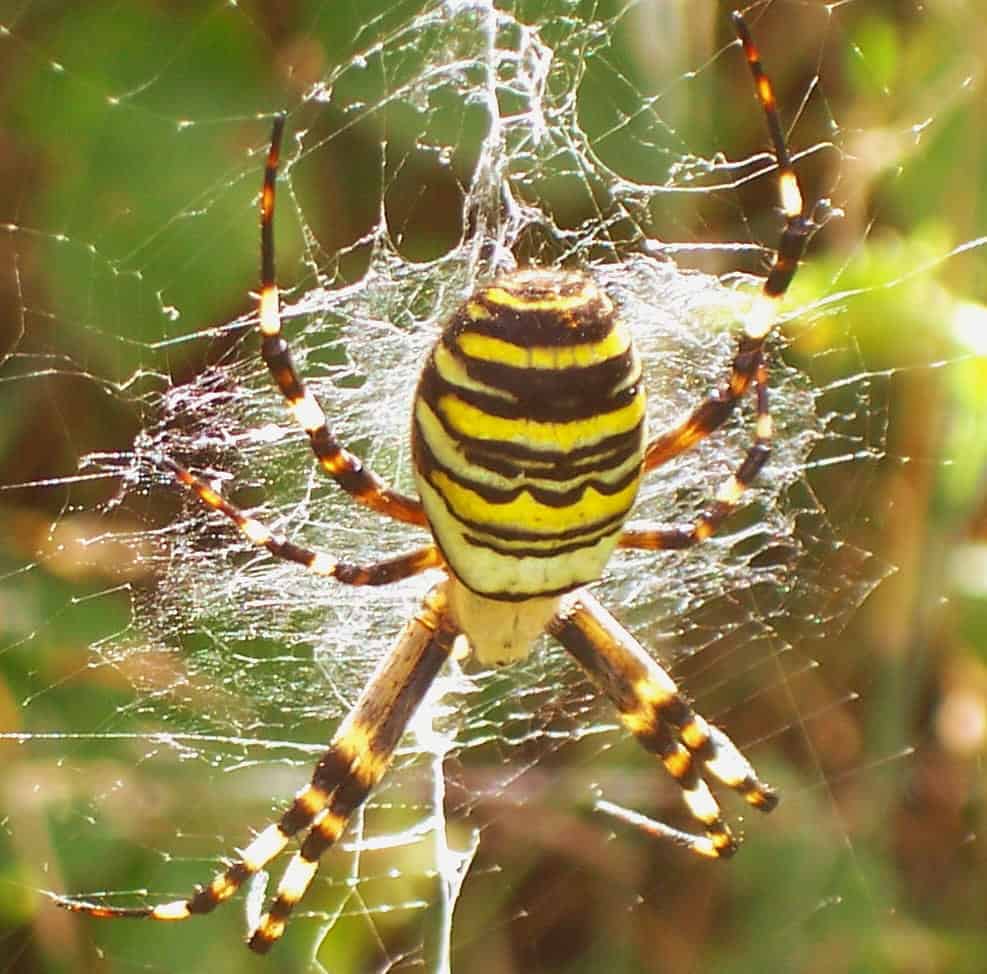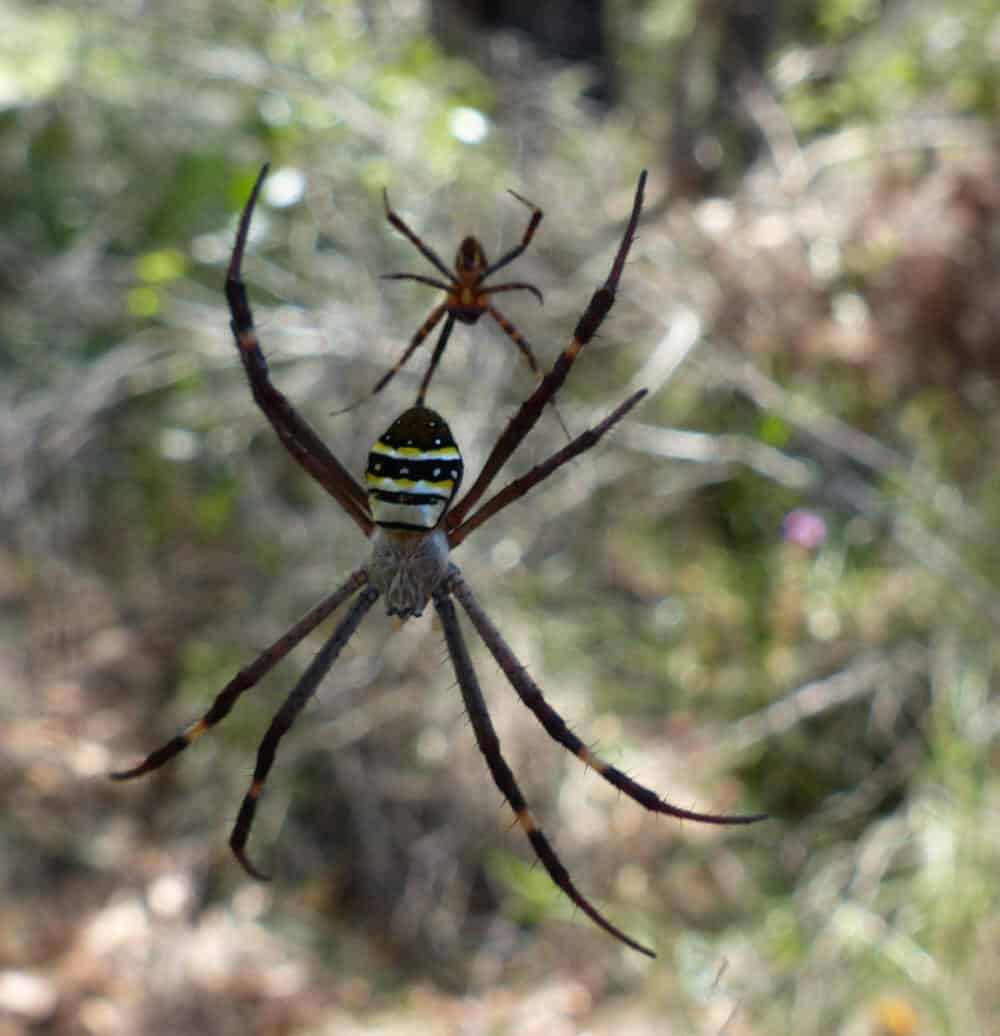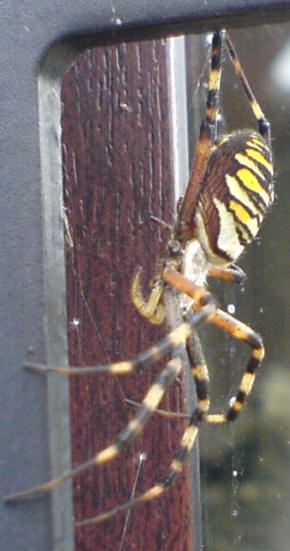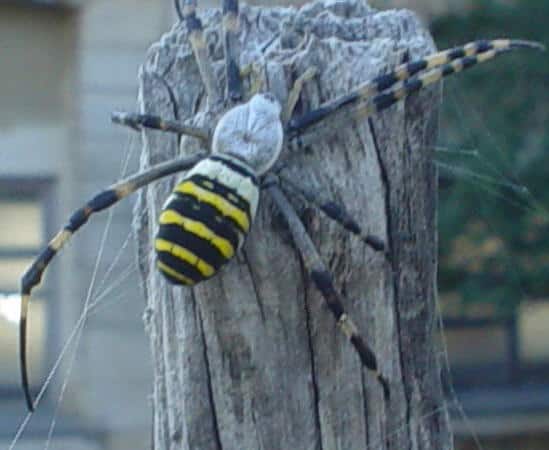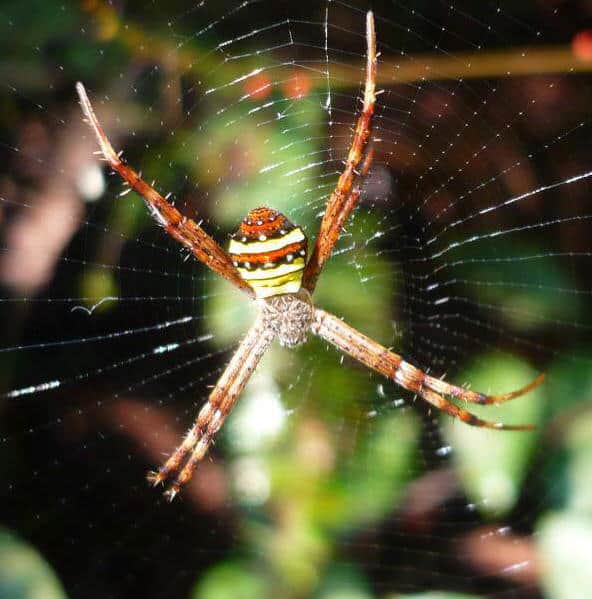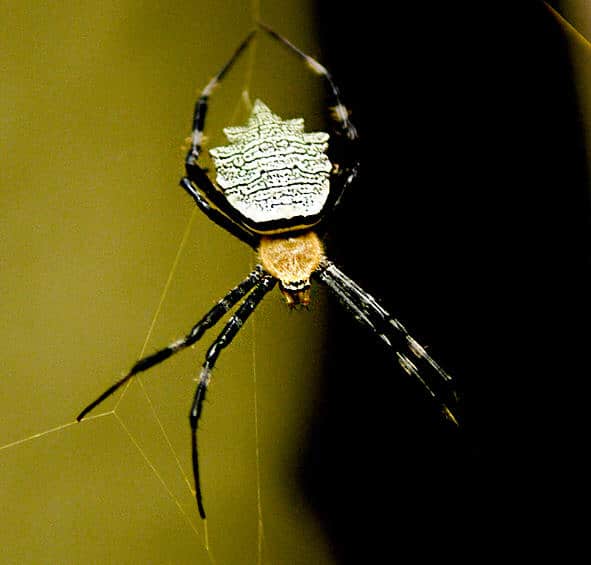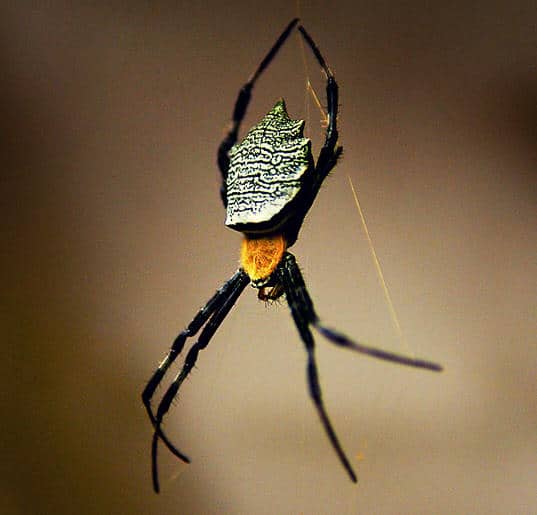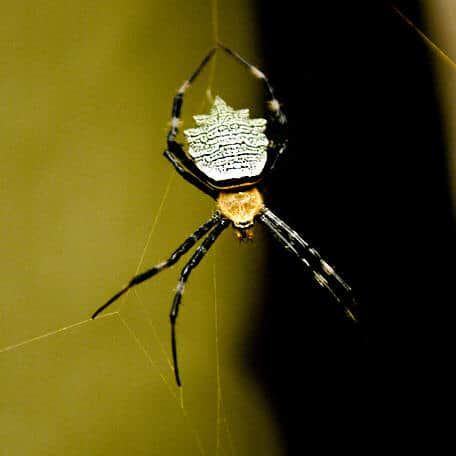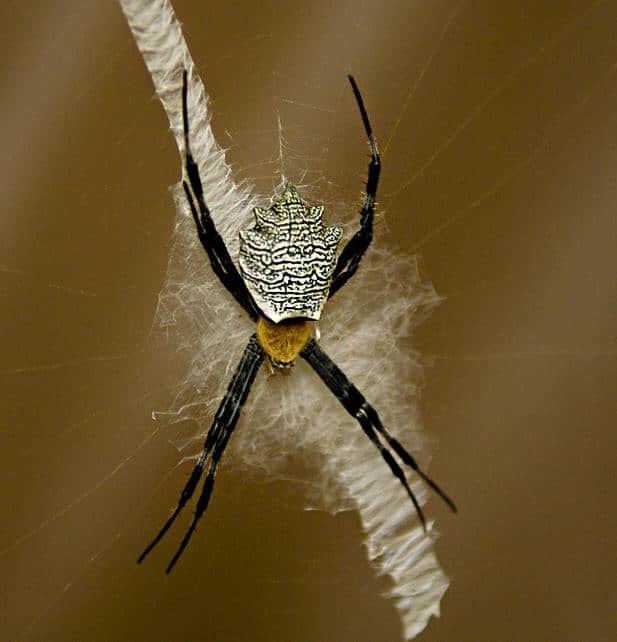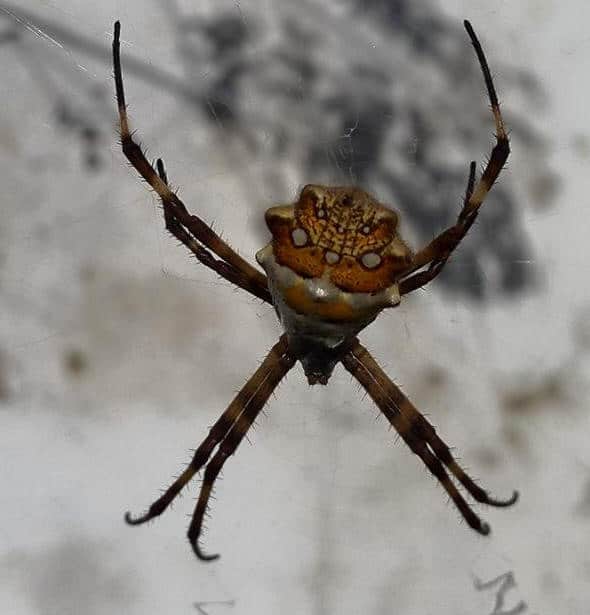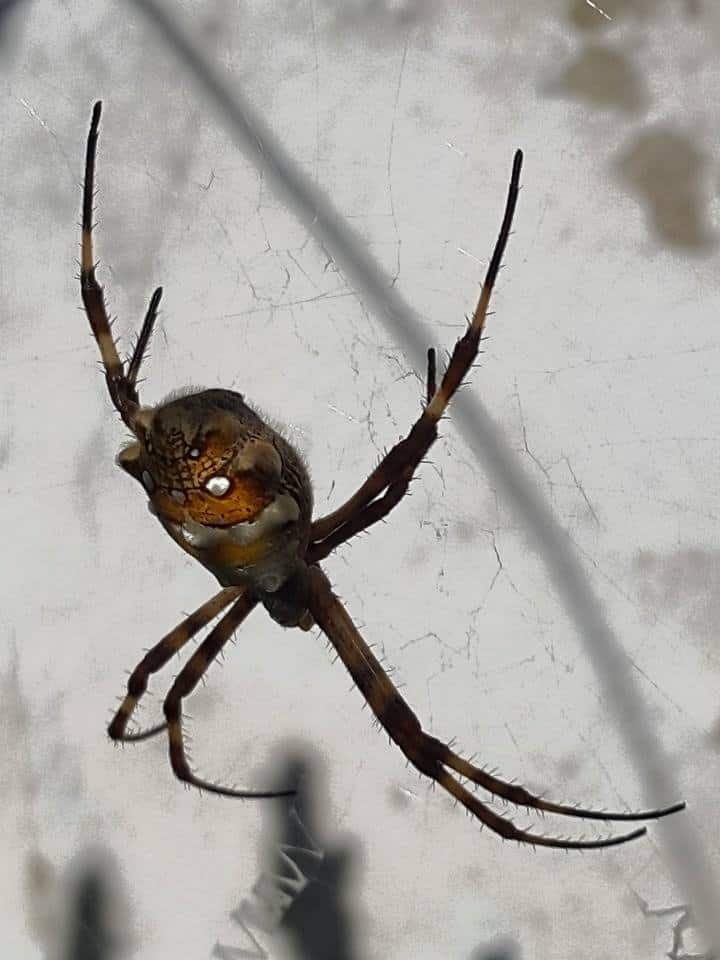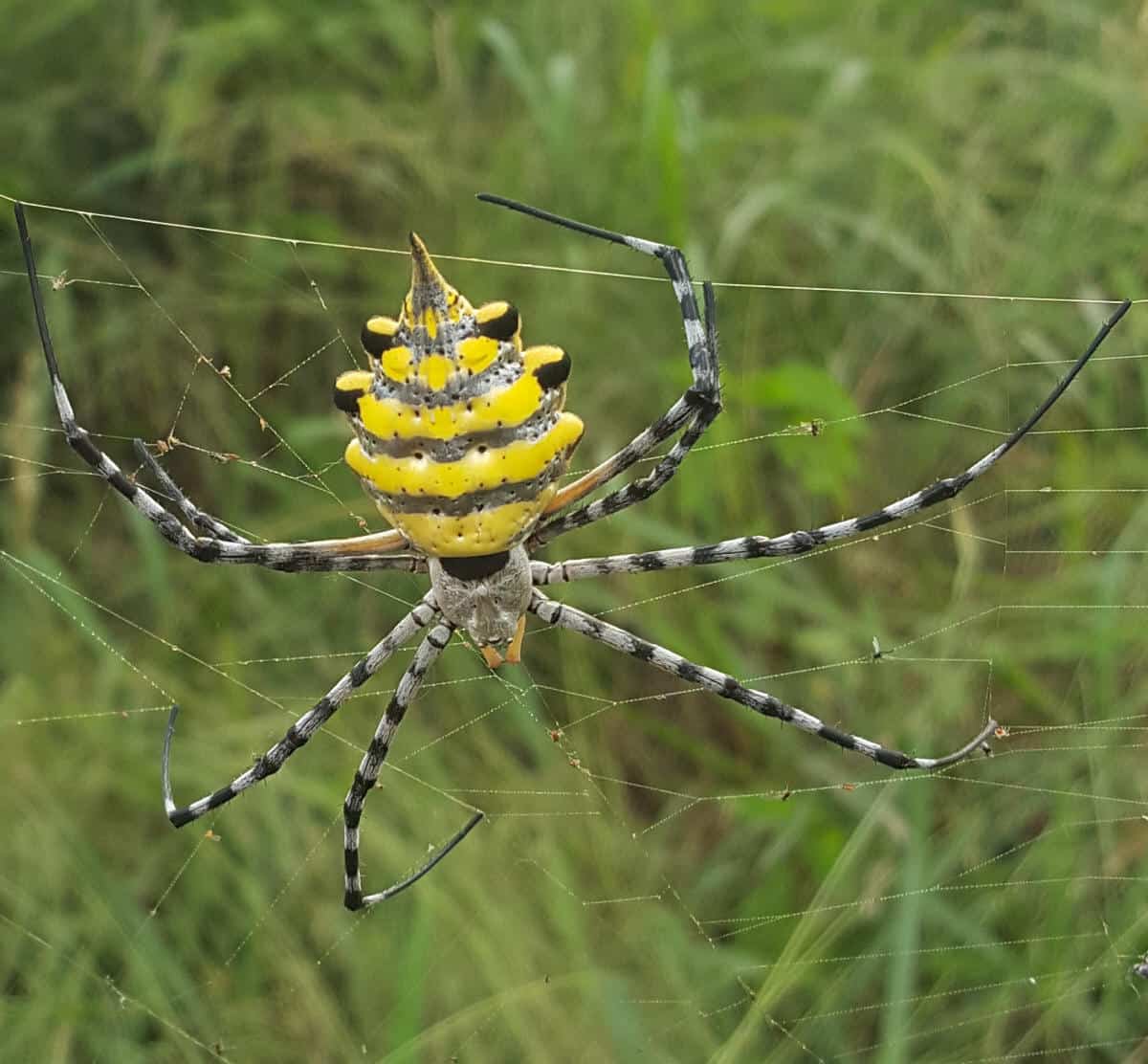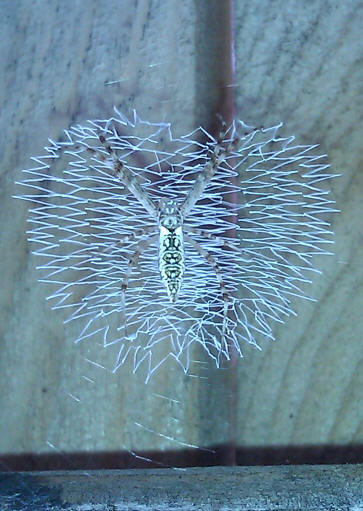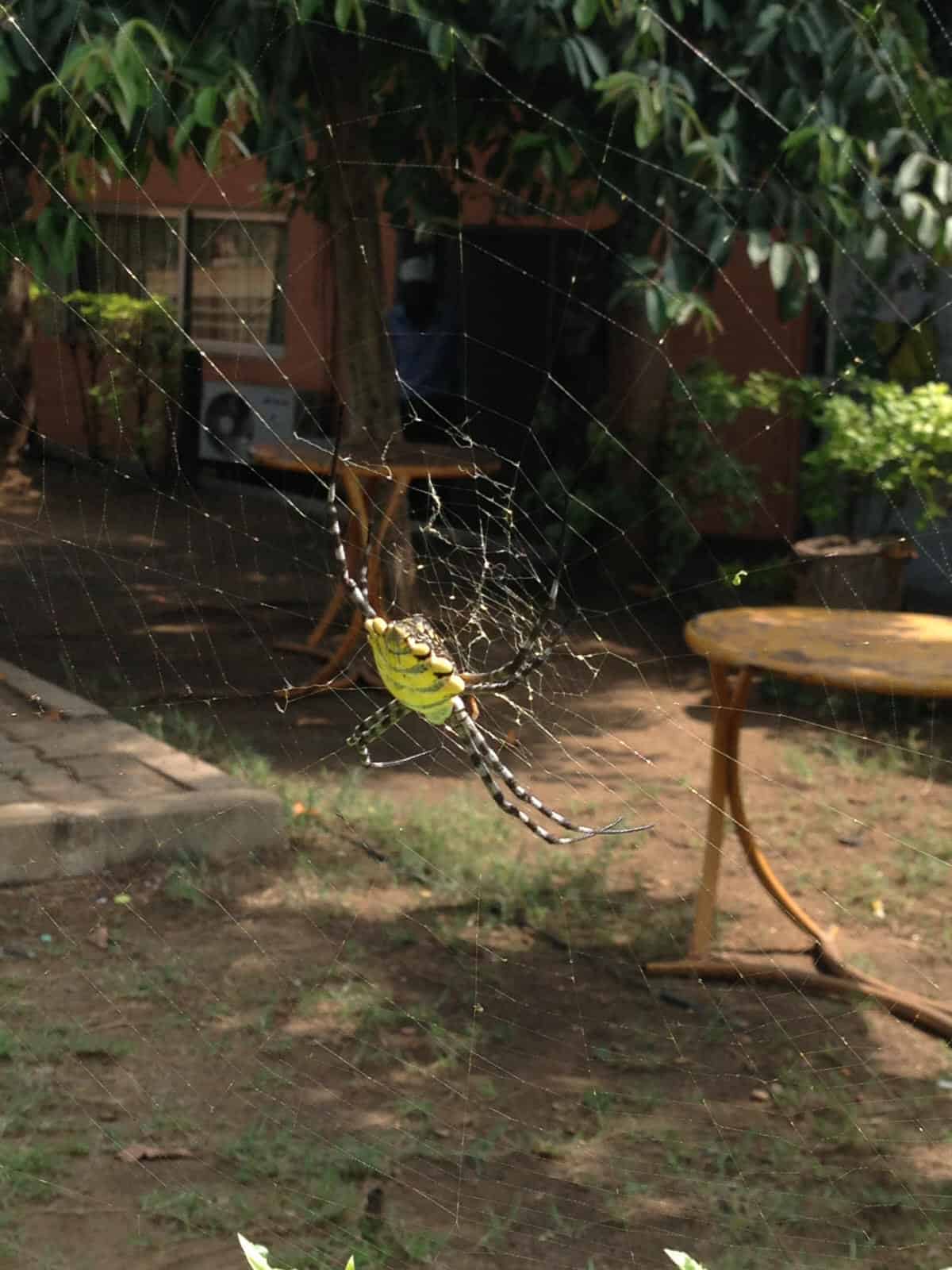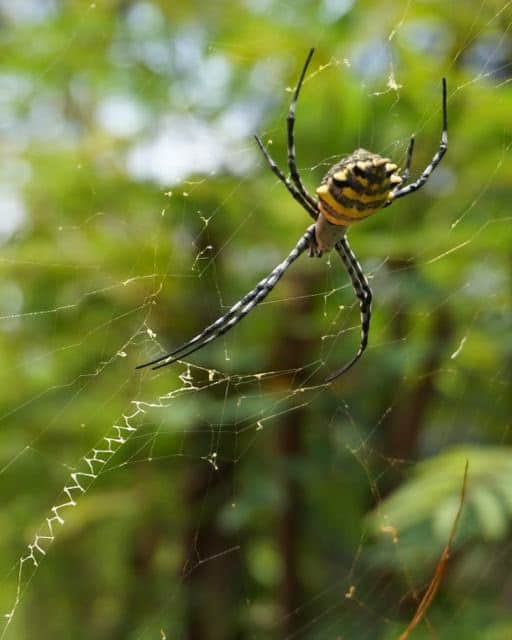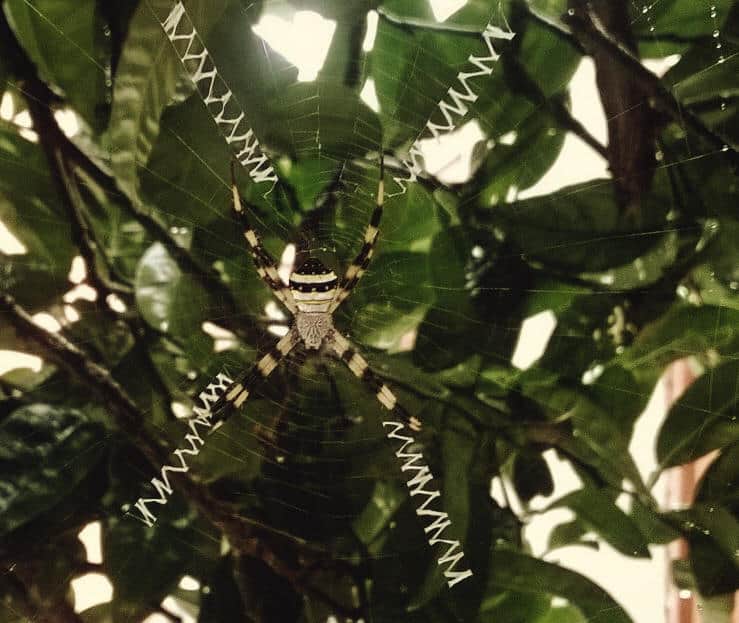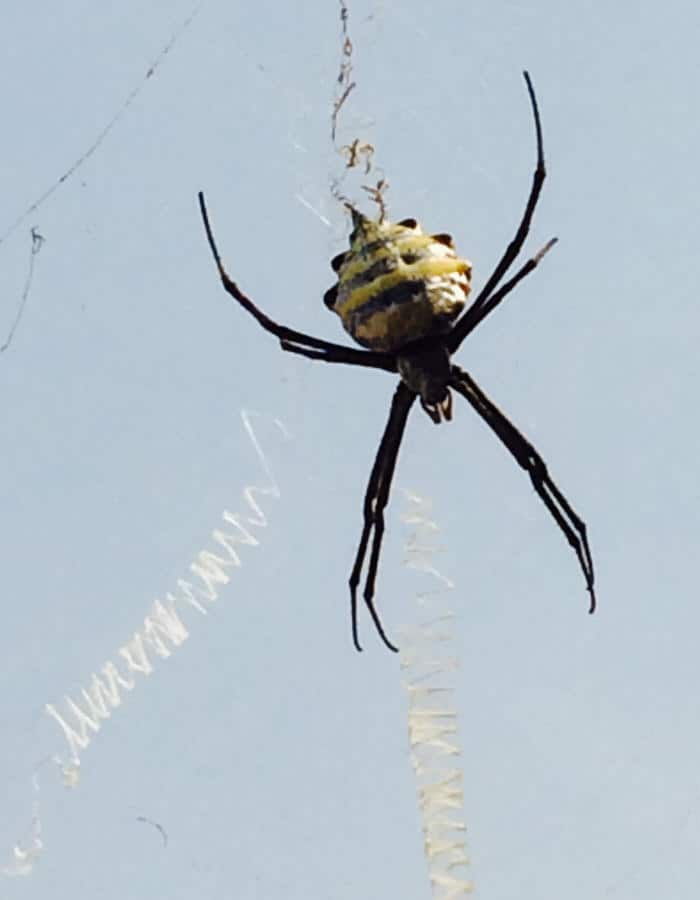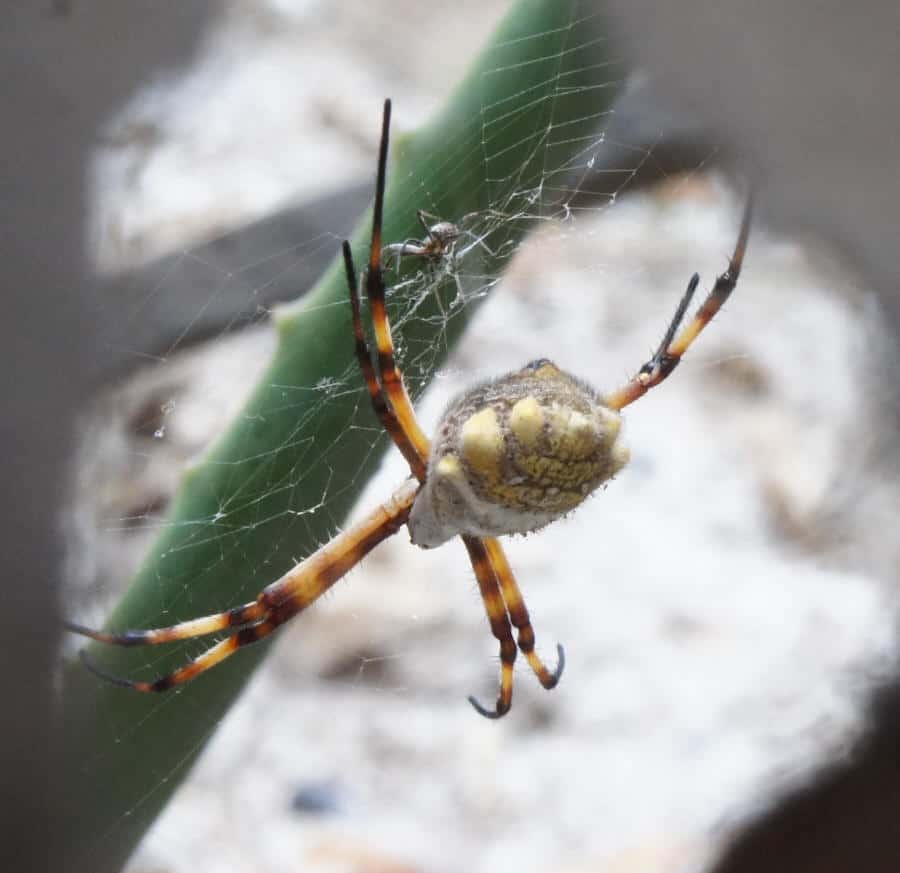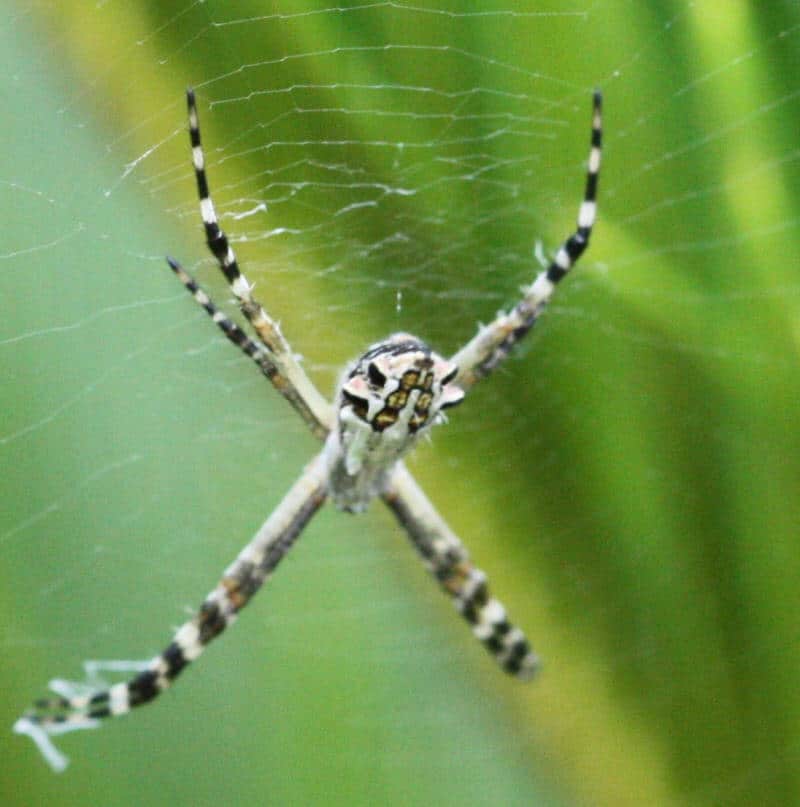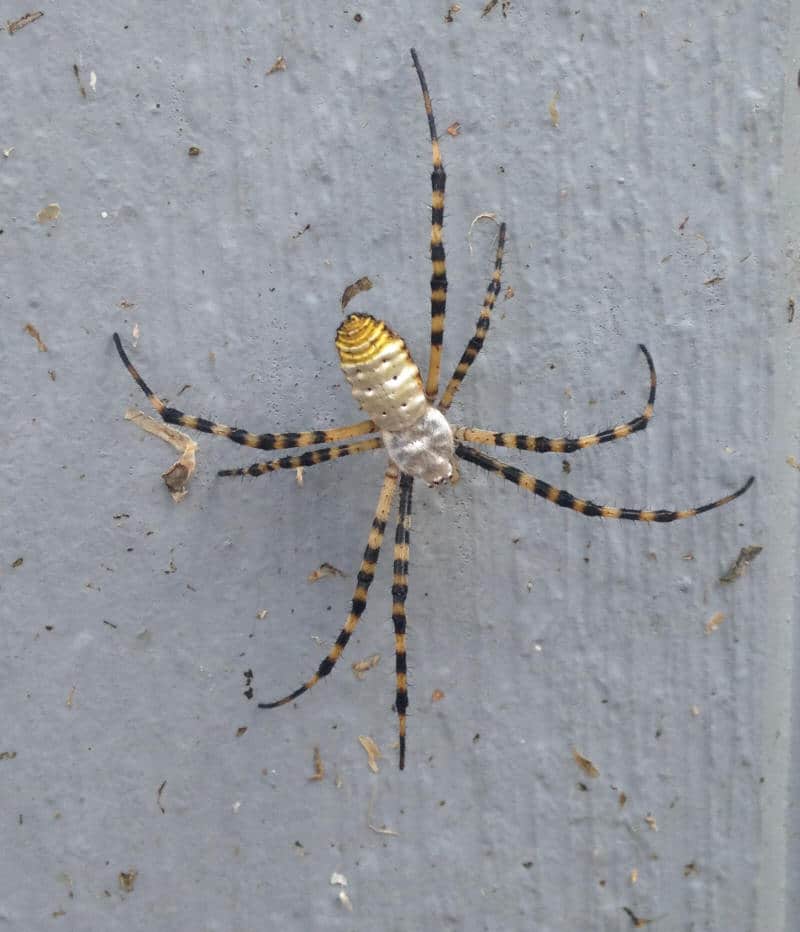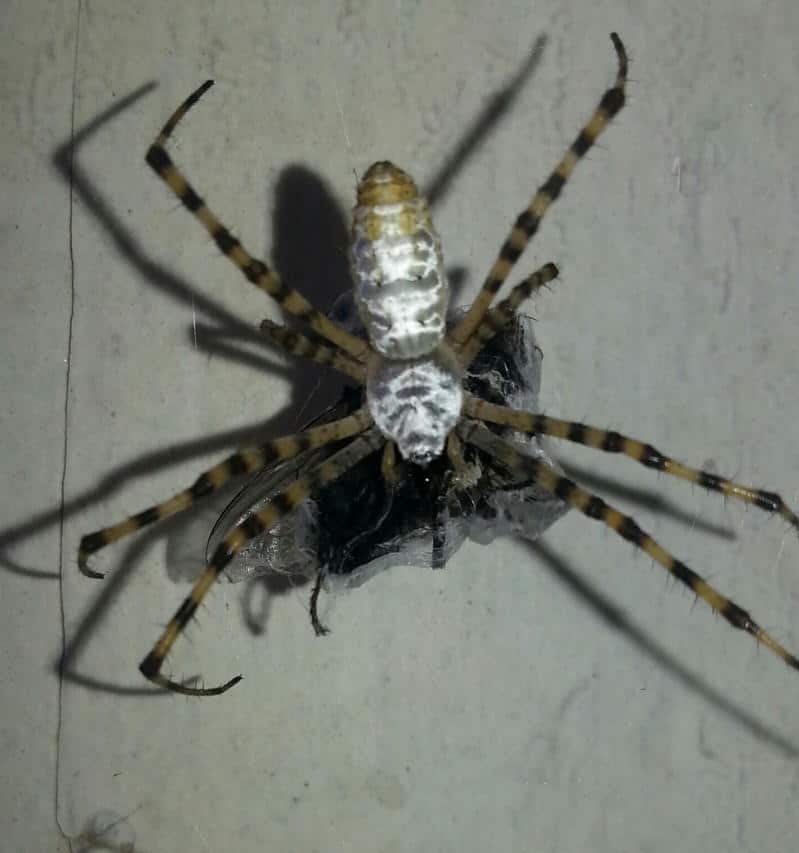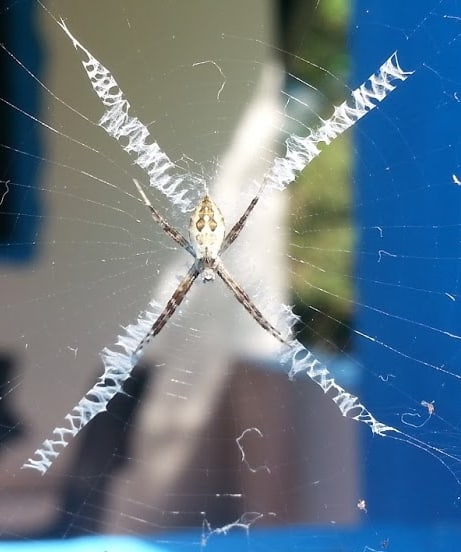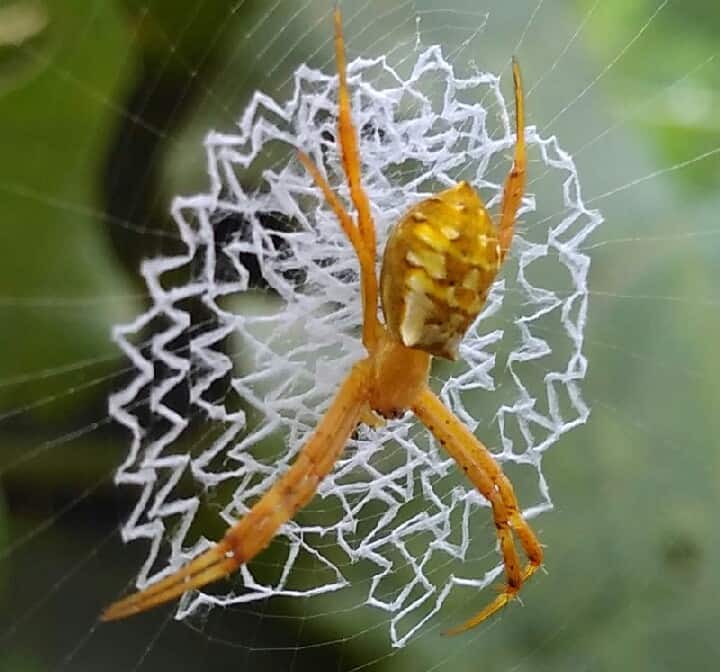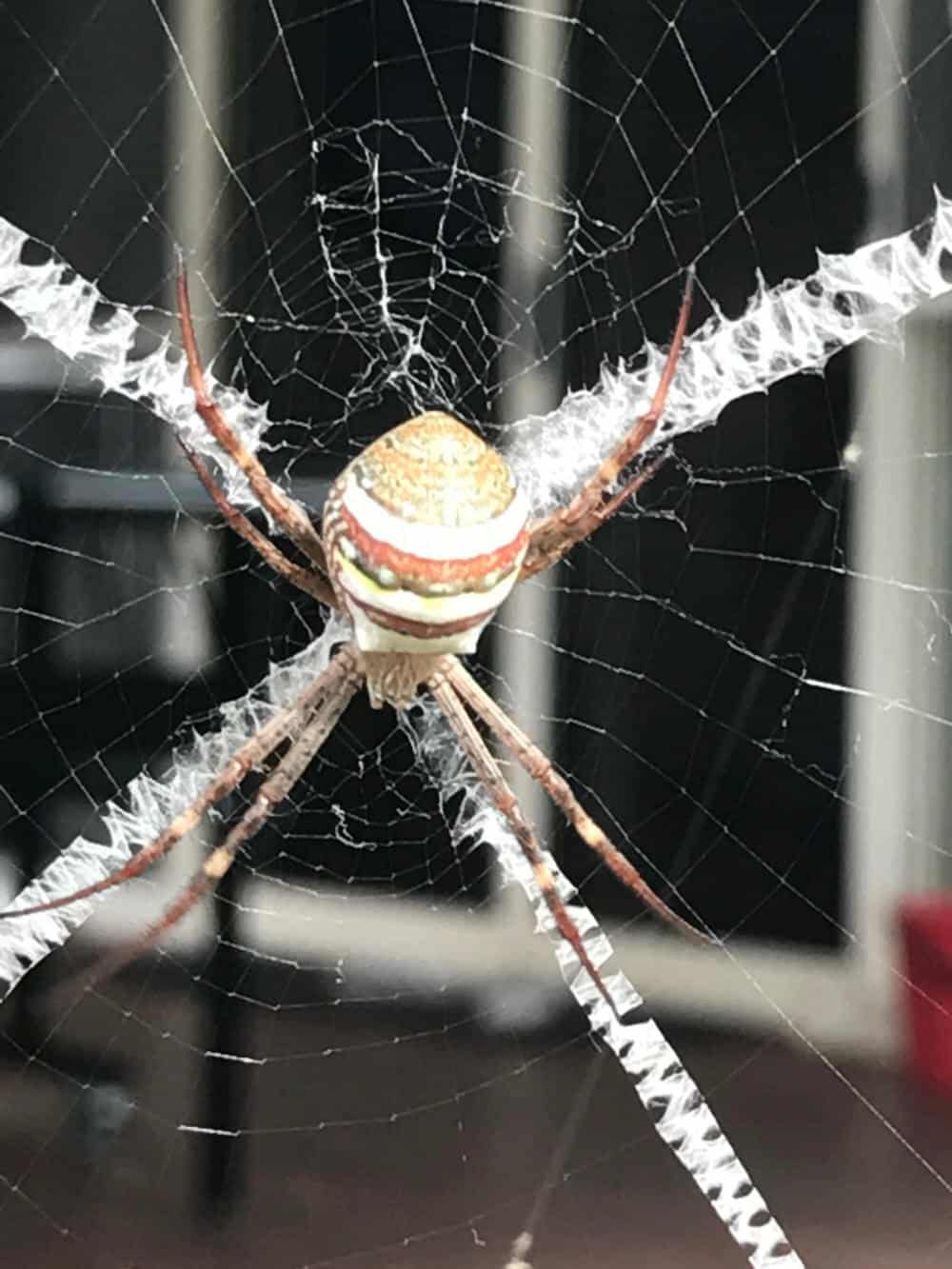Here are some photos of Argiope spiders, mainly from the United States. In Australia, we call our variety St. Andrew’s Cross but in the United States they are more commonly called a Black and Yellow Argiope, (Argiope aurantia). We have had so many queries and photos sent in of these from people who have never seen them in their area. It’s quite incredible!! They are also known as Golden Garden Spiders or just Garden Spider and their scientific name is Argiope aurantia. New page – Black and yellow argiope laying her eggs courtesy of Joe Hollner. Click here for the page and some great shots!!
Table of Contents
Black & Yellow Argiope (Argiope aurantia)
The number of emails we’ve had from people in the United States trying to identify the Black and Yellow Argiope or St Andrew’s Cross spider (as we call our Australian variety) is quite astounding!! I’ve had a lot of questions about where the Argiopes are going to, as some people have noticed that theirs has disappeared. Unfortunately this lovely spider only has a short life span and once she has produced one or more (usually no more than 3) brown, papery egg sacs, she will die. The egg sacs are roughly round in shape and up to 25 mm in diameter; each contains 300 to 1400 eggs.
She attaches her egg sacs to one side of her web, close to her resting position at the centre. Each female will watch over her eggs as long as she can, but will die in the first hard frost, if not before. The eggs hatch in Autumn ( fall), but spiderlings stay in the sac during winter and emerge in spring. (Milne and Milne 1980,Heiber 1992, Faulkner 1999). The St Andrew’s Cross Spider doesn’t have dangerous venom. Its bite causes a mild local pain. There are also other varieties of Argiopes – The Banded Argiope and Silver Argiope being two that have been sent in frequently. See their photos and information below as well as other argiopes.
Andrew’s Cross Spiders (Argiope mangal)
These spiders get their name for the way their hold their eight legs in pairs to form an X shape. The X is called the St. Andrew’s cross because it is believed that the saint was martyred on a cross of this shape rather than the conventional + shape. Besides their standard orb-web, Argiope spiders build additional white opaque zig zag lines on their webs, called stabilimentum. Sometimes the zig-zag lines match their leg positions, which lead some people to suggest that this helps give the appearance of longer legs. Some spiders build a single vertical line, yet others a patch of zig zags in the centre of the web. No matter the design, the spider sits right smack in the middle. The bite of this spider is considered harmless or at most to cause a weak local reaction. Few bites have been recorded.
Banded Argiope (Argiope trifasciata)
The largest and most striking of the orb weaving spiders is the banded Argiope spider (Argiope trifasciata). It is found in late summer and early fall among shrubbery and in gardens where they make a highly symmetrical orb web. Females are generally silvery, with dark and yellow striping. Males are rarely observed and are much smaller than the females. The banded garden spider is harmless.
Argiope Lobata
Argiope Lobata are located around the Mediterranean and is a very common species in the Iberian Peninsula and is frequently found in zones of high grass, as well as in little dense matos, in which it constructs its web. Argiope lobata is a spider of showy aspect. The females reach 18-22 mm (length of the body without appendices), the males reach only 6-8 mm. Females have a visibly flattened back-ventral, with three or four pairs of lateral wolves (a characteristic which gives it the name “lobata”) and a posterior terminal prominence; the coloration is changeable, and even so it can present transversal lists alternating black and yellow, most commonly it is almost total silver plated.
Its carapace completely is covered of small gray-silver-plated coats and the leg are long and of black colour, with changeable intensity, consistent with the phase of development of the animal. The ventral face is sprinkled with black colour, and chestnut to dark yellow. They present similar legs and carapace to the female, but without visible wolves in abdomen; it is small, and totally silver plated in the dorsal face. The web is orbicular, slightly inclined and with a stablimentum typically in a zigzag form, varying between individuals. The spider sits in the centre, with legs grouped two and two.
Gea Heptagon
This Orbweaver is a small spider, averaging about ¼ inch in length. It has no common name. Webs are built vertically, but close to the ground, and are only a few inches across. They can sometimes be seen in the clover fern (Marsilea macropodia) that functions as groundcover in sections of the garden.
Silver Argiopes (Argiope argentata)
This spider is one of nature’s many pest control agents. Its appetite for insects results in its keeping many burgeoning insect populations in check. As a group, orb-weaving spiders consume many tonnes of insects every year. You can find silver argiopes among shrubbery, tall plants and flowers in meadows and gardens. They weave a distinctive zigzag pattern within their web – an easy way to identify the presence of this particular species. They are not considered dangerous to humans although like all spiders can bite.
Argiope Appensa
Here’s some photos of Argiope Appensa. Argiope appensa is a spider that occurs on several islands in the Western Pacific Ocean. It has been introduced to Hawai’i, and is found on Taiwan and New Guinea. It inhabits a wide variety of habitats, from coasts to forests. Females reach a body length of up to 7 cm and are strikingly black and yellow, while the brown males reach only about 2 cm. In Hawai’i they are referred to as Hawaiian garden spiders’. On Guam, where Argipoe appensa is ubiquitous, it is frequently visited by Argyrodes argentatus. Locals there refer to them as banana spiders. Following the introduction of the brown tree snake and the subsequent extinction or near-extinction of many of the island’s small birds, spider populations on Guam exploded in response to decreasing predation and competition.
This species was used in episode “Exposé” of the Lost TV series, which is filmed on location in Hawai’i. It is there named Latrodectus regina (or Medusa Spider), a fictional species of widow spider, in the family Theridiidae. The “males” that run for the female are also females, as the males are much smaller. Wikipedia.
The last photo in this series is also an Argiope from Hawaii but I’m not sure of the species.
Argiope Sector
Argiope Sector is quite common in Northern Africa. It is often mixed up with lobata. The first 2 photos were sent in by viewers. The other 3 are copyright to the photographer.
Argiope Bruennichi
Argiope Bruennichi is a spider found across most of Europe and the south of England. They are very abundant in Ibiza and the South of France. Because of its markings this spider is also known as the ‘wasp-spider’. This spider builds a vertical orb web with vertical zig-zag band of silk (stabilimentum) and catches insects such as grasshoppers. This spider displays special behaviour for certain insect prey. For example, the bombadier beetle, a beetle that squirts hot gas from the tip of its abdomen could be damaging for a spider to catch. Argiope bruennichi however has a cunning strategy to overcome this problem, when a bombadier beetle lands in the spider’s web, the spider will quickly approach the beetle wrap it in silk and leave it to expend all its chemical deterrent, when the it has done this the spider will then kill and eat the beetle safely. The male of the species is much smaller and can often be seen in or near a female’s web waiting for her to complete her final moult. After her final moult the female becomes sexually mature and her chelicerae (jaws) will be soft for a short time. During this short time the male can mate with the female without fear of being eaten. This spider reaches its biggest during August when the females are full of eggs. They are harmless, though in the very unlikely event of a bite the effects are likely to be mild swelling and itching at the site of the bite. (Info: Nick’s spiders of Europe)
Other Argiopes
There are 25 known species in this genus and I have included photos of argiope that I am not sure about on this page as well as other species lke Argiope Pulchella, Argiope protensa, Argiope syrmatica and Argiope extensa. If anyone can ID these for me it would be great!!

